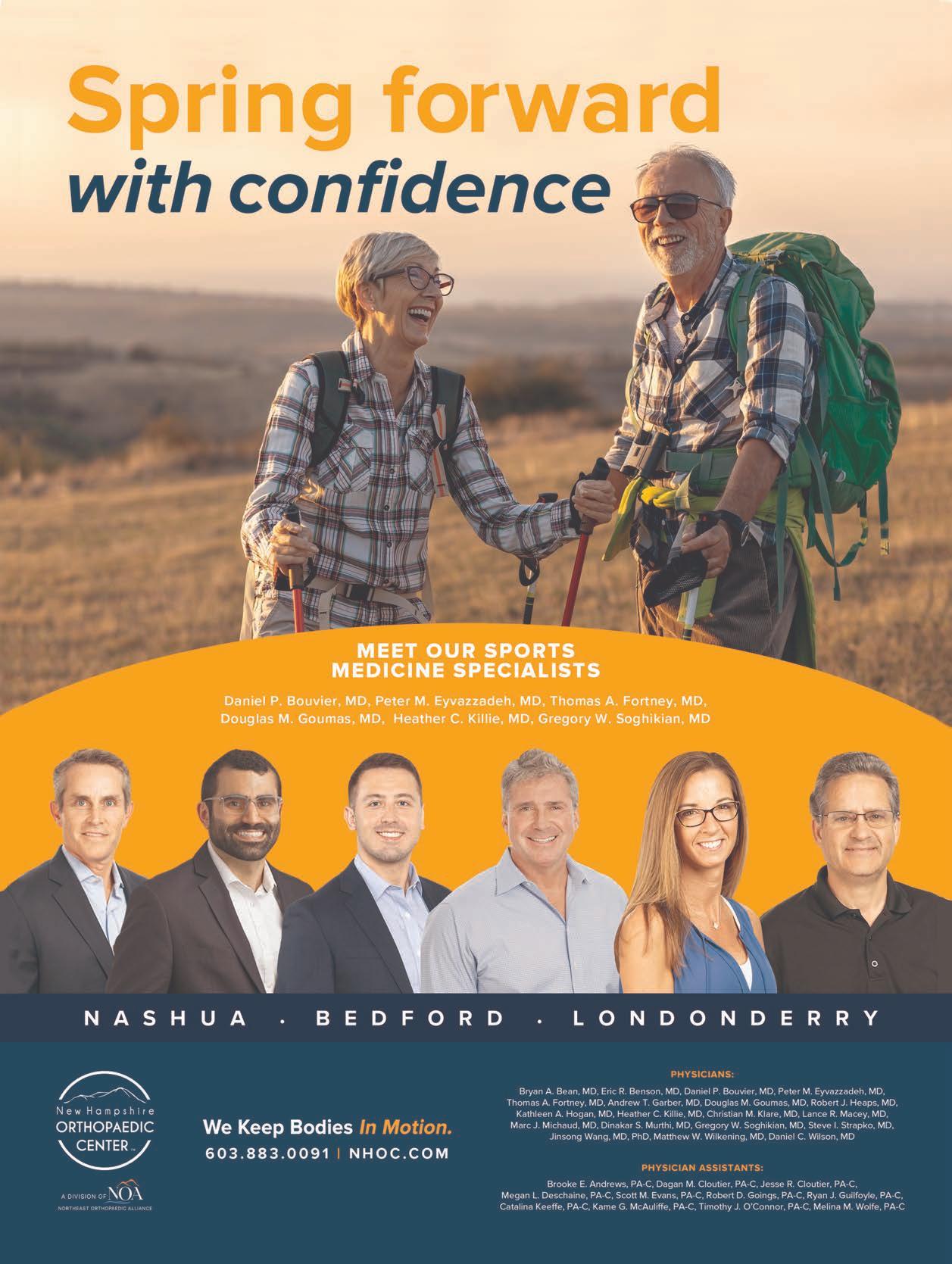

















































Finding a home at Taylor means more than access to a stunning new cottage or apartment – it means receiving the keys to present and future peace of mind.
Taylor Community is located in the beautiful Lakes Region of New Hampshire with campus locations in Laconia, Wolfeboro, and Meredith. Whether you prefer an active lifestyle lled with tness classes and an extensive lineup of social and recreational opportunities, or would rather enjoy a ne dining experience with friends after a day spent by the lake... Taylor is the place for you!










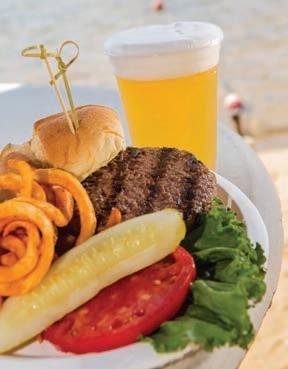


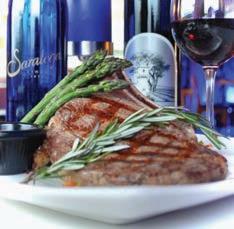

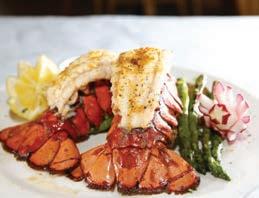












Dedicated to redefining heart and vascular care. We are committed to empowering our local communities with timely access to comprehensive, personalized heart health solutions from prevention to advanced procedures.










Cardiac Testing Coronary Artery Disease Intervention
Atrial Fibrillation Treatment
Catheter Ablation
Stroke Prevention (Watchman, Amulet)
Heart Valve Procedures (TAVR, TEER)
Arrhythmia/Heart Rhythm Treatment
Congestive Heart Failure Management
Vein & Vascular Intervention
Cardiac Rehabilitation
Hypertension Clinic






New Hampshire Magazine would like to thank our sponsors and attendees for making this year’s event a night to remember! We appreciate your support, and look forward to next year’s celebration!
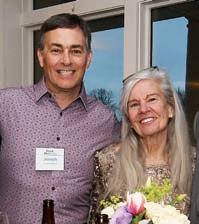




PRESENTING SPONSOR:

ADDITIONAL SUPPORT BY:
THURSDAY, MARCH 20, 2025
Manchester Country Club
Bedford, New Hampshire
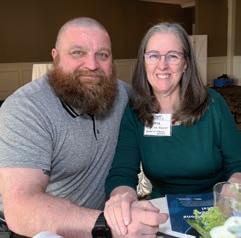










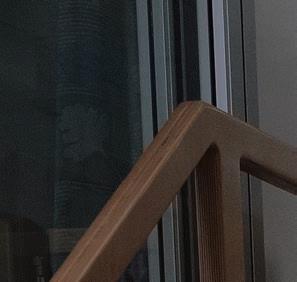






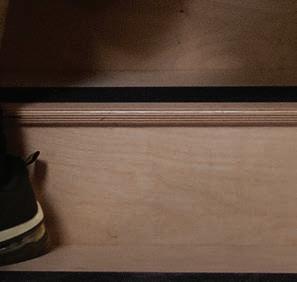
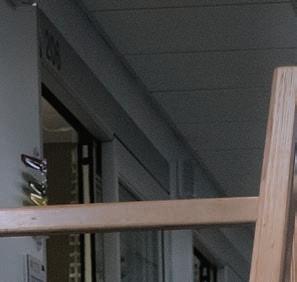

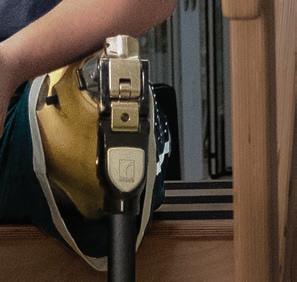
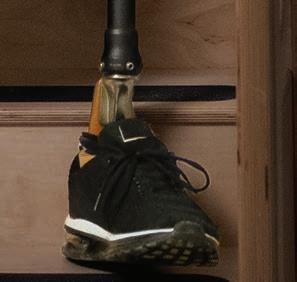

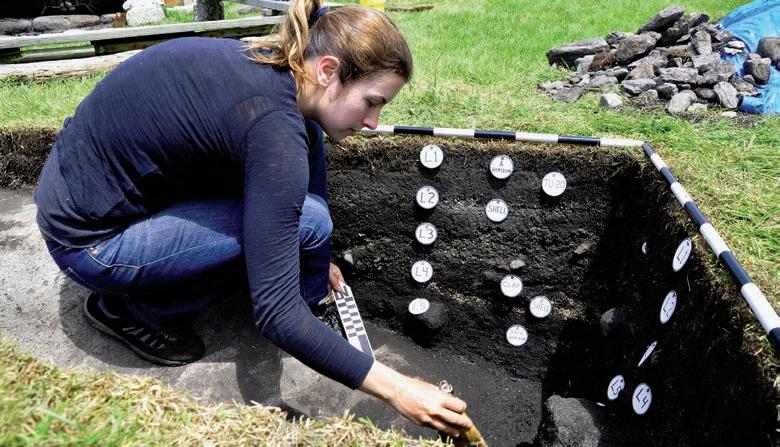

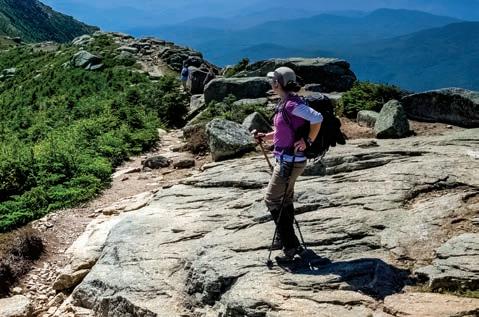
18 The Big Picture
Spring sunlight brings the pools at Sabbaday Falls to life.
Photo by Michael Blanchette
20 Savor
44 Digging the Isles of Shoals
Capt. Christopher Levett’s claim that he saw no Indigenous people as he sailed past the nine craggy Shoals islands off the Maine and New Hampshire coast became local history.
By J. Dennis Robinson
58 The Best Places in NH
Looking for an opportunity to get out and explore the Granite State, but don’t know where to start?
Check out our list of 124 eclectic stops, local treasures and hidden gems by region.
Compiled by the NH Magazine Team
74 Behind the Mic
Meet a variety of NH’s digital storytellers.
For farm-to-table Dover restaurant Stages, what’s on the menu depends on what’s available.
By Jill Armstrong
Photos by Joe Klementovich
24 Our Town
North Conway packs a whirlwind of things to do in a small place filled with maximum adventure.
By Michael Wejchert
Photos by Joe Klementovich
32 Community
Studio Lab in Derry’s efforts to revive the NH Film Office could help bring Hollywood to the Granite State.
By Elisa Gonzales Verdi
38 What Do You Know?
The Hermit of Crawford Notch
By Marshall Hudson
40 Q&A
In Their Own Words with Ken Kozick of Portsmouth’s Sheafe Street Books
By Caleb Jagoda
Photography by Liv Frost



84 Healthwise
Before you hit the trails, consider these tips to stay safe and healthy.
By Krysten Godfrey Maddocks
88 Generations
Local nonprofit Isaiah’s Place works to break the chain of homelessness.
By Lynne Snierson
92 Out and About
Calendar of events around the state.
Compiled by Elisa Gonzales Verdi
96 Live Free
The Agony and the Rockpile
By Brion O’Connor
SPECIAL ADVERTISING
28 Explore North Conway
54 Best Places




Vice President/Publisher Ernesto Burden 603-624-1442 x5117 ernestob@yankeepub.com
Editor Mike Cote 603-624-1442 x5141 mikecote@yankeepub.com
Managing Editor Emily Heidt 603-624-1442 x5115 eheidt@nhmagazine.com
Managing Editor, Sarah Pearson 603-624-1442 x5128
Custom Publications sarahekp@yankeepub.com
Assistant Editor Elisa Gonzales Verdi 603-624-1442 x5010 egonzalesverdi@nhmagazine.com
Assistant Editor Emily Reily 603-624-1442 x5119 emilyr@yankeepub.com
Art Director John R. Goodwin 603-624-1442 x5131 johng@yankeepub.com
Creative Services Director Jodie Hall 603-624-1442 x5122 jodieh@yankeepub.com
Graphic Designer Christian Seyster 603-624-1442 x5116 christians@yankeepub.com
Senior Graphic Nicole Huot 603-624-1442 x5116
Production Artist nicoleh@yankeepub.com
Director of Business Jenna Pelech 603-624-1442 x5154 Development jennap@yankeepub.com
Sales Executives Josh Auger 603-624-1442 x5144 jauger@nhmagazine.com Jessica Schooley 603-624-1442 x5143 jessicas@yankeepub.com
Operations Director Ren Chase 603-624-1442 x5114 renc@yankeepub.com
Sales & Events Coordinator Paul Milone 603-624-1442 x5121 paulm@yankeepub.com
Business & Sales Coordinator Paula Veale 603-624-1442 x5110 paulav@yankeepub.com
Digital Operations Morgen Connor 603-624-1442 x5149 and Marketing Manager morgenc@yankeepub.com
Information Manager Gail Bleakley 603-563-8111 x113 gailb@yankeepub.com
Assistant Controller Nancy Pfuntner 603-563-8111 x138 nancyp@yankeepub.com
VP/Consumer Marketing Brook Holmberg brookh@yankeepub.com
VP/Retail Sales Sherin Pierce sherinp@yankeepub.com
250 Commercial Street, Suite 4014 Manchester, NH 03101 603-624-1442, fax 603-624-1310
E-mail: editor@nhmagazine.com
Advertising: sales@nhmagazine.com
Subscription information:
Subscribe online at: nhmagazine.com or email customerservice@nhmagazine.com
To order by phone call: 877-494-2036
© 2025 Yankee Publishing, Inc.
New Hampshire Magazine® is published by Yankee Publishing, Inc., 250 Commercial Street, Suite 4014, Manchester, NH 03101, 603-624-1442. All rights reserved. Reproduction in whole or in part without the written permission of the publisher is prohibited. The publisher assumes no responsibility for any mistakes in advertisements or editorial. Statements/ opinions expressed herein do not necessarily reflect or represent those of this publication or its officers. While every effort has been made to ensure the accuracy of the information contained in this publication, Yankee Publishing, Inc.: New Hampshire Magazine disclaims all responsibility for omissions and errors. New Hampshire Magazine is published monthly, with the exception of February and April.
USPS permit number 022-604. Periodical postage paid at Manchester 03103-9651. Postmaster send address changes to: New Hampshire Magazine, P.O. Box 37900, Boone, IA 50037-0900

PRINTED IN NEW HAMPSHIRE






GET YOUR TICKETS TODAY AT THURSDAY, JUNE 26 • 6:00–8:00 P.M. FLAG HILL DISTILLERY & WINERY, LEE, NH
GENERAL ADMISSION: $65 | EARLY ACCESS, 5:30 P.M.: $85
Savor a diverse selection of culinary delights and beverages, groove to live music, and soak in the iconic New Hampshire vibes. Join us for an elegant party at one of the state’s most stunning venues. Sponsors:
harvey & harriett






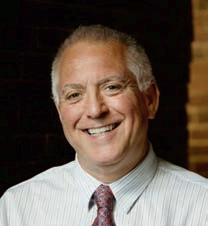
I can’t think of a better way to make a buck than to get paid to read stories.
Our team of editors at New Hampshire Magazine certainly do more than that as we work with writers and photographers to produce the articles that appear on these pages.
That said, we get to spend time with talented storytellers who do such a great job spinning a tale that we might forget for a bit that we’re supposed to be editing because we’ve gotten completely absorbed in the narrative.
Frequent contributor J. Dennis Robinson always delivers that kind of experience. The Portsmouth author, who has written more than 20 books, has a fresh approach to writing about history that challenges our preconceived notions about the past and blasts cannonballsized holes through falsehoods long accepted as fact.
When someone says, “and the rest was history,” trust Robinson to take a closer look and uncover the truth, served up with authority and sharp wit.
Robinson’s voice is well-suited to crafting historical fiction. In “Lucy’s Voice,” the newly released second entry in his “New England History Mystery” series, Robinson weaves a contemporary story about a maverick Portsmouth newspaper reporter around a mystery connected to the assassination of President Abraham Lincoln.
Reporter Claire Caswell, her husband, Corey, and their friend Levi Woodbury investigate a possible secret diary kept by New Hampshire socialite Lucy Lambert Hale and what it might contain about her one-time fiancé, John Wilkes Booth, the man who shot Lincoln.
Hale was the daughter of New Hampshire Sen. John Parker Hale, who helped found the anti-slavery Free Soil Party in 1848 and later served as minister of Spain under Lincoln. (A statue of Sen. Hale stands in front of the State House in Concord.)
While the story of Lucy Hale and her scandalous relationship with Booth is fascinating, the novel’s greatest strength lies with the story’s protagonists and their personal struggles. Robinson makes you care enough about these characters so that their pursuit of the truth and what they ultimately uncover never feels like a history lesson.
“Lucy’s Voice” is the May selection for the Music Hall Book Club in Portsmouth. (For more of Robinson’s live author events, visit jdennisrobinson.com.)
For this issue, Robinson wrote “Digging the Isle of Shoals,” an article that was adapted from his book, “Under the Isles of Shoals: Archaeology & Discovery on Smuttynose Island.”
“ Two legends have haunted the Isles of Shoals since colonial days,” Robinson begins.
Find out about them on page 44.
Our annual “Best Places” feature (page 58) has a fresh, new look thanks to artist Peter Noonan, whose illustrations anchor the “Our Town” series, and New Hampshire Magazine’s art director, John Goodwin, whose redesign tweaks can be found throughout the magazine.
For this year’s “Best Places,” our quartet of editors Emily Heidt, Elisa Gonzales Verdi, Emily Reily and yours truly present a statewide look at fun places to dine, explore, recreate and shop. It’s a great time to explore New Hampshire during that shoulder season between winter and summer, when Granite Staters can enjoy all the wonder our great state has to offer before the crowds arrive. Enjoy it now!












NHPR is now partnering with Mount Washington Observatory. Tune in daily for science-backed, statewide weather forecasts.

Send letters to Editor Mike Cote, New Hampshire Magazine, 250 Commercial St., Suite 4014, Manchester, NH 03101, or email him at editor@nhmagazine.com.
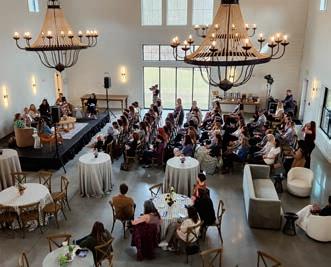
As this issue was going to press, our sister publication, NH Magazine’s BRIDE partnered with Hyla Brook Estate and Nicole Mower Events for their first sold-out networking event for New England wedding industry professionals on March 18. A brainchild of editor Emily Heidt, “The Social Hour” was a blank canvas-turned-work-of-art filled with wisdom, inspiration, connection and celebration with friends both new and old. We’re so excited to see more opportunities like it to come about in the future. Stay tuned.

Thank you to our participating sponsors:
• Hyla Brook Estate • Nicole Mower Events
• Mezzanine Catering • PEAK Event Services
• Constellation Brands — Harvey & Harriet
• Nectar & Vessel • AMR Design Studio
• Three Sisters Cake Shop • Anna Solo Photos
• The Twenty Four Diaries • Osgoode Marley
• Events United • KOHV Eyewear
Spot FOUR newts like the one here, hidden on ads in this issue, tell us where you found them and you might win a gift certificate for $50 to use at a shop or restaurant of our choosing. Each month’s gift card will be different, which adds to the overall Newt fun. Let the hunt begin!

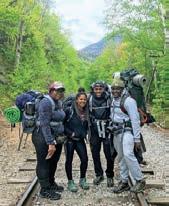









To enter our drawing for Spot the Newt, visit spotthenewt.com and fill out the online form. Or, send answers plus your name, email address and mailing address to: Spot the Newt c/o New Hampshire Magazine 250 Commercial St., Suite 4014 Manchester, NH 03101
You can also email them to newt@nhmagazine.com.
Last month’s “Spot the Newt” winner is Marlene Beaudoin of Laconia. March/April issue newts were on pages 19, 21 and 85. (One newt escaped from page 25 and has not been seen since!)


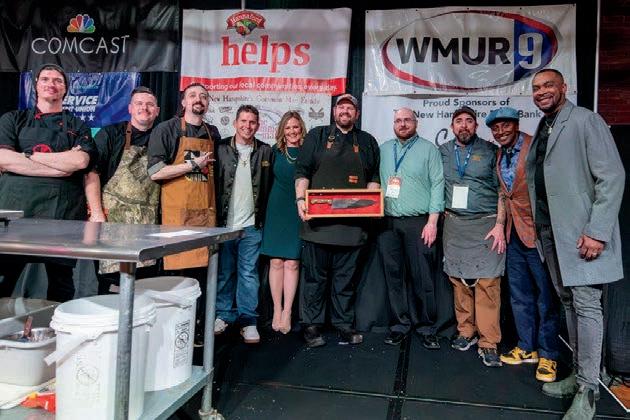






































CASA of NH would like to thank and celebrate the generous sponsors who made our annual gala, CASA Cares, possible this year. Thanks to your generosity, we can continue to recruit, train and support dedicated volunteer advocates who are making a life-changing difference for abused and neglected children.




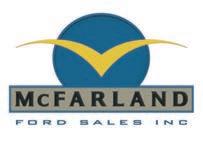











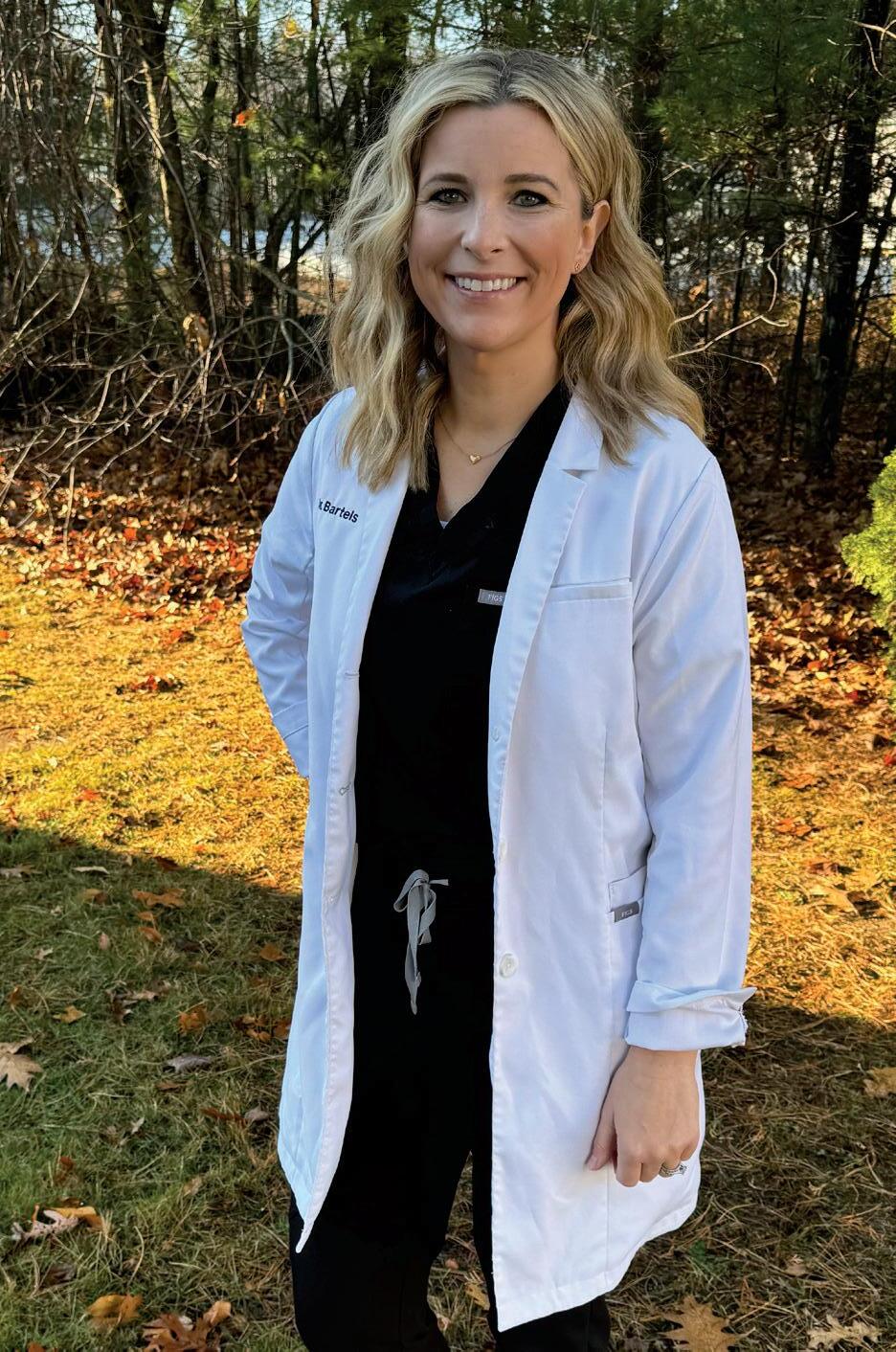
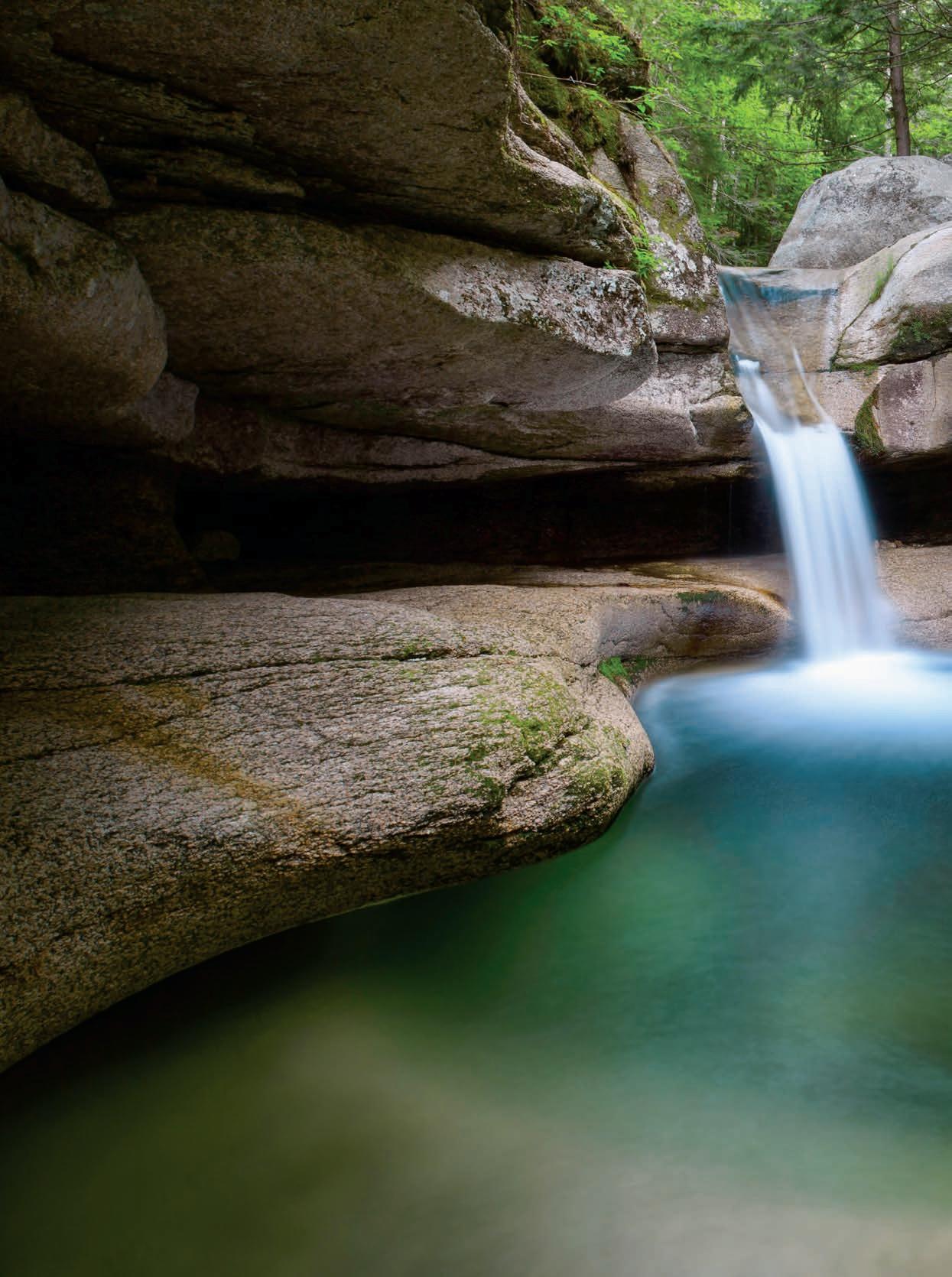
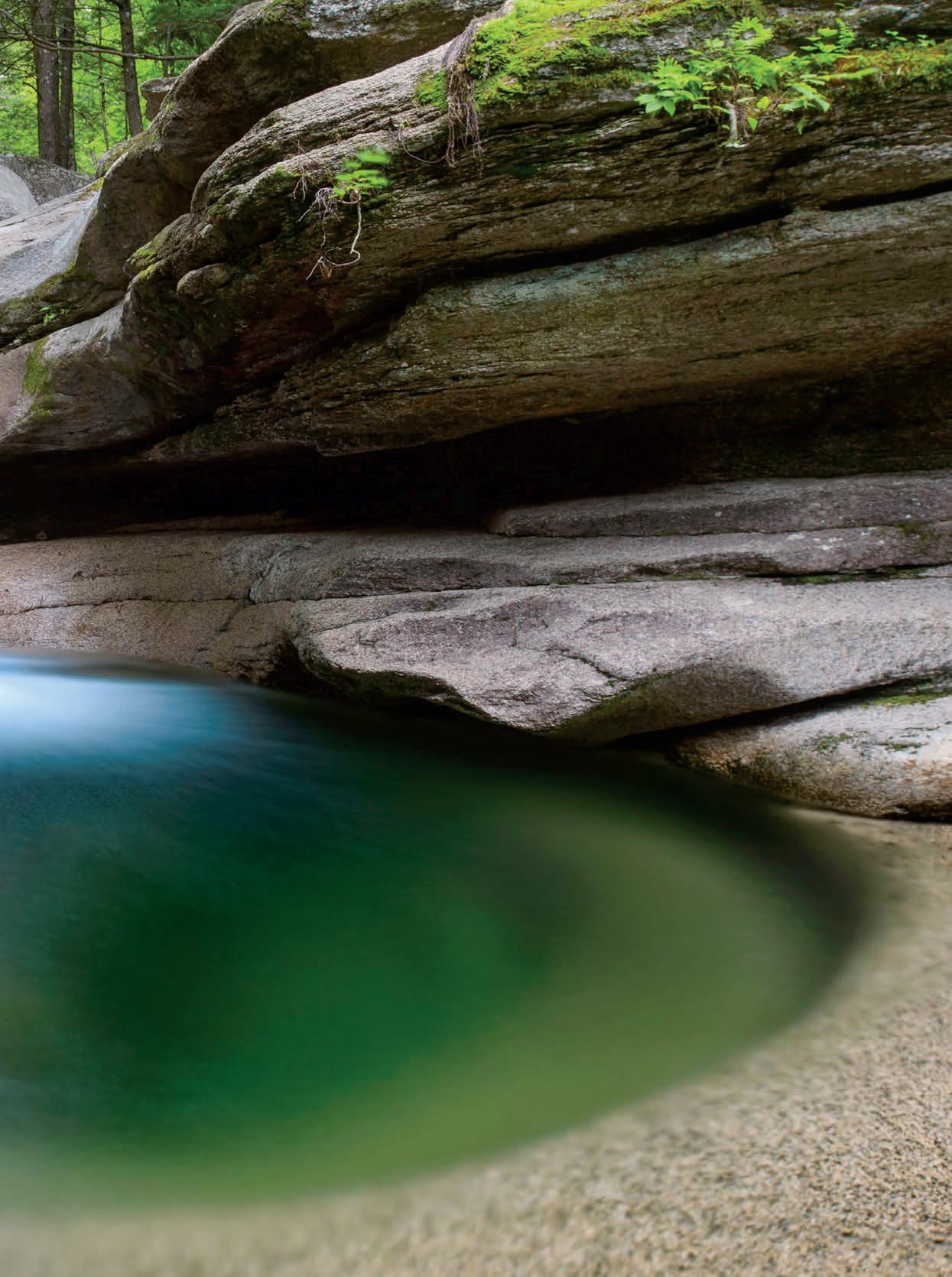
“The photo was taken at Sabbaday Falls along the Kangamagus Highway in the White Mountains. Just above the main waterfall is a ‘punchbowl’ surrounded by granit e walls. I positioned my camera very low to capture the little cascade plunging into the bowl with its blue-green waters, and the result is a pool of colorful delight.”
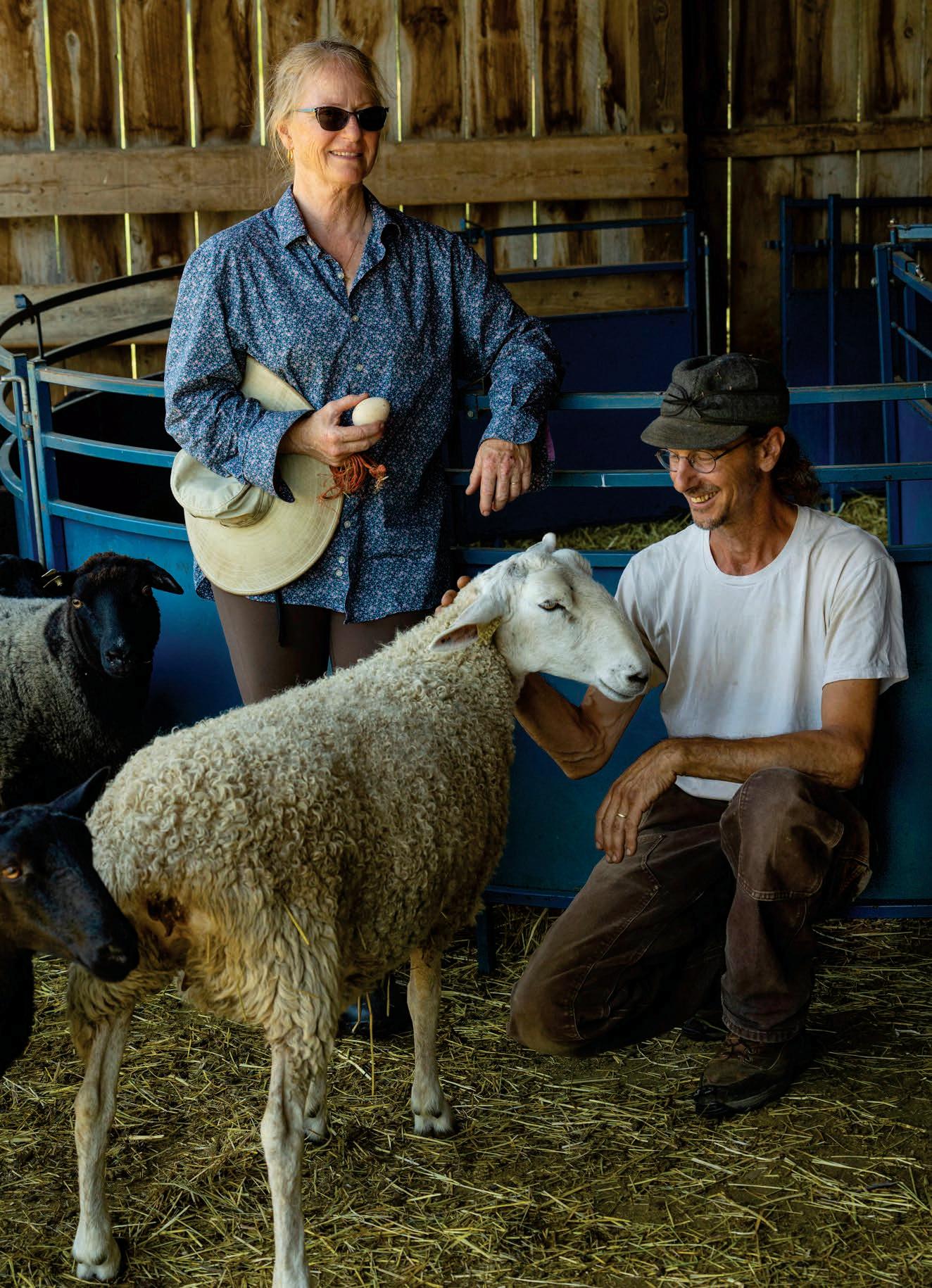
For farm-to-table restaurant Stages,what’s on the menu depends on what’s available
BY JILL ARMSTRONG / PHOTOGRAPHY BY JOE KLEMENTOVICH
Restaurants sourcing ingredients directly from farmers and other producers has become a common practice that has spread from fine dining settings to craft beer pubs. What does an authentic farm-to-table relationship look like in practice?
Evan Hennessey, the award-winning executive chef at Stages at One Washington in Dover, has developed and nurtured longstanding partnerships with New Hampshire farmers and fishermen, including NH Mushroom Company in Tamworth, Fox Point Oysters of Little Bay and the Rye-based tinned seafood company, Gulf of Maine Conservas.
Perhaps the most notable is the relationship Hennessey has sustained with Jim Czack of Loudonshire Farm in Loudon since the restaurant’s opening in 2012.
“We’ve created a great understanding as far as what Jim and the animals and the farm and the land are able to produce, what I can do, and how those two things work together,”
Hennessey said during a visit to Czack’s farm last July. “In order to get it from his farm to my table, we have to have that core understanding there. And, to me, that’s the epitome of what farm-to-table should mean.”
Hennessey and Czack’s relationship has evolved. In its current form, Hennessey pays into the farm each month — almost like a community-supported agriculture membership — which provides Czack with the money up front to raise the exact number of animals needed to serve in the restaurant. This model arose during the pandemic, offering a strategy for both businesses to survive.
“And now we’ve created this interesting
little microcosm of how the whole thing works,” Hennessey said from a crouched position inside a pen of sheep, rubbing the thick coat of an ewe as if it were a pet of his own.
The two first met at a collaborative barn dinner, where Czack’s heritage-breed Chocolate turkeys — a large variety named for their brown feathers — were featured on the menu.
“I was just blown away by all the thought that went behind what it was,” Hennessey recalled from that evening. “It was not what I was used to hearing.”
Loudonshire Farm, tended to and owned by Czack and his wife, Annette Young, is a 70-acre property nestled in the rolling green hills of Merrimack Valley. The pair raise only heritage-breed livestock, primitive animals once bred for their ability to adapt to their environments and their status as the standard in quality. With the advent of industrial agricultural practices, these animals were eventually replaced by modern, commercial breeds celebrated for their rapid growth. The pillar of Czack’s farming practices, these traditional livestock breeds — such as Emden geese, Rouen ducks and Black Welsh Mountain sheep — are rare to find.
“I think what works for me and Evan as a team is we’re both on the exact same
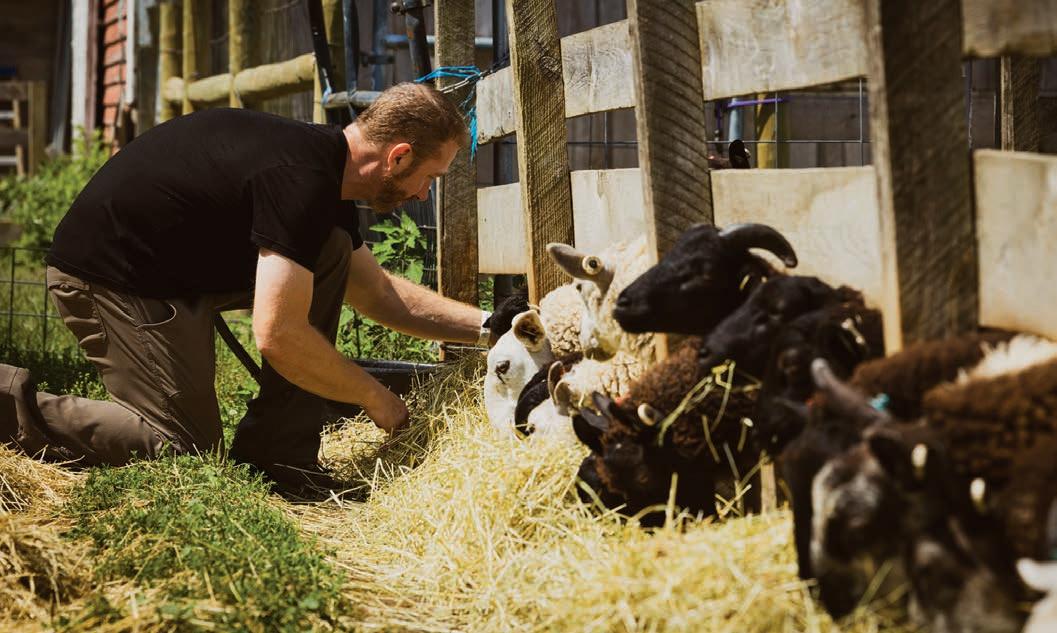
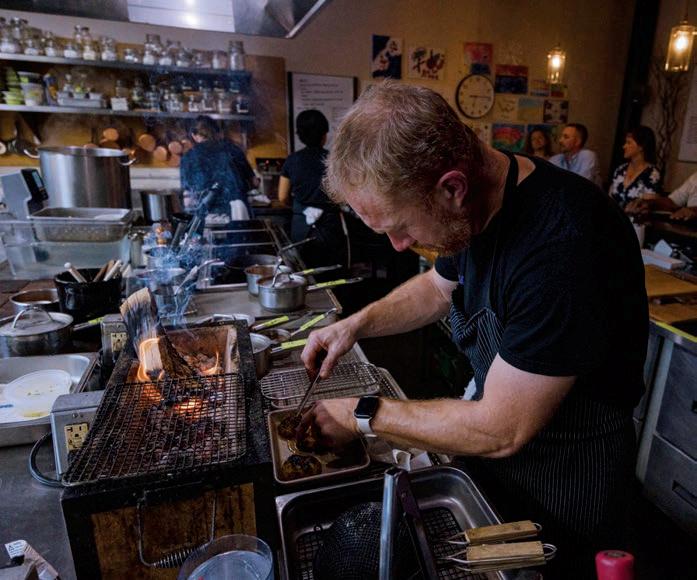
page where nothing else matters except for ultimate quality; true genuine quality without sacrifice or skirting around edges,” Czack said, leaning against the wooden slats of the pen, his brown tweed cap shading his eyes. “That quality involves a lot more expense and a lot more labor. But I actually have someone to sell that level of quality to, who appreciates it and demands it.”
Czack’s slow-growth method is a major appeal for Hennessey. For example, the White Pekin ducks Czack raises are different from the hybrid Grimaud ducks commonly found in hatcheries, developed specifically for how quickly they can be raised.
“That level of quality is the quality of finances. It’s cheaper to produce,” Czack said, referring to the commercial breeds.
Quality, for Czack, has a lot to do with the animal’s flavor profile. Instead of slaughtering his Pekin line at 42 days, Czack waits until the bird molts for the second time, which ends up being somewhere between 13 and 14 weeks.
“And that creates a totally different experience of what duck meat can be,” he said. “I think most people say they don’t like duck because they’ve never had a real duck. It’s just a different level of quality that you’re not going to get somewhere else. Even if you buy them from most local farms, they’re still raising Grimauds. That’s just the way it is.”
From the pen, Czack and Young pointed to a flock of Rouen ducks taking refuge from the afternoon sun in the shade of a parked tractor; their plumage, with its striking purple accent, resembles that of a mallard.
“ Those are his babies,” Young said before explaining how they were raised specifically for Hennessey and required upward of two years of work before they’d be available at the restaurant.
Similarly, the Black Welsh rams Czack
breeds will overwinter, requiring two seasons on the farm before they go to market.
“When you take a breed that’s developed to grow fast, they put on their muscle and then they put on that fat layer. That’s when you want to slaughter them, at that prime,” Czack said. “But if you miss that window, the muscle is still aging, and now it’s working muscle, and that’s when it starts to get tougher.”
But with the slow-grow method, Czack doesn’t face that problem. Each year, the rams lose their body condition. During the summer, they rebuild their muscle while retaining the flavor from the old muscle. “I could plate an 8-year-old ewe for you, and you’ll say, ‘That’s the best lamb I’ve ever had. I can’t believe how tender it is!’” Czack said. “And we’ve done this at the restaurant. It’s insane.”
Hennessey went on to explain this exact moment in the restaurant, sharing with guests that they were, in fact, eating an 8-year-old sheep and watching their mouths drop in disbelief.
“But it is breed-specific,” Czack was quick to add, a gaggle of Emden geese honking nearby, disrupting the conversation.
In a few weeks, six of the farm’s 12 rams would be slaughtered for Hennessey, while the other six would remain with Czack for breeding purposes.
“Evan doesn’t call and say, ‘I need 35 pounds of chops.’ Instead, he asks ‘What do you have?’ He works with what is available,” Czack said.
“Right now, we have tuna on the menu, because a buddy of mine caught the tuna,”


Hennessey continued. “When the sheep come in, the sheep come on the menu. So, we flex and flow with what we have versus the standard menu mix of like, ‘we have to have the meat, we have to have the fish, we have to have the chicken, we have to have this. We have to have that.’”
“We have an understanding,” Czack began. “Evan actually comes and picks up his order. I’m not just delivering it. Evan comes to the farm. Evan is a part of the farm. He’s here with the animals.” (At that exact moment, a sheep standing beside Hennessey bleats and he responds with a cordial “thank you.”)
“For us,” Hennessey added, “it’s taking out all the middlemen and putting the people that should be together, together.”
At Stages later that fall, Hennessey and his sous chef, Yundi Li, moved around the kitchen stirring sauces on the stove, pulling fresh biscuits from the oven, and tweezing edible flowers and herbs onto dishes just before placing them in front of guests, their movements seemingly choreographed like dancers performing a ballet.
Hennessey’s menu changes often to fit what’s available, and when guests arrive, they don’t know what they’ll be eating until they sit down. On this particular evening, the
menu included confit tomatoes in a broth of lobster accented with bright yellow flowers and served in a warmed earthenware pot; a dish of grilled peaches over hatch hog mushrooms — supplied by a local forager — corn, and a warm vinaigrette of sheep jus and black truffle; and grilled sheep loin from Czack’s farm paired with sweet cantaloupe, the mild spice of Jimmy Nardello peppers, and a light foam of razor clam juice.
“Everything we do is about the food that’s around us versus hand-picking a couple of little local items to highlight,” Hennessey said between courses while guests at the single six-seat bar that overlooked the open kitchen savored every bite. “Everything we do is like that. Take the sheep, for example. We’ll showcase a bigger dish with the loins now. And we’re doing that with the cantaloupes. They’re a ‘right here, right now’ thing. And then as the seasons go on, that cut in the dish will change with maybe some other vegetable or something that we’ve preserved to go along with it.”
When Hennessey receives animals from the farm, he relies on a variety of culinary methods to use every part of the animal. Bones might be used to make stocks while certain cuts of the animal might be spiced and smoked to use on the preservation trays
in The Living Room, a cozy, cocktail lounge separate from the dining area that serves small bites to patrons looking for a more casual experience.
Hennessey and staff have also learned the ancient technique of garum-making to use parts of the animal that might otherwise be thrown out. Although garum is traditionally made from small, salted fish, Hennessey inoculates sheep organs with koji rice — an ingredient that aids in the fermentation process — to create a dark, rich sauce used to season various dishes.
This evening, Hennessey cooked the backstrap of Czack’s Black Welsh sheep in grilled oil. He then briefly grilled the loin over an open fire, small pieces of birchwood ignited below, before glazing the meat.
“Understanding how the animal grows and how it changes as it grows is key to, at least on my end, how to cook,” he said, checking the bottom of the meat before turning it over with a pair of tongs. “My portion of this is tiny. I mean you’re looking at hundreds, or thousands, of years of animals, of life and how it got to be here. And my job is to not screw it up.”
As they served each dish across the bar, Hennessey and Li described the components to their guests, including where the ingredients were sourced.
“I think in terms of the education of our guests, this is when the magic light comes on, and we get to go into this beautiful story about these slow-growers, how the muscle works and how the fat happens, and how we’ve learned to change our cooking methods in accordance with the animal,” Hennessey said. “This has shaped how we cook.”
This awareness informs the people who dine in his restaurant as well as staff, interns and other guest chefs.
“I won’t be here forever. My hope, our hope, is that all this is handed to the next generation of chefs,” Hennessey said. “And the best way for them to understand it is to see it.”
As the dinner service came to a close, Hennessey went on to share a fond memory of such a visit: eating freshly baked bread with raw butter in Czack’s red barn, brown Irish Dexter cows in green fields under a blue sky, the idyllic pastoral setting, in view.
Moments he knows his staff can appreciate.
“I think they’re able to slow down and actually see how things should be,” Hennessey said. NH
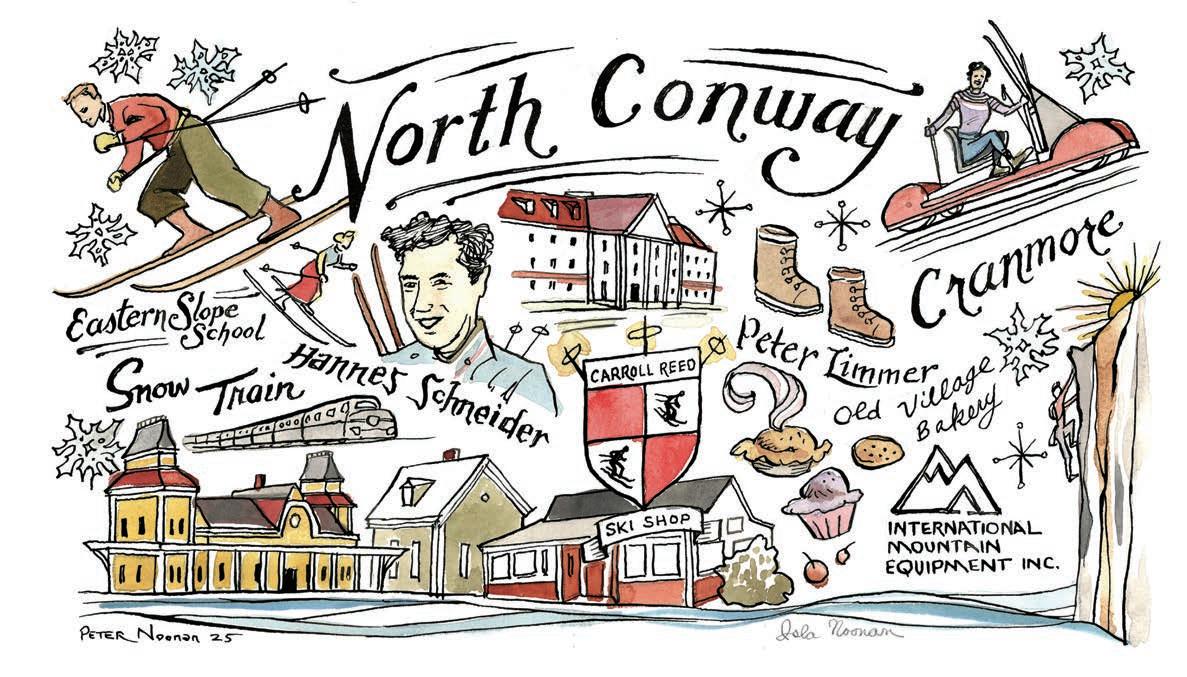
BY MICHAEL WEJCHERT / ILLUSTRATION BY PETER NOONAN PHOTOGRAPHY BY JOE KLEMENTOVICH
On Feb. 11, 1939, a tall, leather-tanned Austrian named Hannes Schneider walked off the train from Boston and onto the fields of what is now Schouler Park in downtown North Conway. Thousands of miles away from the sleepy North C nnnnnnbbountry village, a war was brewing; Hitler had annexed Austria the year before.
Schneider was one of the most accomplished skiers and instructors in the Alps, and American celebrities and athletes flocked to his school at St. Anton. He was also an outspoken critic of the Nazi party, and he’d been arrested shortly after the invasion.
Now, Schneider took a glance up toward the stunted, undulating terrain that rose above North Conway’s placid streets.
“He thought he was going to be teaching on Mount Washington,” Stefi Hastings, whose
father, Carroll Reed, founded the Eastern Slope Ski School in 1936, tells me.
Instead, Schneider found himself staring at Cranmore, its gentle, wooded slopes rising a mere 1,200 feet above town, the venue where he was slated to help bring European mountain culture to the United States. To one accustomed to the sweeping vistas of the alps, that first glimpse of Cranmore must have been a letdown.
“He had a chance to go back to Austria after the war,” Hastings says. “But he said no — staying in America.”
That afternoon, Schneider and his son Herbert toured Cranmore for the first time, and Schneider stopped halfway down his first run at the mountain that would soon cement his legacy. “Well, Herbert,” he said, “It’s not St. Anton, but we’re going to love it here.”
In the course of a few hours, it’s likely Schneider had already figured out what locals and visitors still love about North Conway: Its small size isn’t a detriment — it’s a way to cram maximum adventure into each day.
I’ve lived in North Conway for 18 years, but I’m still appreciative of the town’s slalom between work and play; the ebb and flow of visitors coming to enjoy the mountains and the quiet moments in between.
Today I’m skinning, my skis pointed uphill, to Cranmore’s summit to sneak a few ski laps in before work. It’s chucking snow. The occasional local schusses past me, and the snow blankets the sound of plow trucks below while the lift churns its low hum in the background. I’ve only got two hours to spare, and the time crunch quickens my pace. On top, I rip the skins off my skis, put my goggles on and prepare to descend.
Before I can, though, I bump into a buddy who’s showed up with his two kids, who have been making the most of canceled school by spending all day at the terrain park. It’s not a shocking
development: Live here long enough, and it’s hard to ski, climb, hike, bike or run without running into someone you know doing the same thing.
North Conway was already undergoing its revolution as a skiing hub when Schneider arrived. And Carroll Reed, Stefi Hastings’ father, was one of the locals who kicked things into high gear. In 1934, the passionate young skier slipped on a patch of ice heading down the Wildcat Valley Ski Trail; the resulting fall broke his back. Doctors told him he would never walk again. But recovering in Memorial Hospital, Reed had plenty of time to think.
“Dad’s thinking, ‘Gosh, if I had gone to ski school, maybe I wouldn’t have had this horrible accident.’ That kind of gave him an idea,” Hastings says. Miraculously, Reed bucked doctors’ predictions and taught himself to walk again using crutches. He also decided
to form the school he wished he’d had.
Soon, Reed imported ace Austrian Benno Rybizka — and a few New Hampshire locals — to serve as teachers.
“Dad basically raided the local hockey team ... to get together ski instructors,” Hastings recalls. At the same time, Reed purchased ski inventory from Saks Fifth Avenue and set up his own shop — Carroll Reed Ski Shop — in downtown North Conway.
By 1937, Reed had sold the school to Harvey Dow Gibson, who had also bought Lookout Mountain in North Conway, which he renamed Mount Cranmore. Gibson, a North Conway native, had worked his way through the financial world to become president of the Manufacturers Trust Company in New York, but he still held skiing close to his heart.
It was Gibson, spurred on by Reed and others, who negotiated for Schneider’s release from Nazi imprisonment. The move would
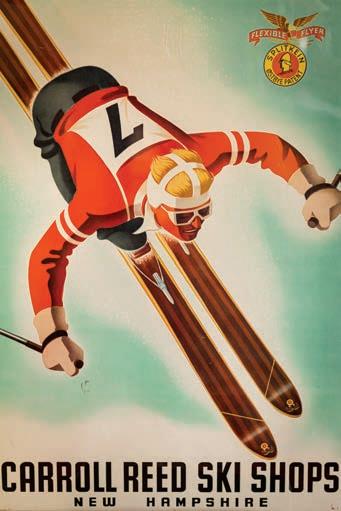

forever change skiing in America and cement North Conway as New England’s adventure hub.
The hills, rivers and cliffs of North Conway offer more than skiing, too. Cathedral and Whitehorse ledges offer unparalleled access to rock climbing “a three-minute drive down the street,” according to Brady Callahan, manager of International Mountain Equipment (IME), across the road from where Carroll Reed’s shop outfitted skiers during the town’s ski renaissance.
IME’s owner, Rick Wilcox, bought the downtown store in 1979. “I took a second mortgage on my house to get money for inventory,” Wilcox says with a laugh. But, like many independent businesses downtown, IME has become a fixture, part of the fun of visiting downtown.
“This town lives with the mountains,” Callahan says. “No matter what you’re doing, everything is focused off the resources the mountains provide.” And no business is just a business: Wilcox founded the Mountain Rescue Service in 1972, and its volunteers still meet upstairs at IME over a half-century later. “I always felt my payback to the community was Mountain Rescue,” Wilcox says. “I take a huge pride in it.”
A few blocks away from IME, Mark Ross-Parent and Margaret Graciano are

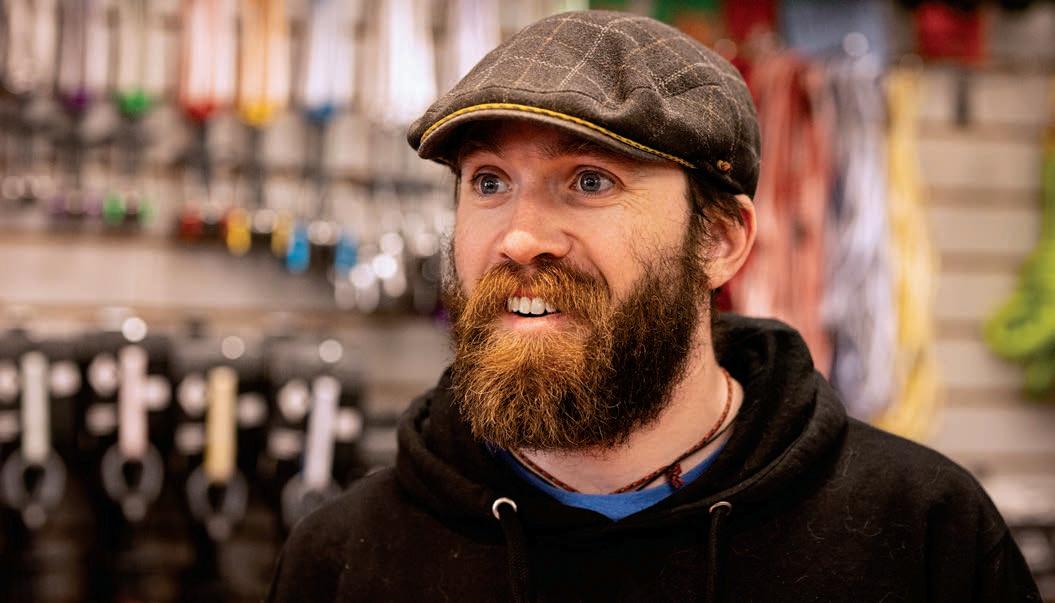
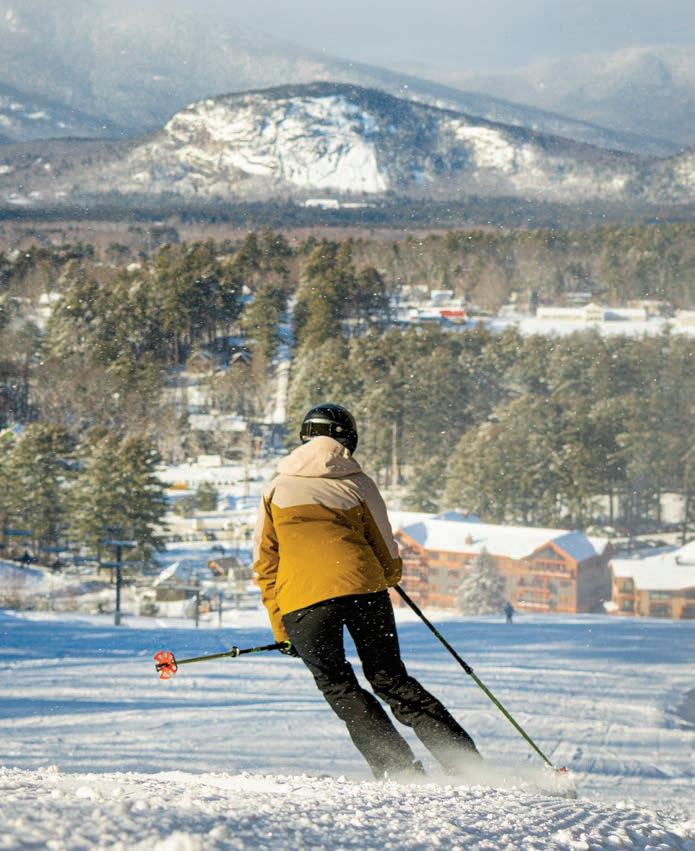
rolling croissant dough and taking the day’s baguettes out of the oven at Old Village Bakery (OVB). Ross-Parent, who moved to the valley in 1995, started the bakery in 2002. Tucked off the main drag, OVB is a local’s secret haunt.
The bell on the door constantly chimes as another customer’s senses are pleasantly overwhelmed by the indescribable smell of North Conway’s finest baked goods. Lee Grady, who has worked here for a decade, knows pretty much all of them by name.
“It’s a pretty supportive valley,” Ross-Parent says. “We’ve seen a couple of generations come through here.” Most of the bakery’s employees and customers are on their way toward — or returning from — doing something outside.
Baker Nate Iannuccillo, one of North Conway’s best rock climbers, walks in, fresh off having climbed one of New Hampshire’s most difficult routes, even though it’s March. “The mountains and the landscape are a big part of it,” he says of moving to the valley full time, “but it’s also the people here.”
Graciano, who is now co-owner along
with Ross-Parent, echoes what makes this adventure town and its inhabitants so special.
“I’ve met so many people by working here.”
Graciano’s co-ownership is the result of this close-knit community and the loyalty it engenders. “I would have never opened my own
bakery in this town to compete with Mark,” she adds — although she is plenty competitive in the mountains, having been on multiple winning teams for Mount Washington’s Tuckerman Inferno race, which first took place in 1939, when Austrian ski instructor Toni Matt, a protege of Schneider’s, rocketed from summit to parking lot in 6 minutes and 39 seconds.
The snow keeps pelting down, and for another hour, I take the lift up and down Cranmore’s slopes. Its ski runs — many named to honor the little mountain’s fascinating past — are chock-full of kids from the Eastern Slope Ski Club, founded the year of Schneider’s arrival to help local youth learn to ski.
“ The valley was so small and supportive,” Stefi Hastings tells me. “My mom would drop me off at Cranmore, and I would spend the whole morning ... right there. The ski instructors all knew me .. that was our daycare.”
A speedy quad might have replaced the original “skimobile” lift long ago, but the mountain’s sense of community remains. On the way back to the parking lot, happy to have snuck in outside time before heading to work, I pass the statue of Schneider, midturn, at the base of the mountain.
To someone who’s never visited here, maybe the skimeister’s decision to remain in the smaller, sheltered hills of New Hampshire seems like an odd one. Spend a day or two in North Conway, though, and it will all make sense. NH




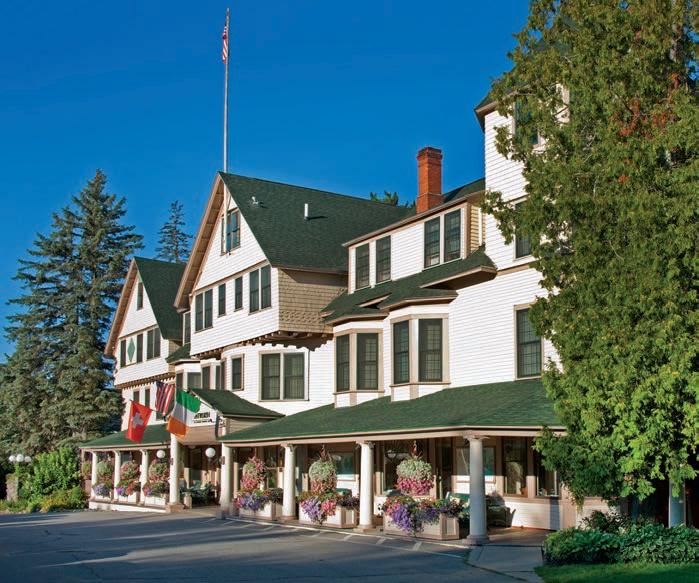

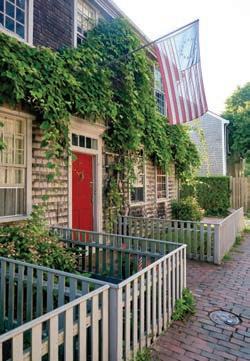
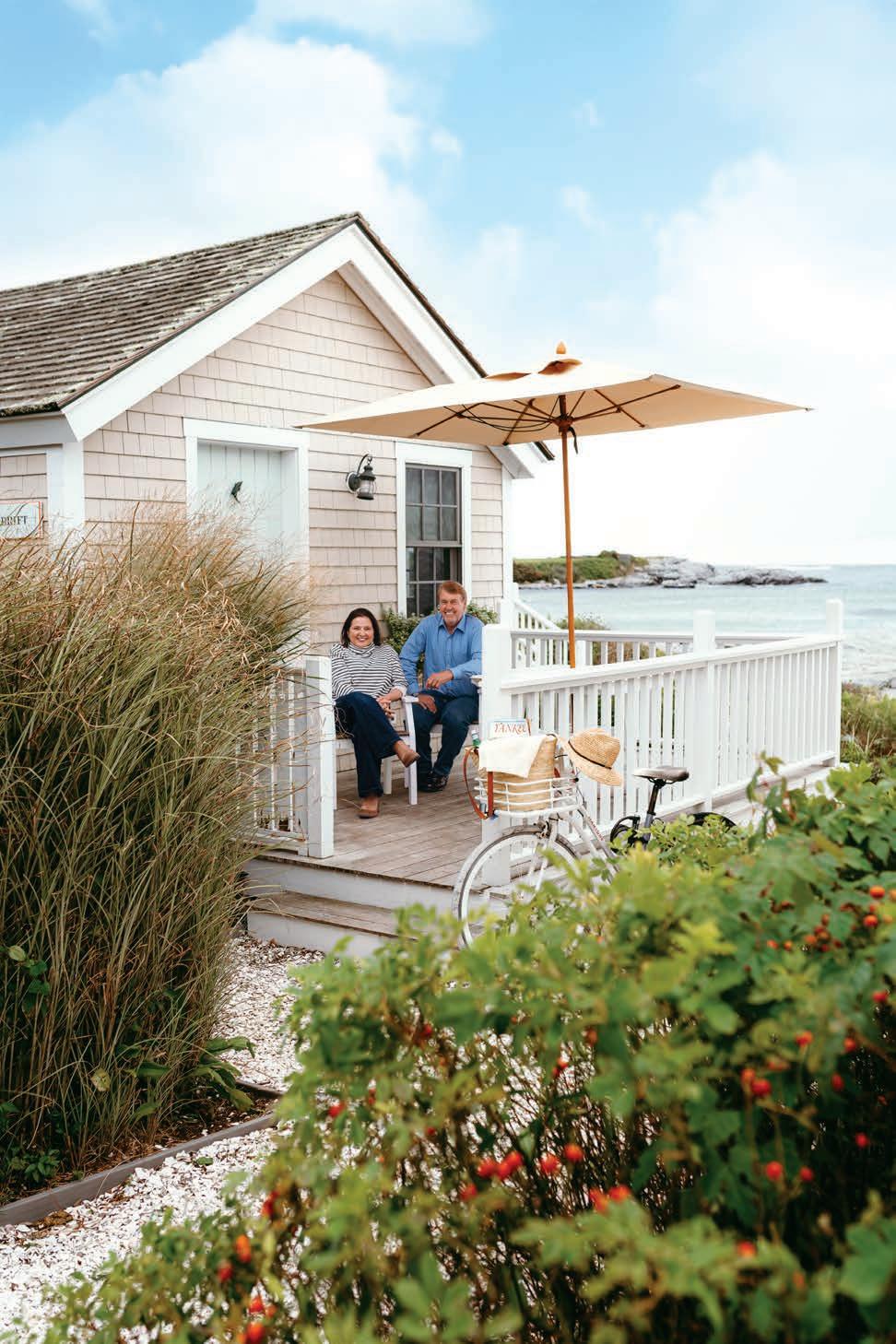






APlanning for retirement isn’t just about saving money—it’s about securing your future so you can enjoy life to the fullest. While it requires commitment, financial professionals can help keep you on track. Start saving early, even if it’s a small amount. You’ll likely need 70-90% of your pre-retirement income, so take advantage of compound growth by increasing contributions over time. Maximize your 401(k), especially if your employer offers matching contributions, or open an IRA for tax benefits. Maintain separate emergency and vacation savings to
avoid tapping into retirement funds. As you age, plan for healthcare costs with a Health Savings Account (HSA) if eligible. Social Security benefits can supplement your income, so research the best time to claim them.
A financial planner can guide you on tax strategies and investment choices that align with your goals. Additionally, creating a retirement budget helps ensure you’re financially prepared for the lifestyle you want.
The earlier you take action, the more freedom you’ll have in retirement. Start today—your future self will thank you!

AEconomic uncertainty can create turbulence in financial markets, making asset protection a top priority for investors. While eliminating risk entirely is impossible, strategic diversification is key to managing portfolio risk and ensuring long-term financial stability.
Diversification involves spreading investments across different asset classes, industries, and regions to reduce exposure to any single downturn. If your portfolio is concentrated in one sector—such as technology—a decline in that industry could lead to significant losses. However, diversifying can help minimize risk:
By sector: Technology, healthcare, consumer goods
By region: U.S., Europe, emerging markets
By asset type: Stocks, bonds, alternatives
This approach helps smooth out volatility and protect against economic shifts. History shows that markets recover over time, rewarding those who maintain a disciplined, long-term perspective rather than reacting impulsively to short-term fluctuations.
To further strengthen your financial security, consider consulting a Financial Advisor. A professional can assess your situation, set clear goals, and create a tailored, diversified strategy to help safeguard your assets and maximize growth—ensuring you stay on track even in uncertain times.
Start building resilience today. A well-structured portfolio can weather any storm.




Paul Zepf, VP - Wealth Advisor


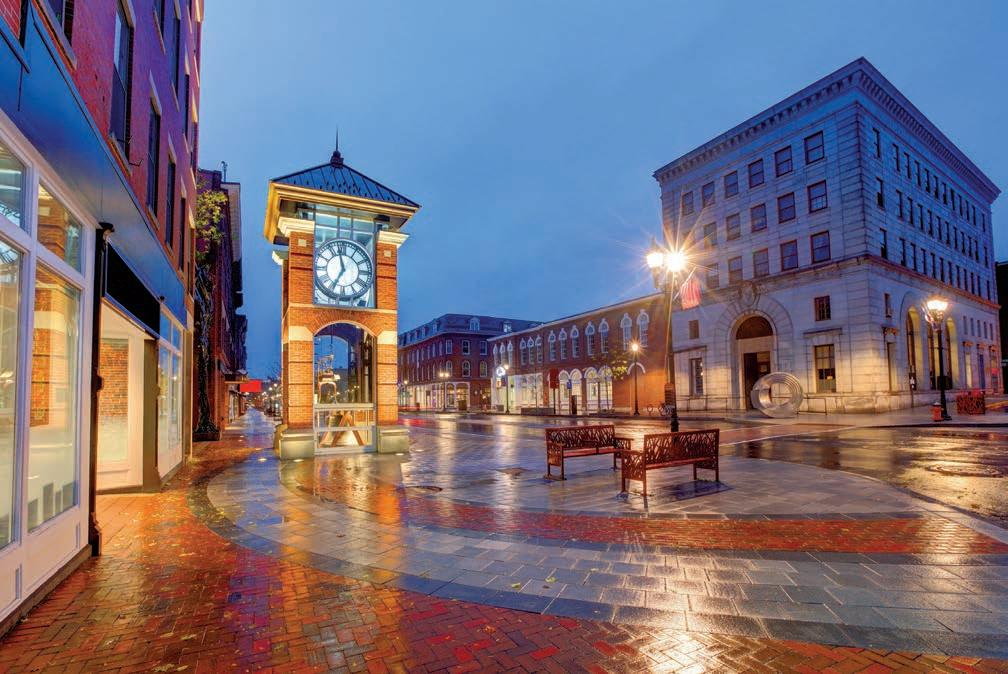
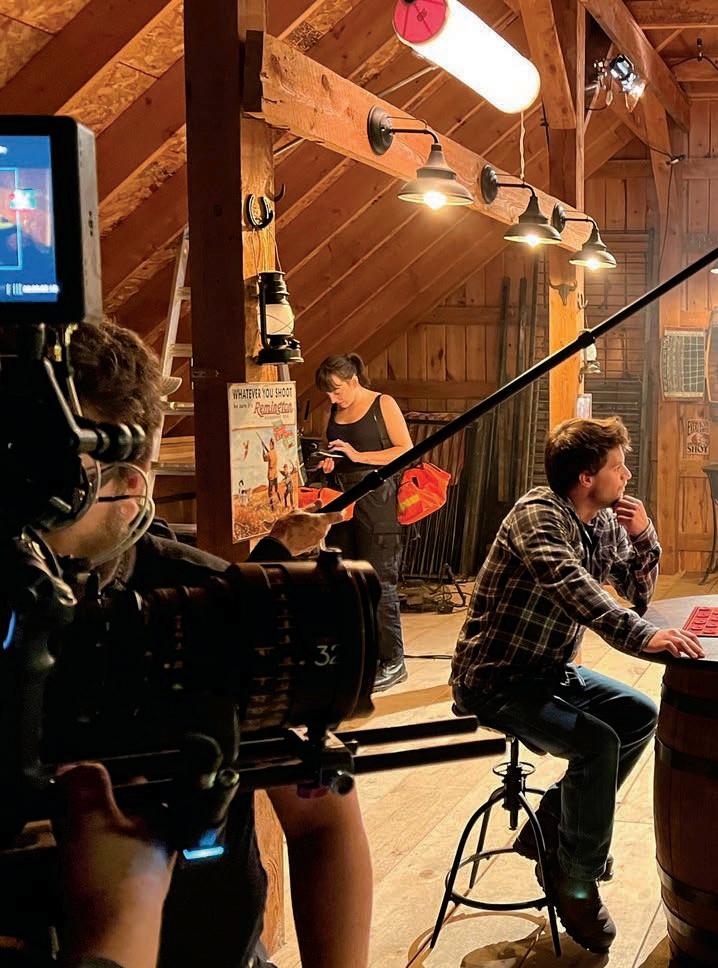
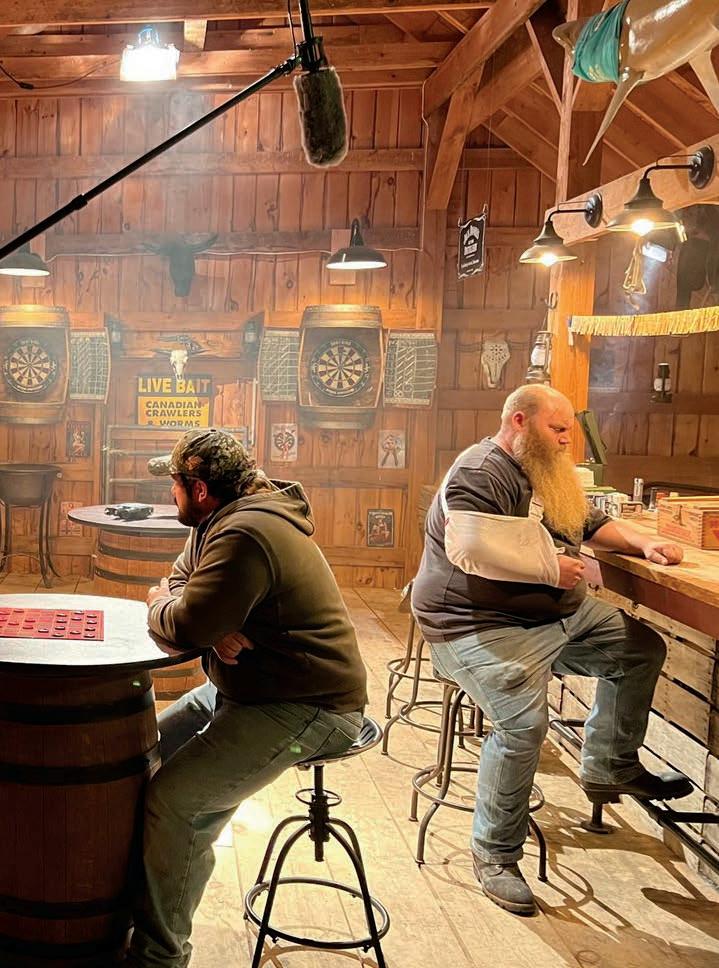
New Hampshire is ready for its time on the silver screen. With its thriving arts community, diverse landscape and ease of accessibility, you would think that the Granite State would be a prime filming location for blockbuster movies.
That hasn’t been the case. In 2021, the New Hampshire Film Office was voted off the state’s budget, cementing New Hampshire as one of a handful of states with no way to market themselves as a filming location. A grassroots campaign, started by Tim Messina, owner of Studio Lab in Derry, and Carolyn Leary, Studio Lab’s director of business development, is looking to change that.
As professionals in the film and entertainment industry, the closing of New Hampshire’s Film Office was challenging. A state film office acts as a database of local talent, locations and professionals; when a filming location is being considered, producers and directors will go through the state film office to figure out how they can shoot there.
Producers want to know how accessible a location is, if there are any permits they need to apply for, and what talent (both on- and off-screen) is in the area already. The film office is also responsible for marketing their state. Representatives from the office will go to screenings and film festivals to attract business.
With the New Hampshire Film Office out of the state budget, the New Hampshire film industry is essentially cut off from the rest of the industry, making it much harder for feature films and television shows to be shot here.
“We were all defeated,” Messina said. “We were told that if (the Film Office closing) happens, it would be almost impossible to bring back. We couldn’t just let this sit by the wayside, because our livelihood depends on this working.”
With no central office for industry professionals to connect, Messina decided to host Studio Lab’s first Industry Night. On the first Thursday of the month, Studio Lab hosts a gathering of anyone and everyone in the film and entertainment industry to give them a chance to connect with each other over a burger and a beer. It was there that the idea for Senate Bill 286 was born.
The bill proposes that the New Hampshire Film Office be reinstated with a least two staff members, rather than the one-person venture it was before. Within the new structure, an

internal liaison would oversee the talent database, know which locations in New Hampshire would be a good fit for the project, and would help the filmmakers navigate permits and booking. The second person would focus on selling New Hampshire as a desirable filming location.
“This state is so rich with the natural landscape,” said Music Hall and New Hampshire Film Festival CEO Tina Sawtelle. “Even though we have a very small coastline, it’s very quaint and beautiful. As you traverse into our towns, you see these quintessential New England towns from the southern parts all the way up to the northern parts of our state.
“Then there are the mountains, rivers, lakes and forests. Our natural resources are amazing. Then, when you start to talk with local filmmakers, they’re talking
about our airports.”
In any movie or TV show with an airport scene, a major airport like Boston Logan is being used. With an immense amount of coordination, a terminal in that airport has to be booked and cleared for filming, and actors and crew members need to go through security in an already busy airport.
Smaller airports, like Manchester-Boston Regional Airport, can offer a less expensive, less chaotic day of filming, because their size gives them more flexibility. Plus, filming at a regional airport helps its economic growth.
SB 286 also proposes a filming tax incentive. While the details are still being ironed out, most states offer a tax incentive to encourage filming in their state.
New Hampshire is currently the only state in New England that doesn’t offer any tax incentive for filming, which is causing the


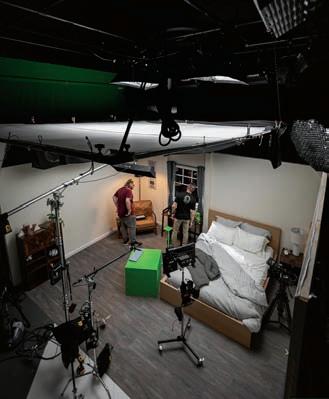
“People are excited about how we can grow New Hampshire and make it a really exciting, vibrant place for people to want to stay, move to, raise their families... Film is definitely an opportunity to do that .”
— CAROLYN LEARY
state to be skipped over.
From an industry standpoint, Oscarwinning producer and New Hampshire native Chris Stinson knows that a tax incentive is vitally important to promoting filming in New Hampshire for large and local films.
“In a nutshell, it’s just a percentage back of what you’ve spent. Mass. has one of the better tax incentives, and it’s one of the easier ones to understand,” Stinson said.
“It’s a real basic 25% of whatever you spend you can get back. Let’s say you spend $10 million. Your check back is for $2.5 million as a ‘thank you for coming.’”
Stinson also mentioned that a $100 million Apple TV series that he is working on passed over filming in New Hampshire to instead film a few scenes in Maine because of New Hampshire’s lack of film office and tax incentives.
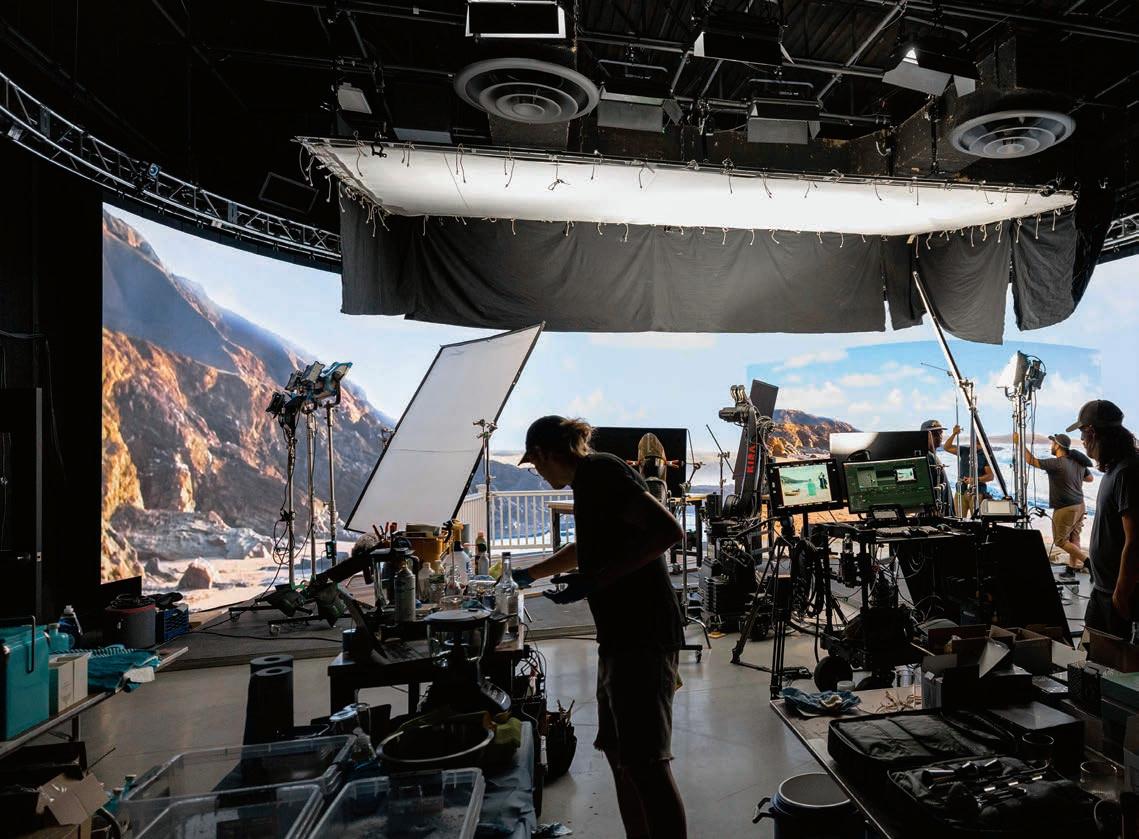
“Had there been somebody to call, maybe part of that Apple series would be prepping locations in New Hampshire right now,” he said, “It’d be nice to have the option (to film in NH), but right now I don’t.”
While there are a lot of people in New Hampshire already working in the film industry, or looking to break into it, they must move elsewhere to work because they aren’t able to work here.
Messina is looking to change that through boosting filming in New Hampshire, and Stinson is onboard.
“I think about 19-year-old me who had to go to L.A. because there was nothing here. If there was more of an industry here, (younger generations) wouldn’t have to (move to New York or L.A.),” he said. “Maybe they’d be in an industry (here) that they really love and is thriving, which helps the local economy.”
New Hampshire’s film and entertainment industry isn’t the only one to benefit from an increase in filming.
“People are excited about how we can grow New Hampshire and make it a really exciting, vibrant place for people to want to stay, move to, raise their families in, keep their families here,” Leary said. “Film is definitely an opportunity to do that,” Leary said.
Messina acknowledges that growth would be slow at first.
“But if there’s more economic things happening here in the film world, then there’s more opportunity for jobs and then infrastructure to be built,” he said.
Every production employs hundreds of people, beyond set-specific jobs and onscreen talent.
“Heck, you could be an EMT that needs to be on-site,” Messina said. “There are all these opportunities to be hired. My brother-in-law is a doctor, and he opened Rock Medical in Rock Lititz, Pennsylvania, to support the entertainment industry and all the people that were working there, because one company decided they were going to build this
huge rehearsal complex where Taylor Swift and all the biggest artists in the world would rehearse.”
As the entertainment industry grew in that area, Messina’s brother-in-law wasn’t the only person to see their business flourish.
“All these external things started happening where other companies started moving closer, putting their roots there, including all these other things that were not directly related to that industry,” he said.
That includes filling needs for drivers and other support personnel.
“You need people, like what we have (at Studio Lab) and equipment, you need the actual roles that are on set, you need actors, all the things you can think of,” Messina said.
Supporters of the bill are optimistic that encouraging filming in New Hampshire will be all around good for the economy.
“This is not out of the realm of possibilities for our state,” Sawtelle said. “(It would) stimulate the economy across various towns
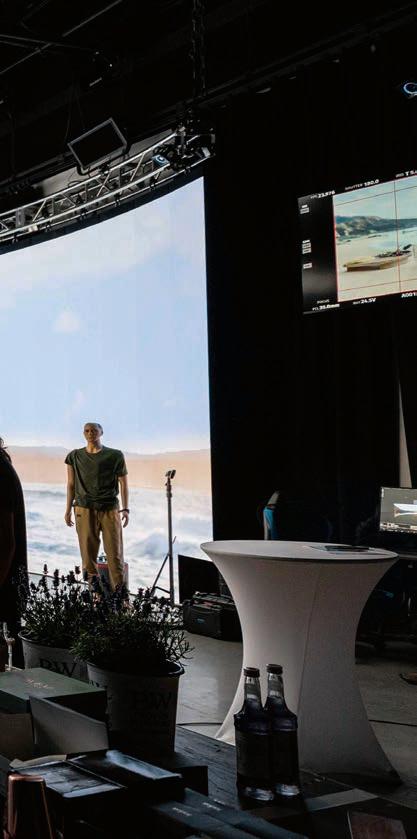
Fostering a homegrown film industry could help attract and retain the young people that New Hampshire so seriously lacks. Its population remains one of the oldest in the country.
A modest investment could pay big dividends over time, industry advocates say.
“ This is easy money,” Stinson said. “And, it’s great for the younger generations, because they can have a good career, a good salary and not have to move away.”
As SB 286 works its way through the State House, New Hampshire’s filmmakers and industry professionals are eager for the future that the bill’s passing would bring.
They’re ready for New Hampshire to finally have its time in the limelight. NH
Increase your busIness by getting your message to the right audience at the right time across any or all of these platforms, here in NH or across the country: Radio, Podcasting, OTT TV, Streaming Audio, and all Digital & Social Media.
Increase your busIness by getting your message to the right audience at the right time across any or all of these platforms, here in NH or across the country: Radio, Podcasting, OTT TV, Streaming Audio, and all Digital & Social Media.
Contact Jay at 603-625-6915 or jaysterin@iheartmedia.com.
Contact Jay at 603-625-6915 or jaysterin@iheartmedia.com.
INCREASE YOUR BUSINESS by getting your message to the right audience at the right time across any or all of these platforms, here in NH or across the country: Radio, Podcasting, OTT TV, Streaming Audio, and all Digital & Social Media.
Contact Trudy Sutherland at 603-518-1925 or trudysutherland@iheartmedia.com. Read more about the work that Studio Lab is doing: www.studiolab.one and areas within our state. I think it’s an awesome opportunity for us.”

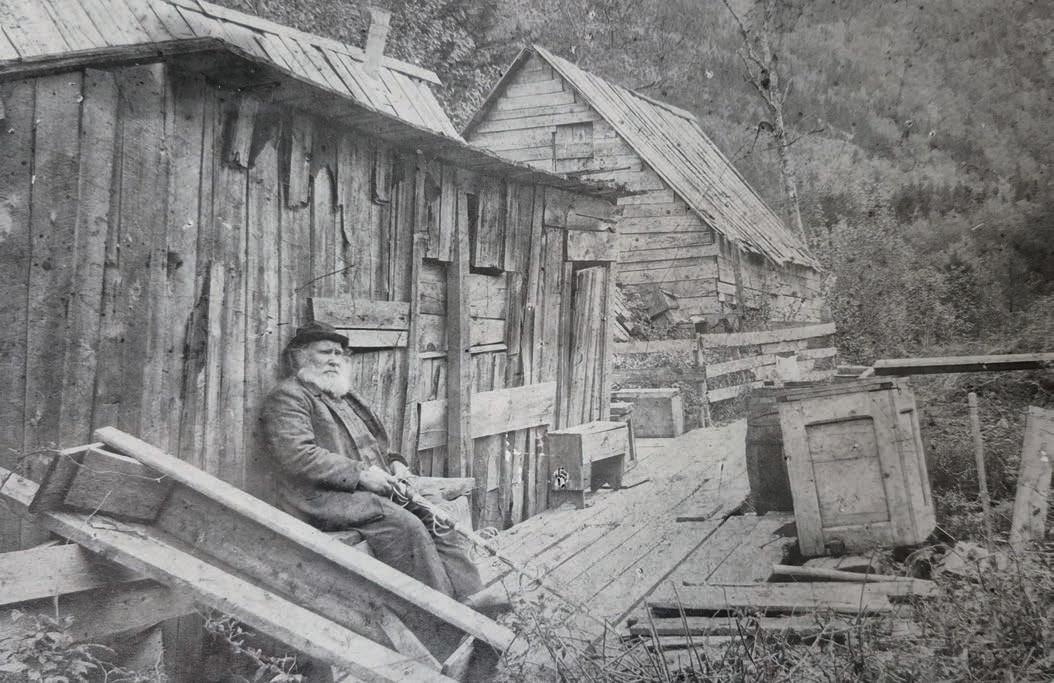
BY MARSHALL HUDSON / HISTORIC PHOTOS COURTESY CLARK’S BEARS
I’m holding an unusual walking stick created by a White Mountain hermit who led an adventurous, yet tragic, life. The walking stick has many long curly tendrils interlaced around the hilt, and it has me wondering, how did he do that? The year 1900 is carved into the handle, so unless the carver was playing a trick on someone, this cane is 125 years old and would have some tales to tell, if it could talk.
I’m at Clark’s Bears in Lincoln, and although they are closed for the season, Maureen Clark graciously agreed to meet with me and show me their memorabilia display about “English Jack, The Hermit of Crawford Notch.” In addition to this walking stick, there are artifacts gathered from the hermit’s humble abode and some grainy black-and-white photos that provide a peek into the hermit’s life.
Some of these photos depict English Jack with a pet bear. Another shows Jack with a curly tendrilled walking stick, perhaps the same one I’m now holding. Clark’s display also includes a booklet written in 1891 by James E. Mitchell entitled, “The Story of Jack.”
English Jack’s real name was Jack Vials, born about 1827, likely in London, England. Not a lot is known about his early life, but “The Story of Jack” says that at age 12, he was a barefoot homeless orphan, wandering the seaport docks looking for a job. He met a sea captain named Simmonds, who brought Jack home to live with his wife and daughter. For the next eight years, Capt. Simmonds and Jack sailed all over the world, and Jack grew into an able-bodied sailor. Along the way he fell in love with Simmonds’ daughter, Mary.
Disaster struck for Simmonds and Jack
while sailing in the Indian Ocean. Their ship was caught in a hurricane and wrecked upon a small deserted island. Of the 42 souls on board, only 13, including Simmonds and Jack, survived. Food on the island was scarce, and the men survived primarily on snakes, frogs, crabs and snails. For almost two years, the sailors existed on the island but perished one by one. Jack had the sad task of burying his shipmates including Simmonds, who had been like a father to him.
Eventually three survivors were rescued by a passing ship, but Jack’s two remaining shipmates died before reaching England, leaving Jack the sole survivor. Jack bore the burden of telling Simmonds’ daughter, Mary, of the death of her father. He found her living in a workhouse and learned her mother had passed away while he and Simmonds were
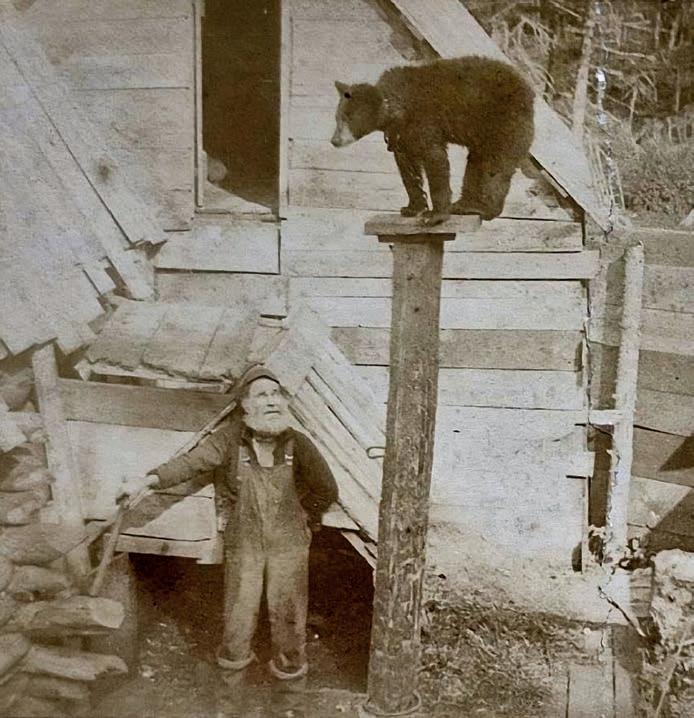
stranded on the island. Jack took Mary out of the workhouse and paid for her to attend boarding school, promising to return in a year and marry her. He then set sail on a ship for Hong Kong, planning to earn money to start their married life together. When Jack returned, he was crushed to learn that Mary had died in his absence.
With his heart broken and not caring if he lived or died, Jack joined the British Navy and sought out dangerous assignments. He fought in the Crimean War and other battles all over the world. Perhaps he fought slavers in Africa and may have served on a rescue ship freeing ice-trapped explorers in the frozen Arctic.
In the early 1870s, Jack decided to change his life, leave his sad memories behind and start a new life somewhere far from London. He took a job in New Hampshire’s White Mountains building the Portland and Ogdensburg railroad through Crawford Notch. When the project finished, Jack decided to remain in the area. With the completion of this railroad, grand hotels started opening, welcoming visitors and wealthy summer guests.
From scavenged boards, Jack built a ramshackle shanty in the woods near the Crawford House and not far from the railroad depot. He discovered that tourists from the cities were curious to meet colorful mountain characters, so he played the part. Jack erected
signs that pointed out the path to his hermit home and then welcomed visitors, sold them souvenirs, and entertained them with his trained bear and tales of seafaring days. Legend says he also won wagers with the tourists, betting them he could eat a frog whole or bite the head off a snake.
As Jack aged, he spent the winters living with families in Twin Mountain but returned to his hermit home every summer. The fami-
lies he roomed with remember him as having a kind heart and generous spirit, often giving candy and coins to children and gifting larger amounts to orphans or others in need.
English Jack is buried in the Straw Cemetery in Carroll. The inscription on his headstone reads: “John Vials — The Hermit of Crawford Notch,” and indicates he died on April 24, 1912, at 85 years of age. Other sources suggest his name may have been Jack Vialls, John Viles, Wailes, Niles or Nalls, and that he may have been a few years older, putting his age closer to 90 when he died. Whatever his true age and name, English Jack was known and loved by the area residents who raised the funds for his burial plot.
The unusual walking stick I’m now holding was made by Jack to sell to visitors. I’m still puzzled as to how he was able to bend and weave these tendrils into their curly position. My guess is that he may have worked on each walking stick while it was still a live and growing young sapling. Perhaps he kept track of its location in the woods and returned to it each spring to bend and weave the supple new growth. After several years, he would cut down the sapling with its entangled branches and create a unique walking stick from it.
I’m guessing at this — only “The Hermit of Crawford Notch” really knows how he made these walking sticks, and he won’t be revealing his secret or making any more. If you want to see one, plan to visit Clark’s Bears after they open. NH
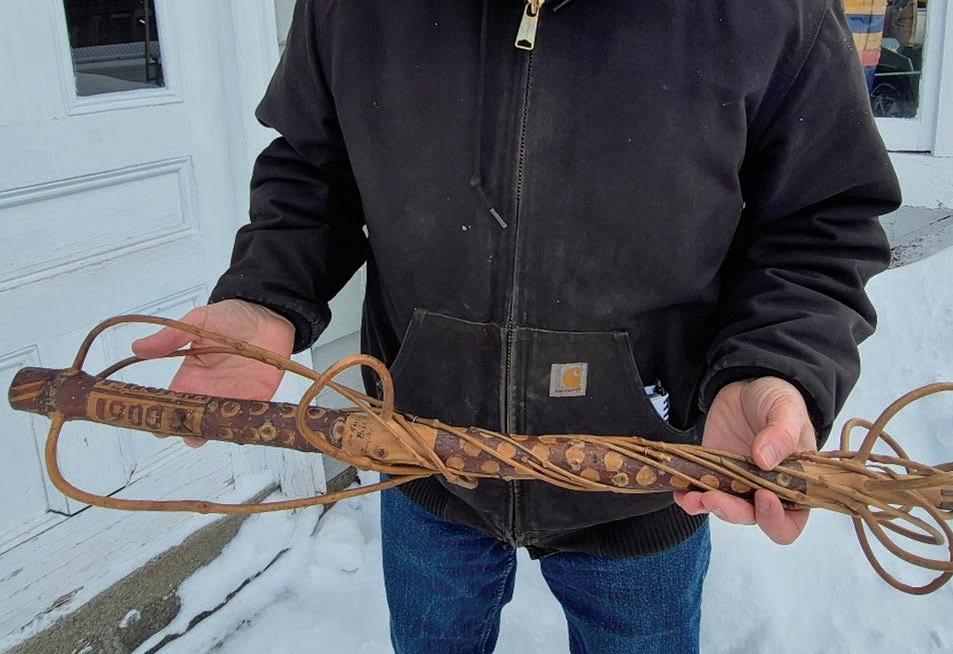

BY CALEB JAGODA / PHOTOGRAPHY BY LIV FROST
The first thing one notices upon entering Sheafe Street Books is that it looks like someone’s home. And that’s because, well, it is.
Ken Kozick is the sole proprietor and employee of the Portsmouth bookstore. He opened for business on the tucked-away side street in 2010, but purchased the house in 1995. He lives there alone, and on most days he can be found seated in the back-right corner of the shop, stately, statuesque, with jazz or classical music floating about. He lives upstairs, having renovated the downstairs — which was previously the dining and living rooms — into the snug bookstore you see today.
His is a curated shop. As sole employee,
it reflects his tastes, with a predilection for Beat-era literature, haiku and counterculture writers. He also maintains a steady selection of new releases, cookbooks, antique tomes, and, as he puts it, “core stock — meaning classics, stuff that’s gonna sell this year or in 10 years.”
He started his career in his 20s as a book receiver at a Boston B. Dalton’s. Climbing the company ladder, Kozick would manage a Framingham location and build a store from scratch in Newington’s Fox Run Mall before becoming an on-the-road book salesman for two decades. Getting canned in the earlyaughts led him to opening Sheafe Street Books, which is celebrating its 15th anniversary this year. He is 70 years old.
I first met Ken in 2019. I was looking for a copy of Cormac McCarthy’s bloody, challenging magnum opus, “Blood Meridian.” Not only did he have it, he had the Modern Library’s 25th anniversary edition. It was a beautiful copy of a stunning book that would rewire my brain. Ken had earned a lifelong patron.
As a writer, as a reader, as someone who values the way a book can change your life, I’m eternally grateful. I can only imagine how many others feel the same.
New Hampshire Magazine: Sheafe Street is really uniquely curated. How would you describe your vision for the shop?
Ken Kozick: It’s a reflection of me — my era, too. I’m stuck in the late ’60s and ’70s. It was an era where people sincerely tried to make the world a better place. It sounds hokey, but there was camaraderie. There was striving to improve, trying to find a collective energy that would benefit everybody.
I also wanted to eliminate all the big-boxbestseller stuff — the Pattersons and the ... I can’t even think of them. I’ve expunged them from my memory. It takes a lot more work
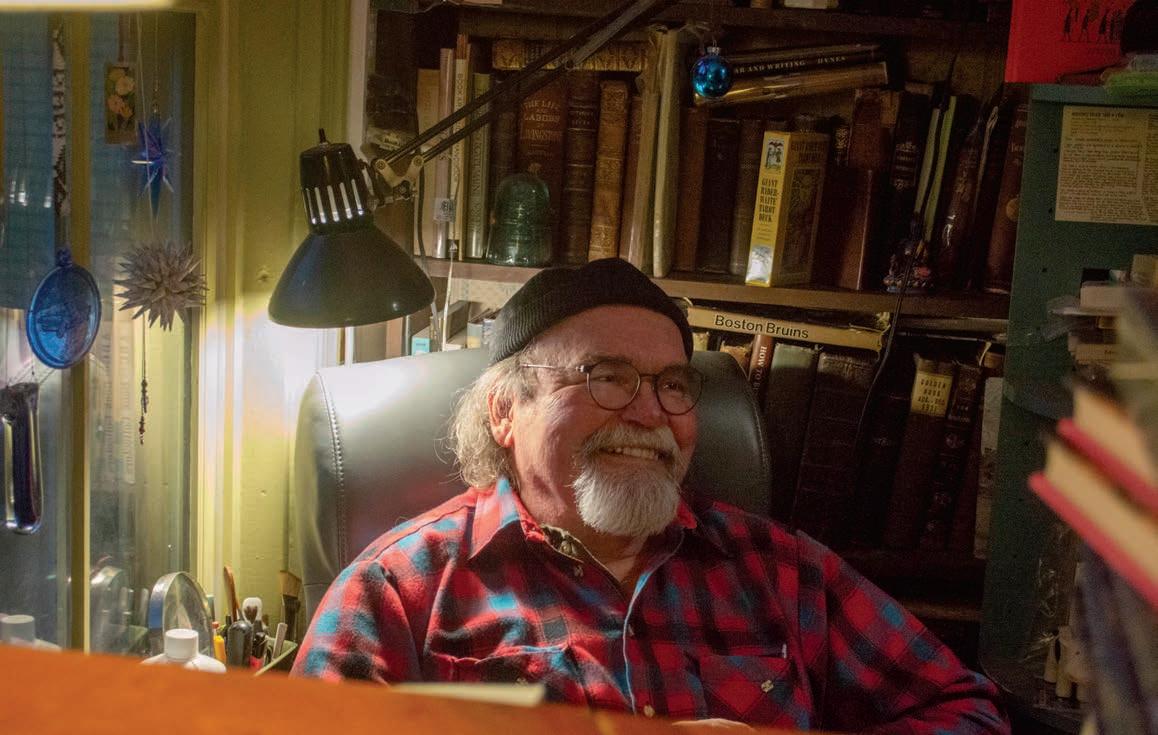








NHM: I don’t think this is a common business model.
KK: I don’t think anyone could do this unless they owned the real estate.
NHM: How did the first few years of running the store go?

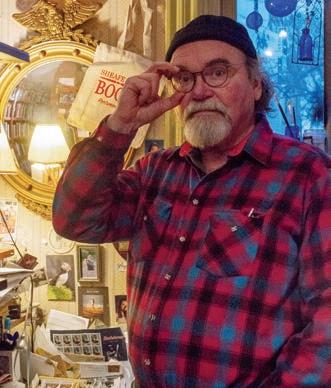
“To





just keeping onesies and twosies in stock. If I sell them, I’ve got to replace them with something — and it’s gotta be something good. I’m always going to the Salvation Armys, the Goodwills, estate sales and people walking in the door selling me stuff.
NHM: You’re giving out trade secrets.
KK: Well, it works here.
KK: I really had to change my life. Weekends are the most profitable, so automatically I’m working on weekends. After 10 years, my old friends that I used to hang out with got annoyed. And, unfortunately, a lot of people have drifted away. Committing to this job — there’s a price. I miss my old friends. I stay in touch as much as I can, but the truth is, I’m anchored here. There are worse places to be stuck. I’m a happy guy; I’m in a good position and I know it.
But those first five or six years were really, really shaky. My checking account just had fumes in it. There wasn’t enough money coming in. But slowly, the clientele built, and my reputation built, and it got to the point where I could pay my bills — hoorah! — and now it’s actually kind of a successful venture.
NHM: What led to turning that corner?
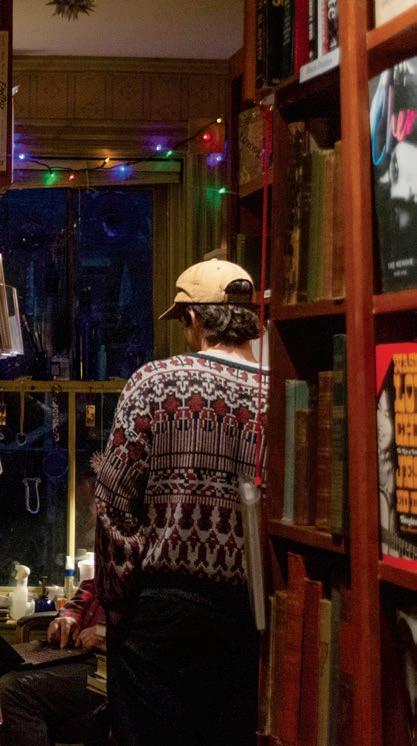
KK: Return customers had a lot to do with it. People appreciate the fact that I exist, and so they’re motivated to support me. Don’t ask me where these people come from, but I have a lot of repeat customers, and I swear a lot of them buy books just to support me. Not because they want books, but because they want to help me out.
NHM: How would you describe your approach to bookselling?
KK: If you can get the right book in the right person’s hands, that’s an accomplishment. You know when it happens, too. People don’t know the books like I do. ... Every book I sell is important. Whether it’s a $5 paperback or a $100 antiquarian book, I give the same effort. Getting the right book in the right hands — who knows what’s going to happen? A spark in somebody’s imagination, or the thing they needed to learn in order to get a good career, might be in the book that I’m recommending to them. You never know. It’s important work. I’m sincerely grateful to everybody who buys a book. NH






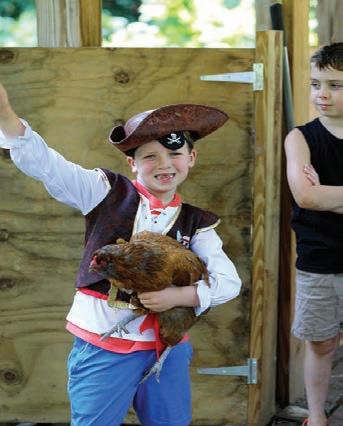



BY J. DENNIS ROBINSON

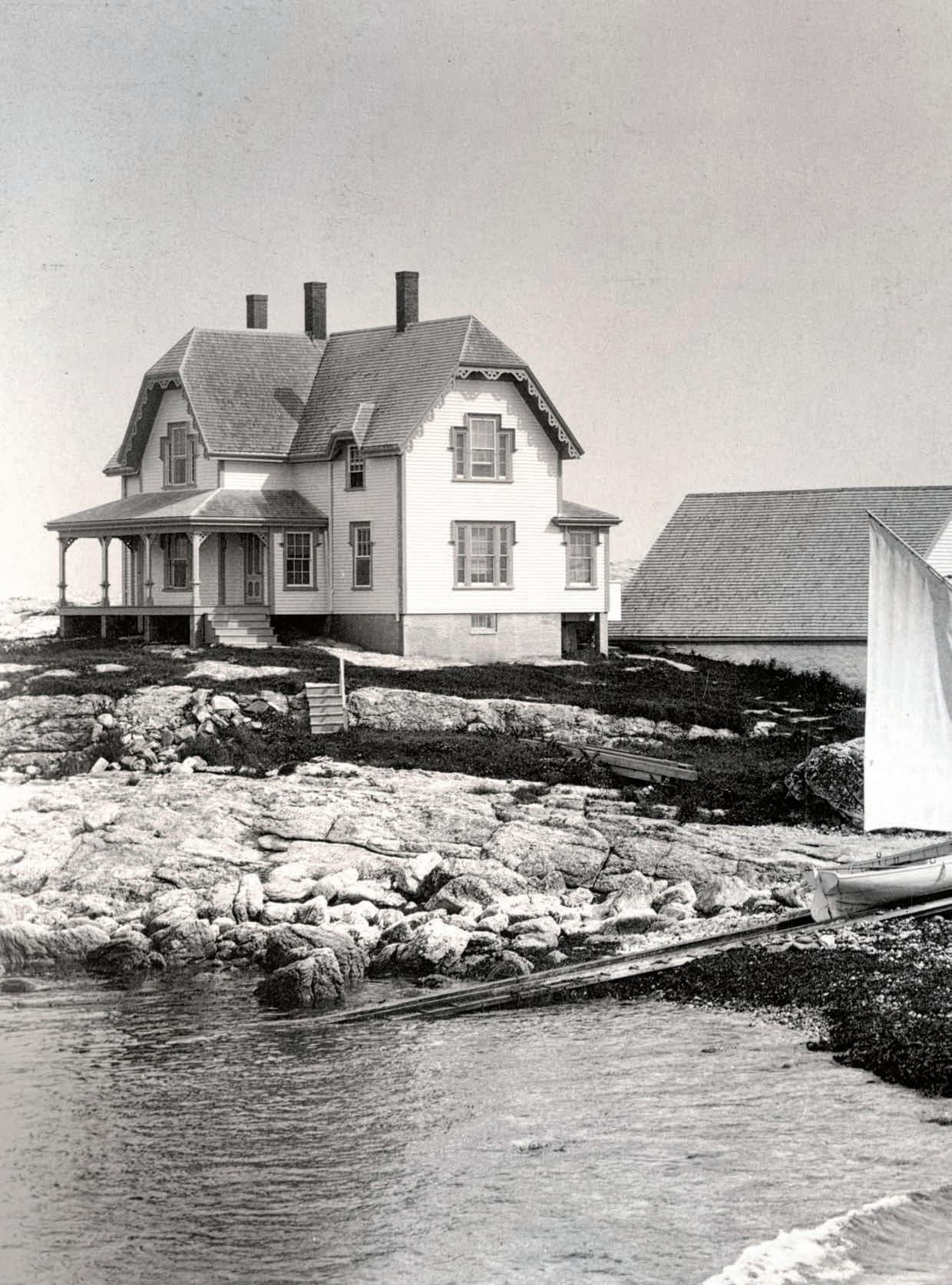
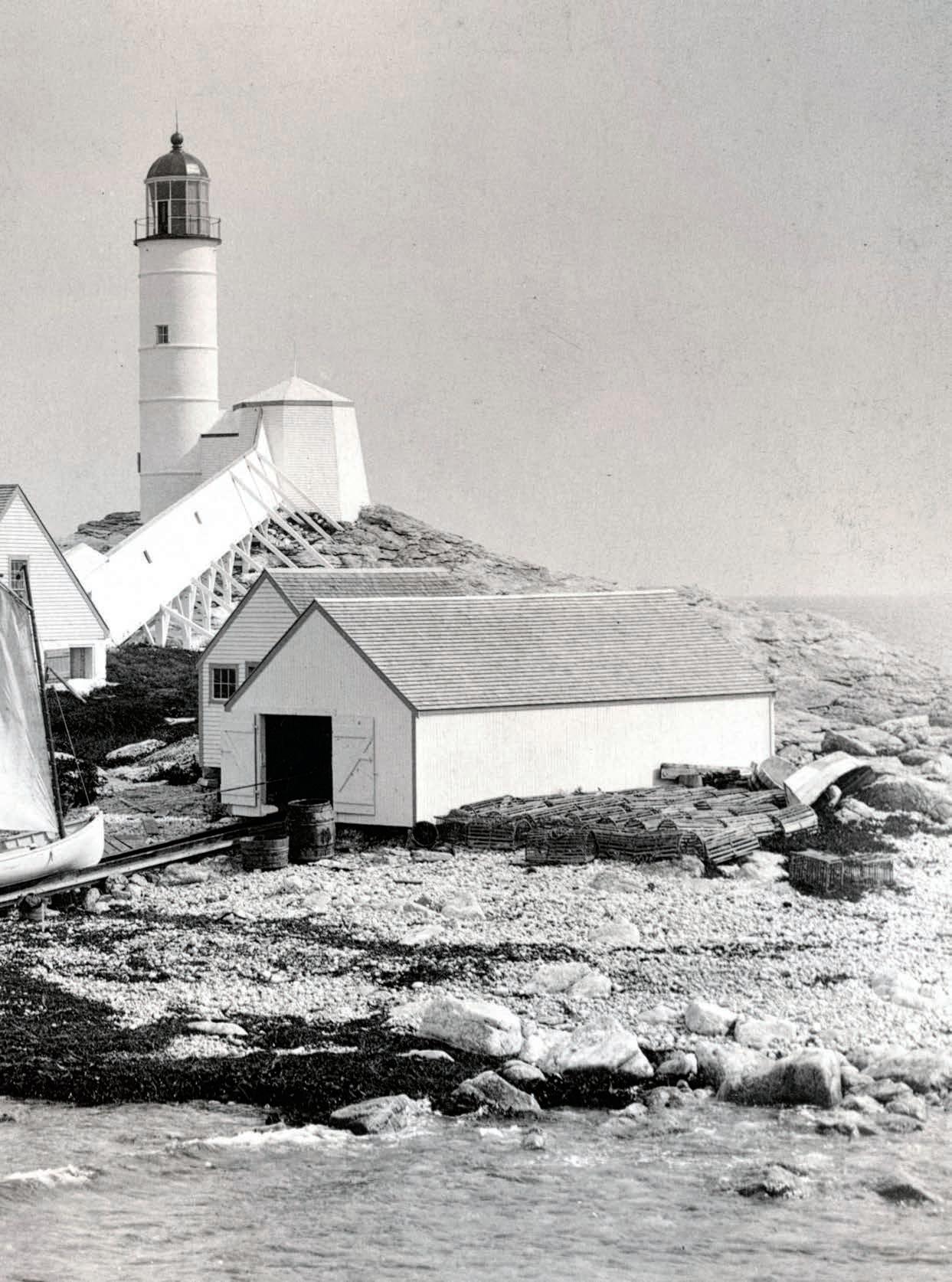
Two legends have haunted the Isles of Shoals since colonial days. According to Capt. Christopher Levett, who visited from England in 1623, “Upon these islands are no savages at all.” Levett’s claim that he saw no Indigenous people as he sailed past the nine craggy little islands off the Maine and New Hampshire coast became local history. ☞
Levett also reported seeing six ships anchored off the islands. Upward of 300 fishermen, he wrote, operated an outdoor factory. Working from floating platforms projecting into the harbor, the men sliced up massive cod with astonishing speed and precision. Split and salted, then dried on rocks and wooden racks, fish from the Shoals commanded top prices on the European market 3,000 miles away.
Did the People of the Dawnland avoid our offshore islands? Were the sleepy Isles of Shoals once among the busiest industrial sites in New England? Send in the archaeologists.
Try,
It’s hard to argue with an eyewitness who has been dead for 400 years. But Levett’s written observation, exaggerated by later historians, soon dominated the local narrative. This passage from an 1870 copy of the New Hampshire Gazette is typical of the times: “The Shoals were an aggravation to the brave Red Man. They were remote from the mainland, and the intermediate water could
not be depended upon; so scalps were safer there than on the coast. This is one reason why the islands were early inhabited (by Europeans).”
Victorian poet Celia Thaxter, whose family ran the Appledore Island Hotel, noted that her guests frequently found “Indian arrowheads of jasper and flint” as they explored the coves at Smuttynose, Appledore and Star islands during low tides.
Modern archaeologists have proven that Indigenous people have occupied New England for at least 12,000 years. They were sophisticated hunters, skilled fishers and expert mariners. In 1980, a Cornell graduate found a piece of Native pottery while surveying Appledore Island for eroding historic sites. Archaeologist Faith Harrington’s field study group found a few rhyolite flakes on Smuttynose in 1990. These were possibly chips left behind by prehistoric people making stone tools. But the pieces were mixed in with early colonial debris and impossible to date with accuracy.
“There was always something nagging
at me about the Shoals,” says archaeologist Nathan Hamilton, recently retired from the University of Southern Maine. “The Native American evidence was always there. We just hadn’t found it yet.”
But no prehistoric tools turned up in 2008 when Hamilton’s first team of archaeology students landed on Smuttynose, a privately owned island in Maine, to begin a five-year summer dig. There were exciting historical finds, but nothing, at first, proved even a single prehistoric party had arrived by dugout or birchbark canoe.
The problem was the island itself. Although considered the most verdant spot at the Shoals, Smuttynose is largely 27 acres of exposed rock. The soil, where it exists, is rarely 3 feet deep. The thick grassy mat on the top has the consistency of peat. There are no trees, a fact Cap. John Smith pointed out during his visit here in 1614.
That was great news, however, for archaeologists who didn’t have to contend with the ground strata being broken up by tree roots. So, while there isn't much soil on
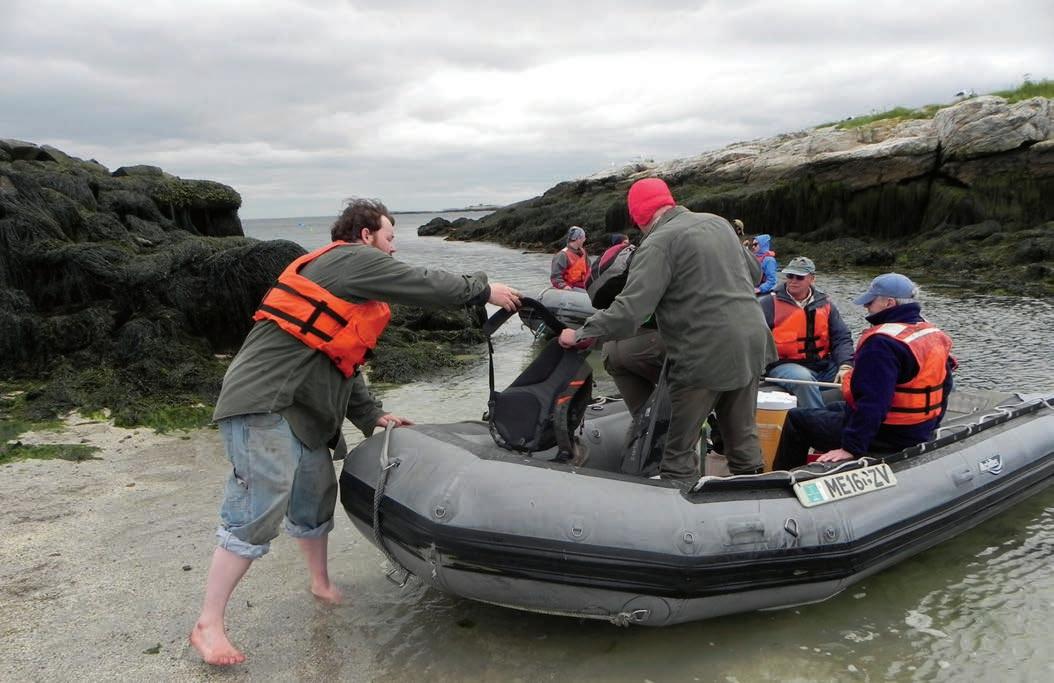
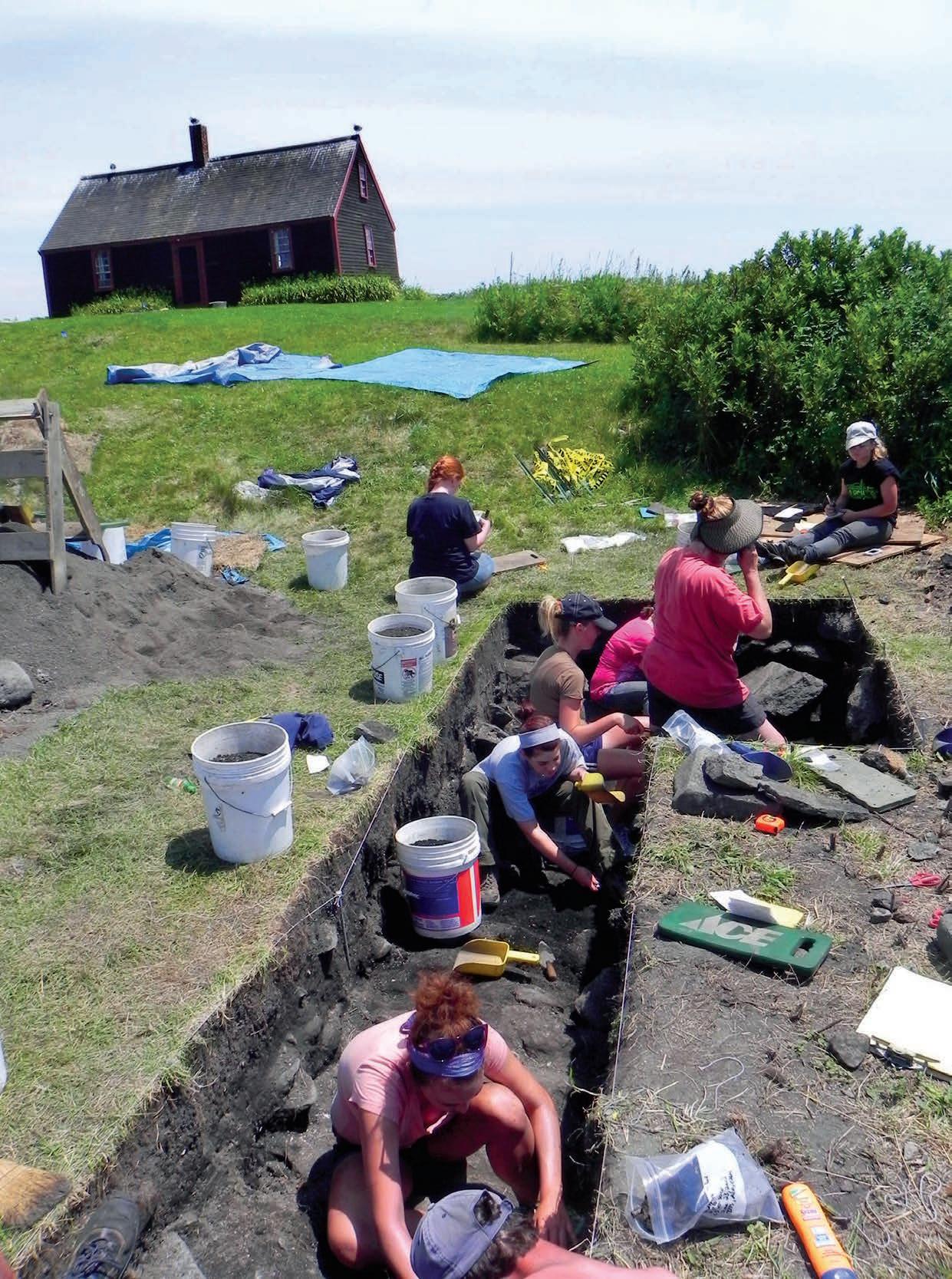
Smuttynose, what exists there is textbook perfect. Like a time machine, the deeper you dig through largely undisturbed layers, the older the island gets.
Too often, test digs ended quickly as students and trained volunteers hit bedrock. But now and then, they discovered a thin, black, organic layer known as the “A-horizon.” This is the prehistoric surface of the island where dark clay and silt deposits have been trapped between rocks for millennia, protected from wind, weather, waves and human activity. Artifacts not preserved in these rare crags and crevices would have been washed off the exposed rock.
Hamilton's team began their work at the top of the terraced hill where the soil appeared deeper, but in year two, they branched out, moving one cluster of square test pits to within a few feet of the cove. This spot, most in danger of being eroded away, turned out to be the mother lode.
The big moment was nothing like the opening of the Ark of the Covenant in the Indiana Jones movie. No shooting flames or blue ghosts, no screaming melting Nazi faces. Hamilton was standing by the guano-streaked picnic table at the 200-yearold Haley Cottage on a hazy afternoon in June 2009 when the first treasured flakes appeared. Two diggers, Arthur Diamon and Nick Clausnitzer Jr., each with a master’s degree in archaeology, were digging in Test Unit No. 3. Beneath a buried wooden plank, just above the bedrock, they found a precious patch of gray “A-horizon” marine clay.
Clausnitzer filled a plastic bucket with dirt from the test pit as Diamon sifted the soil through a fine mesh wire screen. Like a miner panning for gold, Diamon washed the muddy debris left in the screen, rinsing it in the cool salt water in the cove. Untrained eyes would have missed what the students saw.
“We think they’re rhyolite flakes,” the diggers told Hamilton, as a group of students gathered to peer at the tray.
“Jesus, they do,” the teacher said. He held the sparkling pieces flat in his hand. “Show them to Ingrid.”
Ingrid Brack, a teaching assistant with years of fieldwork and a master’s degree in
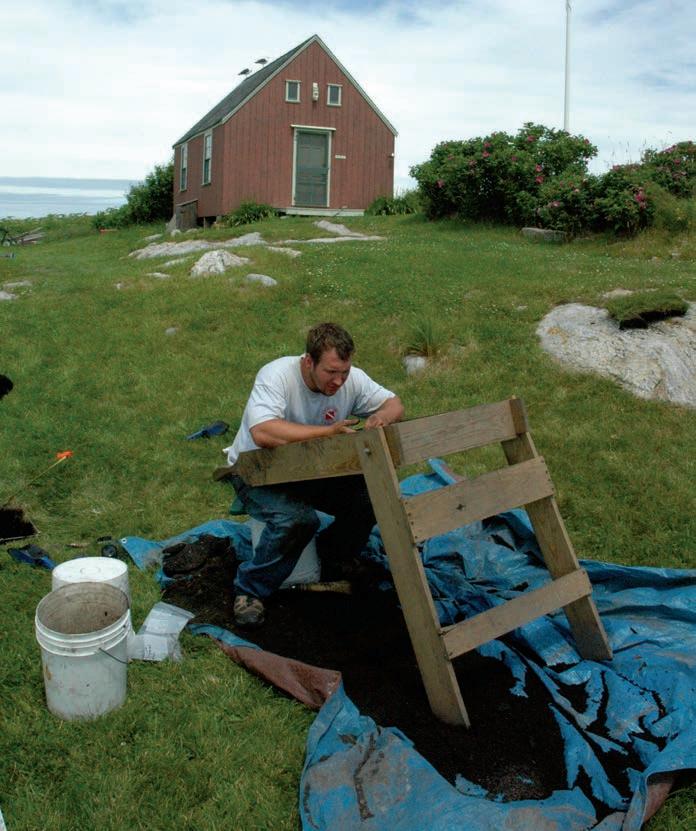
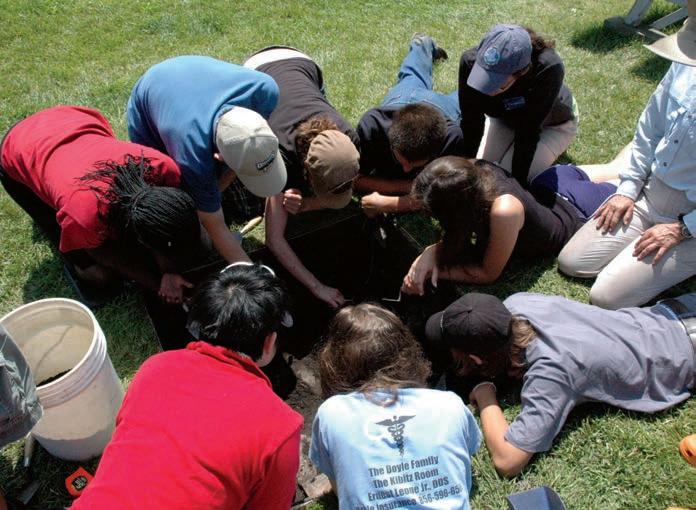
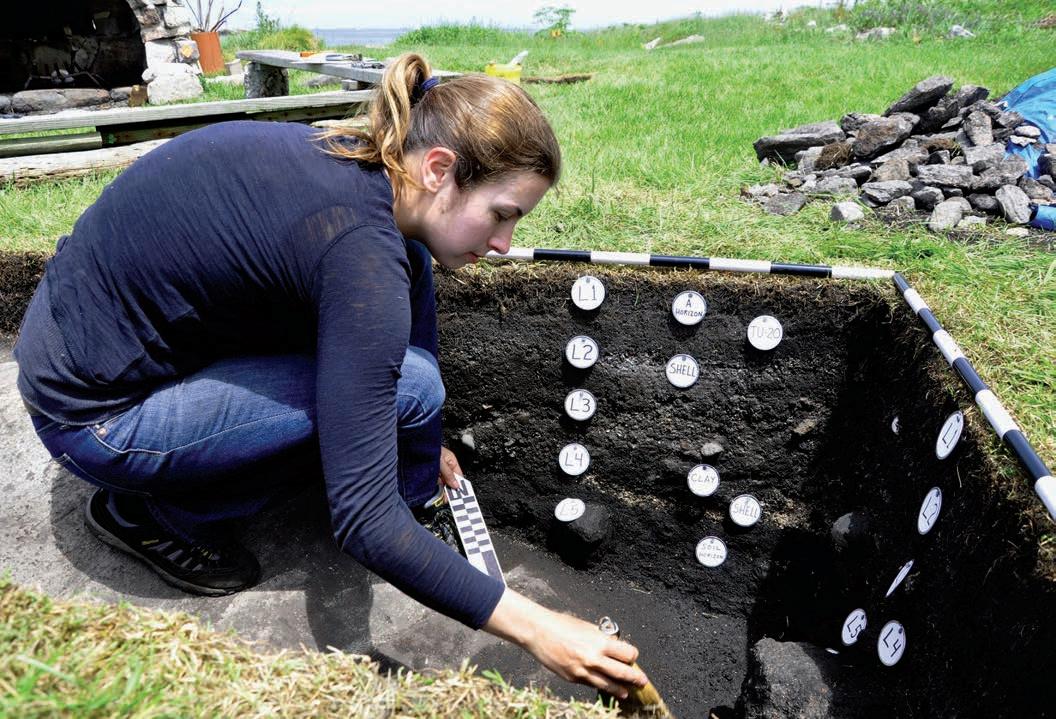
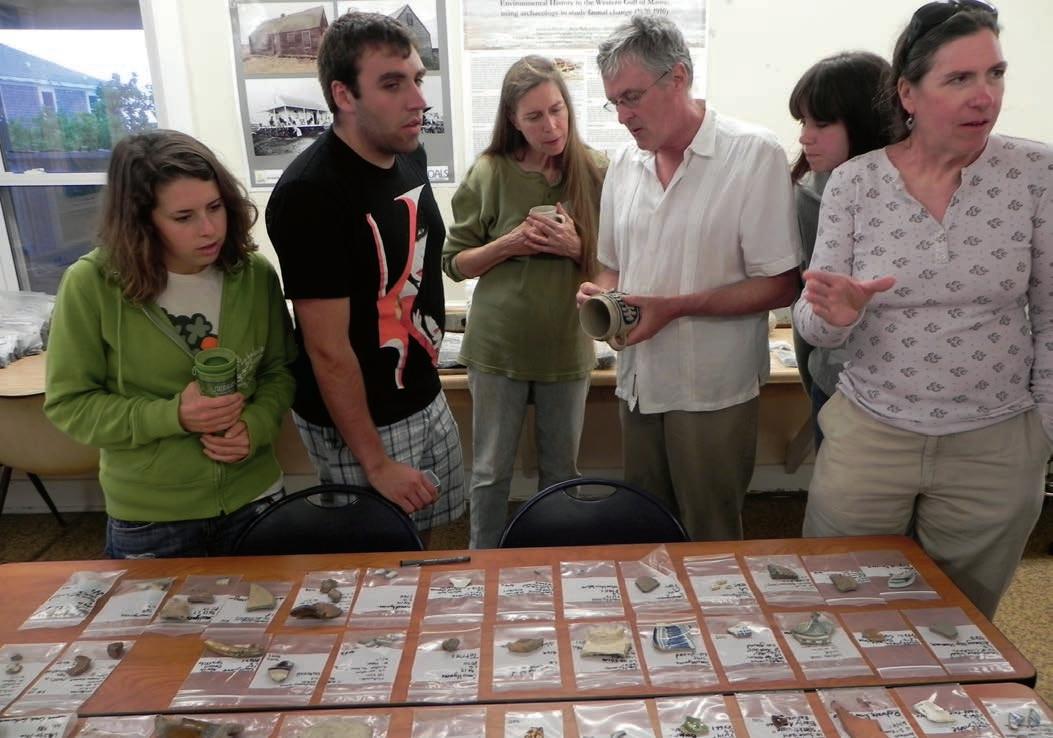
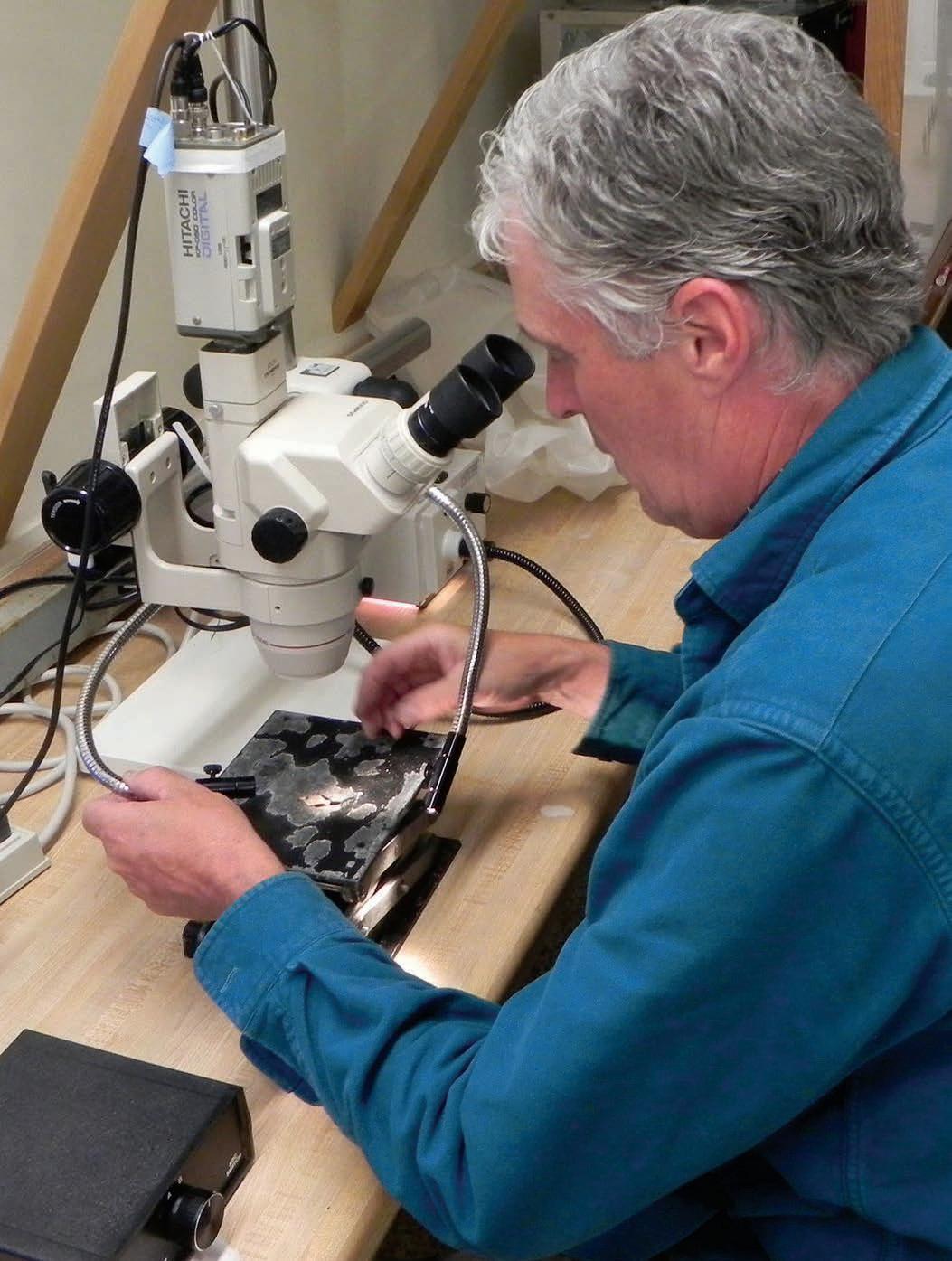
BY
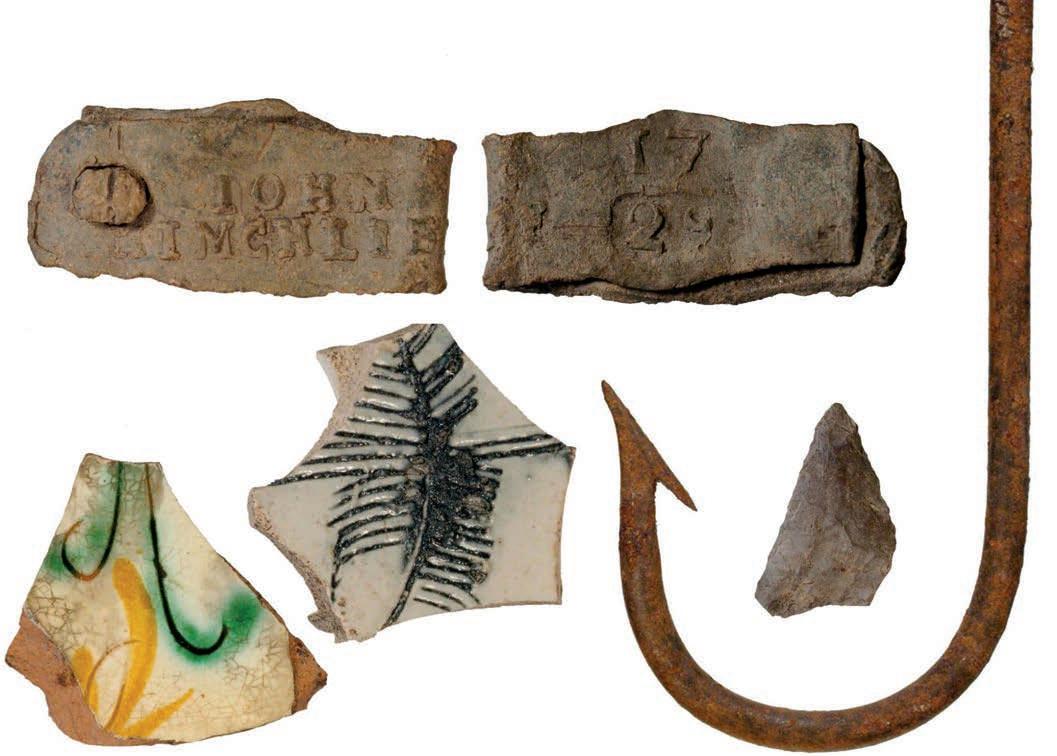
geoarchaeology, popped her head out of a deep pit and studied the artifacts.
“Look at the gray rhyolite flakes,” she said.
At that moment, Smuttynose Island became a prehistoric site. “It’s like smoke and fire,” Hamilton told his students. “Where there are flakes, there are artifacts.”
Days later, test pits No. 8 and No. 9 yielded more telltale flakes. Then came a stone scraper, once used to process animal hides, and the broken tip of a projectile point or arrowhead. In test unit No. 10, they unearthed 30 more flakes. Over the next two summers, the diggers found 50 prehistoric stone tools or fragments, about 100 pieces of prehistoric pottery, a few rare samples of burned bone, and 1,800 stone flakes. Indigenous people, Smuttynose proved, visited the Isles of Shoals during at least six distinct periods, ranging from 1,000 to 6,000 years ago.
“Archaeology is the most destructive science there is. We destroy as we search,” Hamilton said. “This challenges us to record as accurately as we can and to recover as much as possible.”
A total of 300,000 artifacts found their way from Smuttynose Island to the lab at Southern Maine University. Each piece was
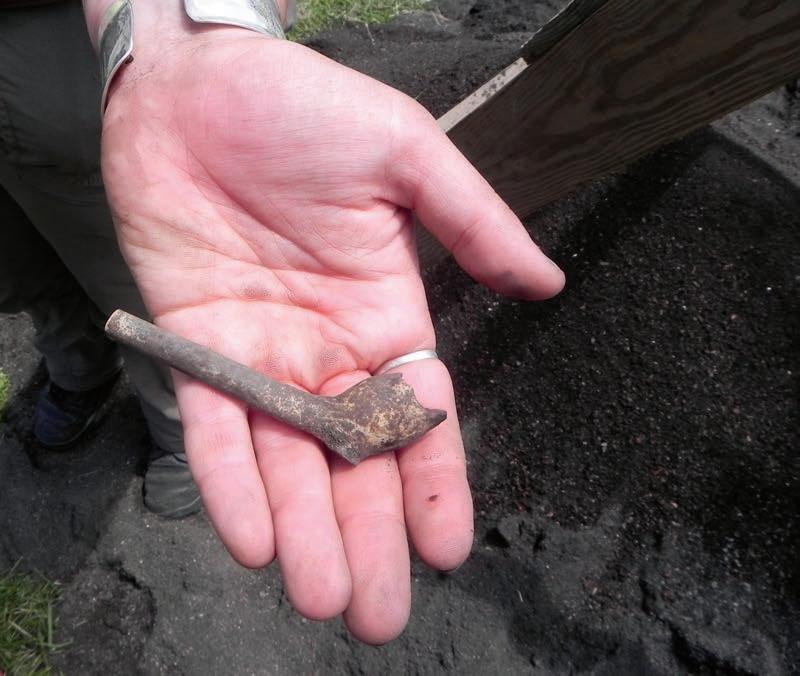
carefully bagged, tagged and mapped via satellite to within centimeters of its original location. And while we usually picture archaeologists in the field, fully 90% of their work takes place back in the lab. At times, as with the discovery of Indigenous artifacts on the Shoals, the analysis rewrites history. Other times, the artifacts prove the legends are true.
Commercial fishers are hunters. They go where the game is plentiful, catch what their ships can carry, and transport their perishable goods to market. If a fishing site is profitable, the hunters return. If not, they move on, leaving little or no record of their travels.
Fishing the Gulf of Maine is a tough and dangerous vocation today and was much more so in the age of wooden ships with canvas sails. But for 17th-century shipbuilders, merchants, captains and investors, fishing could be as profitable as mining for gold.
After four centuries, the truth about the founding of New England is finally slipping out. Books like “Cod: A Biography of the Fish That Changed the World” offer an alternative to the traditional claim that our region began as a search for religious freedom. In fact, hundreds of ships carrying thousands of adventurous crew members were already
making the risky transatlantic voyage here as the Mayflower Pilgrims arrived in Massachusetts. Protein-rich Atlantic cod weighing over 100 pounds were abundant and easy to catch.
“The myth-makers of American origins,” according to archaeologist and historian Brian Fagan, wrote the fishers out of the region’s history. “New England was settled, not by Pilgrims escaping persecution in a land peopled by Native Americans,” Fagan wrote in “Fish on Friday,” “but by roistering cod fishermen schooled in the rough-and-ready world of the migrant fishery.”
A fisherman’s day was long and arduous, but a successful catch could mean 200 to 300 fish per man. Workers kept count by impaling the fish's tongue onto a metal spike. On Smuttynose, skilled “dressers” passed the catch from man to man in factory style. The “throater” cut the cod from belly to anus. The “header,” after ripping out the entrails, tossed the liver into one basket and the roe into another. Then he sliced off the head and kicked it into the sea through a hole in the staging platform. Wielding a knife, the “splitter” separated the fish flesh from the backbone.
Atlantic cod from the Isles of Shoals, known locally as “dunfish,” had special appeal to European buyers. The dunning system required more drying time and less salt than fish dried elsewhere. That improved the fla-
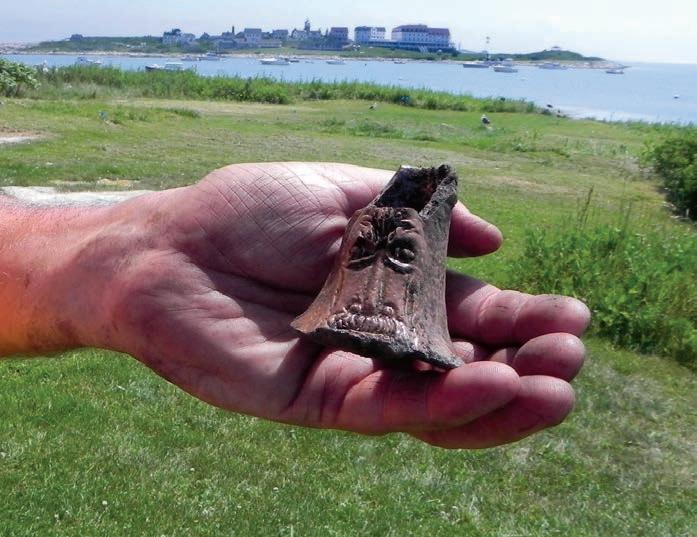
vor, increased the longevity and boosted the value of the product. Celia Thaxter described the fading craft in her classic 1873 book, “Among the Isles of Shoals.”
“The process of dunning, which made the Shoals fish so famous a century ago, is almost a lost art, though the chief fisherman at Star Island still ‘duns’ a few yearly. A real dunfish is handsome, cut in transparent strips, the color of brown sherry wine. The process is a tedious one: the fish are piled in the storehouse and undergo a period of ‘sweating’ after the first drying, then are carried out into sun and wind, dried again slightly, and again piled in the warehouse, and so on till the process is complete.”
In his “Description of New England” (1616), Captain John Smith advised investors to cash in on two lucrative cod seasons in spring and fall. But it wasn’t long before migrant fishers began to overwinter on the mainland. On 2 acres of land at Smuttynose, in 50 cubic meters of excavated soil, over 10,000 fragments of clay pipes dating to the 1620s have been found, preserved and cataloged. The European settlers were here to stay. Members of the Cutt family from Wales used their Shoals’ fishing profits to buy up riverfront land in what would become Portsmouth, New Hampshire. Another Shoals fishery run by the Pepperell family provided the funds to buy land in what would become Kittery, York and Berwick, Maine.
Legend says Smuttynose was once a key staging area for colonial commerce. The evidence was right below the surface. Nate Hamilton’s young diggers unearthed thousdands of clay pipe fragments and ceramic shards, each bearing a clue to its age and manufacture. Giant iron fishing hooks testify to the enormous species of the era. Well-preserved cod premaxilla bones proved that, due to overfishing by early English settlers, the size of local codfish shrank with each decade.
Shoals’ artifacts included a brass button depicting a ship, a pea-sized glass bead, a gambling die carved from bone, lead “bale seals” used in shipping cotton, handmade lead bullets, gun flints and a metal thimble embossed with the figure of a lion. Just above the cove, archaeologists found evidence of an early tavern that may also have functioned as a school, a church and a courthouse.
BY
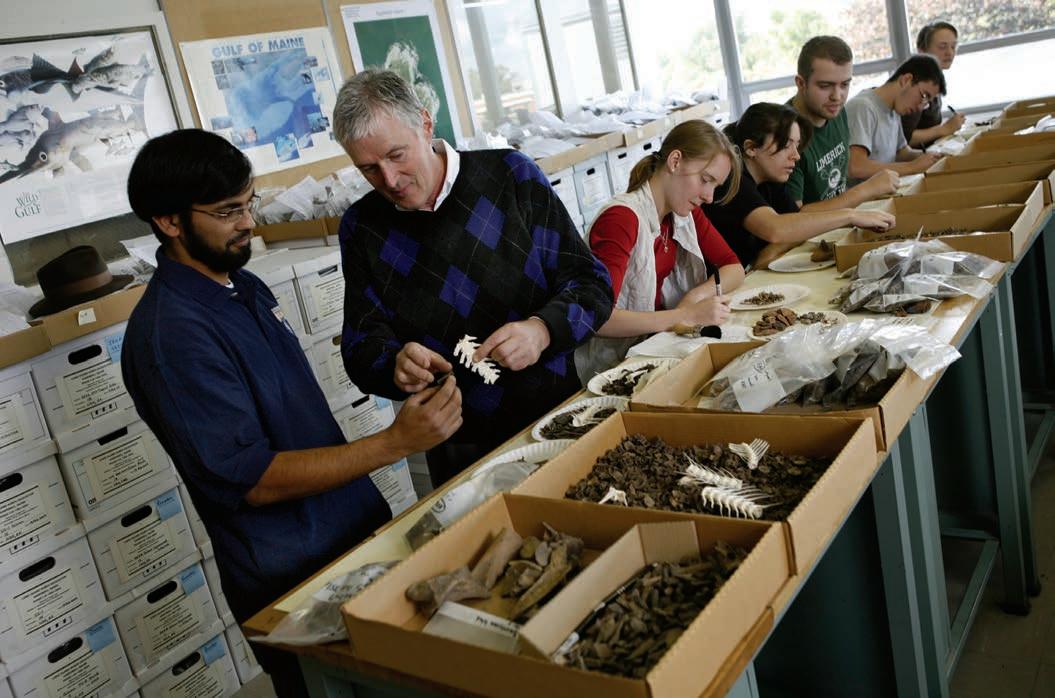
The five scientific summer digs changed the way we see the Isles of Shoals. In June of the final year, a student unearthed the neck of a Bellarmine or “Bartmann” jug. Hamilton likes to call them “the Coke can of the 17th century.” Hard-drinking English fishermen all carried them full of brandy, rum or ale. Originally crafted in Germany in the 1500s, these stoneware jugs were decorated with the face of a bearded man.
The students were ecstatic, one sunny day, to find the entire neck of the bottle with the face intact — a rare discovery. Barely an hour later, they found a perfect ancient arrowhead in the deepest strata of marine clay. The Indigenous hunter and the colonial fisher may have stood on the same speck of land, separated by thousands of years.
Further toward the surface, a cache of pig, goat, great auk and cow bones demonstrate that hardy pioneers were living on the Isles year-round. Broken dishes, nails, buttons and even a few lost coins define the era when the Haley family dominated the island, roughly
from the American Revolution to beyond the War of 1812. Besides fishing, the Haleys manufactured their own boats, rope, barrels and lobster traps. They operated a windmill to grind grain. The family established a cherry orchard, built a bakery, a brewery and a blacksmith shop. Generations of Haleys constructed the breakwater, a stone pier and a hotel named The Mid-Ocean House of Entertainment.
In 1839, a Portsmouth grocer, printer and politician named Thomas Laighton bought four of the five islands on the Maine side of the ancient archipelago, Laighton, and later his now-famous daughter Celia Thaxter, turned the Isles of Shoals into a must-see tourist destination. Their Appledore Hotel survived from 1847 until it disappeared in a spectacular blaze in 1914. Appledore is now home to the Shoals Marine Lab. Across Gosport Harbor, the Oceanic Hotel, built from 1873-75, is active today on Star Island. The vintage hotel welcomes you to discover the sprawling history of nine tiny islands lost in the mists of time. NH
Of the nine tiny offshore Islands, the four in New Hampshire include Star, White, Lunging and Seavey. The other five — Cedar, Appledore (home of the Shoals Marine Lab), Duck, Malaga and Smuttynose — are within the boundary of Maine. Gosport Harbor in the center is divided between the two states. In-season ferries to Star (site of the historic Oceanic Hotel) include the Uncle Oscar out of Rye Harbor and the Thomas Laighton out of Portsmouth. Narrated tours are also offered by Portsmouth Harbor Cruises and Granite State Whale Watch. All the islands are privately owned except for White and Seavey, which are managed by the state of New Hampshire.
HELPFUL LINKS: uncleoscar.com islesofshoals.com starisland.org shoalsmarinelaboratory.org portsmouthharbor.com granitestatewhalewatch.com
J. Dennis Robinson has been a Smuttynose Island steward for over two decades. His illustrated history book, “Under the Isles of Shoals: Archaeology & Discovery on Smuttynose Island,” has sold out its first edition. Robinson is currently seeking sponsors to support an updated second printing. For more on his books and articles, visit jdennisrobinson.com.


WE’VE GOT IT ALL IN NEW HAMPSHIRE – from picturesque small towns and bustling cities to the gorgeous White Mountains and ocean beaches. The following advertisers are doing their part to make our state the best place to live, offering valuable services, destination dining, entertainment, shopping and more. While you’re out exploring the state this summer, make sure to add these places to your list.

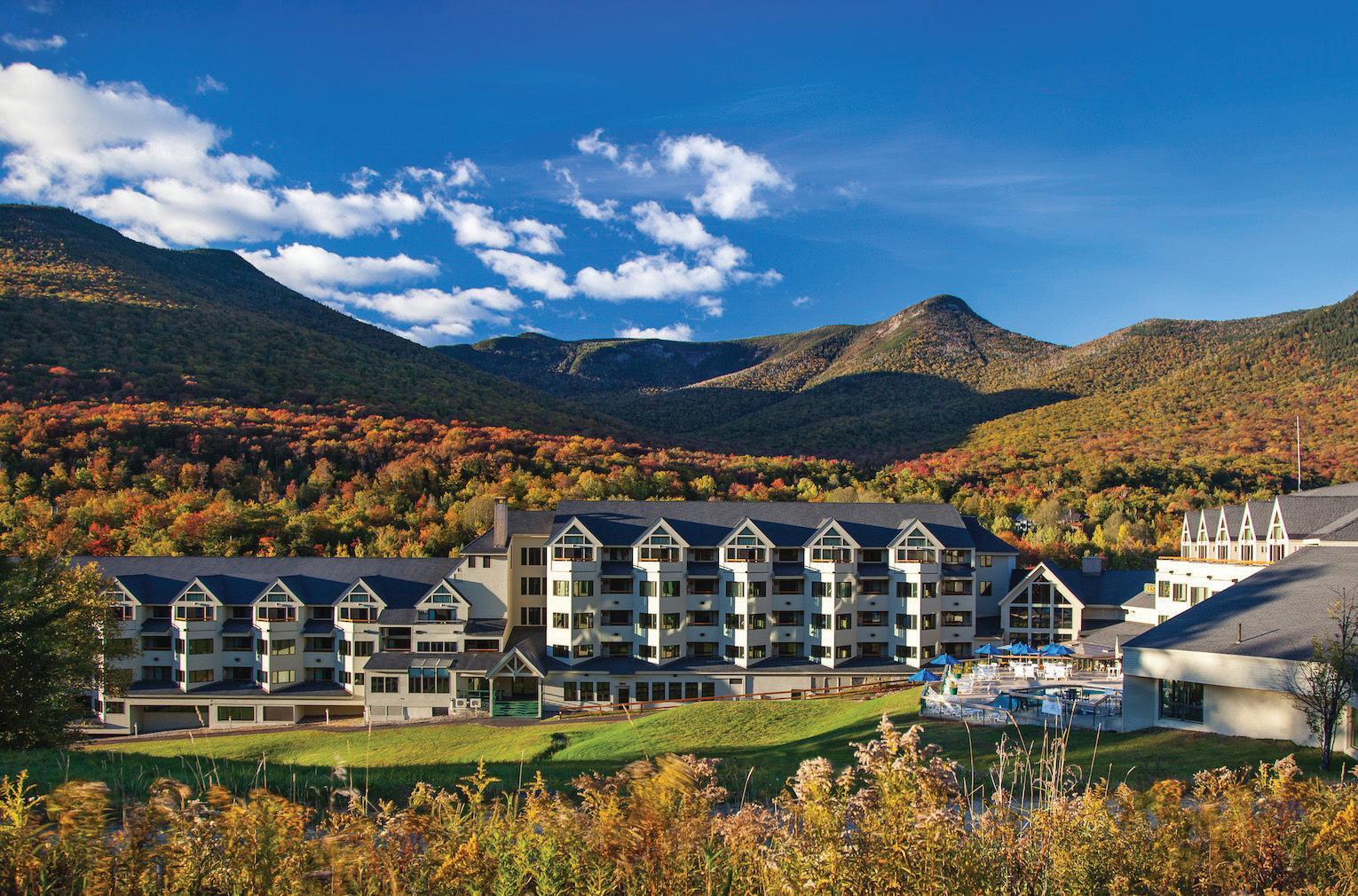
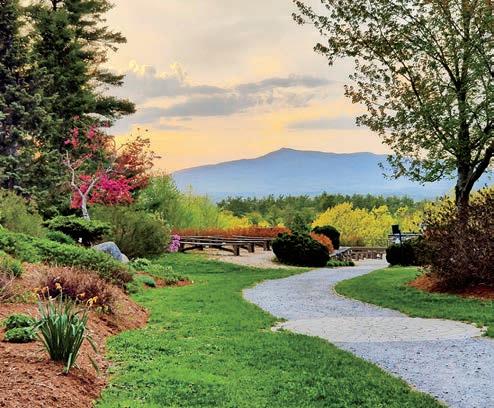

















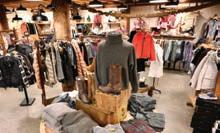





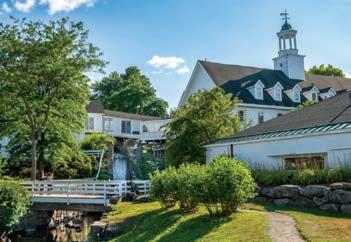












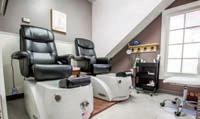










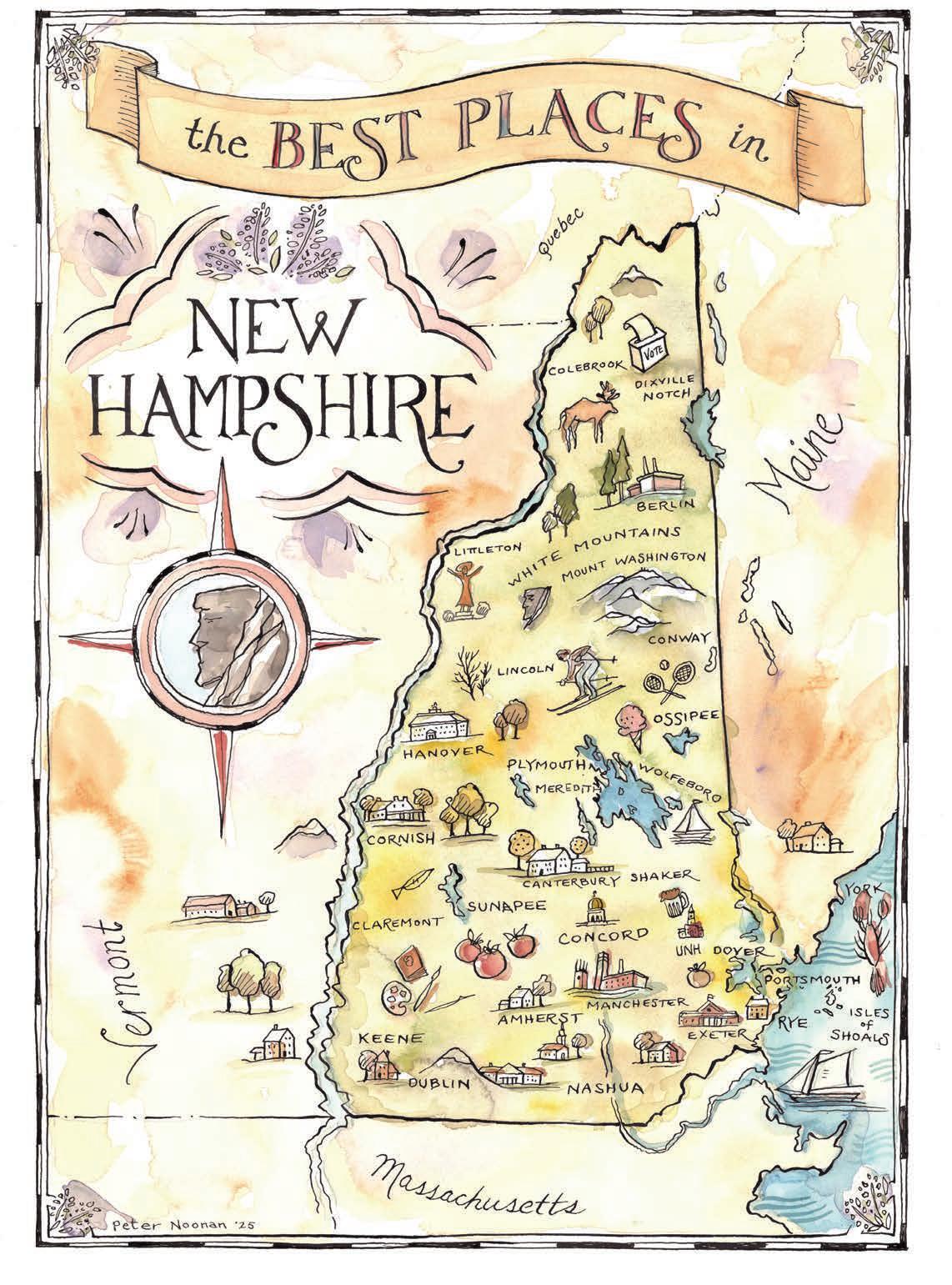


Looking for an opportunity to get out and explore the Granite State, but don’t know where to start? Don’t worry, we’ve got you. Our curated “choose your own adventure” guide gives you the map to food, adventure, shopping, nightlife and culture spots in each region so that you can create your own getaway (our list is just the jumping off point!), discover hidden gems and well-known favorites, make new memories and fall in love with our beautiful state and the people within it all over again.
Curated by the NH Magazine Team Illustrations by Peter Noonan
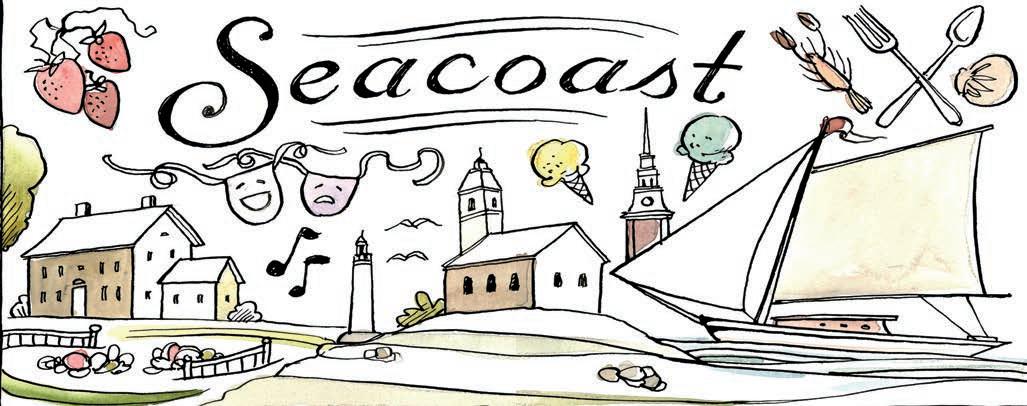
With about 18 miles of coastline, New Hampshire has the shortest coastline in the United States. But don’t let that fool you — those 18 miles are saturated with history and surrounded by picturesque towns that you won’t be able to help but explore. The Seacoast is packed with things to do, no matter the season.


Casual and cool, Hong Asian Noodle Bar serves delicious noodles that will lift your mood and warm your soul. You can enjoy a menu full of your favorites, like Xiao Long Bao, Bubble Tea and Goyza, along with dumplings and their signature noodle dishes. hongasiannoodlebar.com
From local farm to table, enjoy the rich flavors of the Seacoast. The Watershed has designed its food, setting, atmosphere and tasteful architecture to highlight the remarkable resources of its local surroundings. watershednh.com
La Maison Navarre • Portsmouth
This authentic French patisserie, bistro and wine bar is the perfect spot for a sweet treat during your day in Portsmouth. mnpastry.com


The Drift Collective takes sustainable fashion to a new level. They take secondhand clothing and upcycle it to create fresh, one-of-akind designs that you won’t find anywhere else. All of their apparel is made right there in-store, so customers can see the creative process that goes into creating each unique design. If you find something you love, make sure to take it home — it might never be done again! Drift also has fun, eclectic tchotchkes that will brighten up any space. thedriftcollective.com
Support over 40 local artists in the heart of downtown Newmarket. goodjujubyceci.com
Lunachics • Exeter
Enjoy a personalized shopping experience with good vibes and playful styles. lunachics.com


Granite State Whale Watch • Rye
An adventure you can only do on the Seacoast. With Granite State Whale Watch, you can experience the wonders of the Atlantic through a naturalist-led expedition. Their dedicated and enthusiastic crew knows everything there is to know about our coastal environment, and are committed to oceanic conservation. On your tour, you could see dolphins, whales, harbor seals, birds and so much more. While it’s up to the whales whether they want to be seen or not, Granite State Whale Watch boasts a 99% sighting rating and will offer a free pass on the rare occasion that they don’t spot any dolphins or whales. granitestatewhalewatch.com
Portsmouth Paddle Co. • Portsmouth
Take a scenic Stand-up Paddleboard Tour of the Seacoast’s calm waterways. portsmouthpaddleco.com
Great Bay National Estuarine Reserve • Greenland
Explore 10,000 protected acres in the heart of the Seacoast. greatbay.org

The Press Room • Portsmouth
No night is ever the same at The Press Room. Located in downtown Portsmouth, The Press Room is at the center of it all. Their first floor is home to a cozy bar with delicious bites and inventive drinks. Walk upstairs and you’ll find yourself at the party. With a never-ending stream of live bands, DJs, themed dance nights and more, you’ll always have fun. The Press Room has been Portsmouth’s night out for 45 years for a reason. pressroomnh.org
The Stone Church • Newmarket
Live music, karaoke, comedy, bingo ... The Stone Church has it all and has been the Seacoast’s spot to rock out for 50 years. stonechurchrocks.com
The Strand • Dover
For over a century, the Strand has been home to a variety of entertainment. Whether you’re in the mood to go dancing, see a play or a show, The Strand has something for you. thestranddover.com
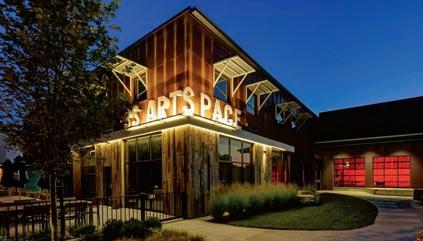
3S Art Space • Portsmouth
3S Art Space is a nonprofit that is a hub for all things art. The contemporary art organization and incubator is home to a mixed-use performance space, a large art gallery, a lobby gallery and a shop full of curated goods and a restaurant. At 3S, you can attend ticketed events, like themed dance parties and film screenings, and stroll through their gallery exhibitions, which are free and open to the public. 3sarts.org
Seacoast Artist Association • Exeter
See gallery exhibitions of local art, attend live music and art events, and take engaging classes. seacoastartist.org
Seacoast Repertory Theatre • Portsmouth
You don’t have to travel to New York to see your favorite shows. seacoastrep.org
Hotel Thaxter • Portsmouth
Hotel Thaxter reflects the culture of Portsmouth in its décor and design with local history and art woven into every guest room and guest space (and restaurant!). hotelthaxter.com
The Inn at the Bandstand • Exeter
Exploring downtown Exeter is a breeze when you stay at this boutique hotel. Housed in a Federal-style 1809 mansion, the inn offers distinctive guest suites, a Victorian living room and relaxing patio and garden inspired by the elegance of New England’s historic past. innbythebandstand.com
Wentworth by the Sea • New Castle
A Seacoast staple, the iconic façade and towering turrets have welcomed guests for over 150 years and is still a perfect, serene space for weekend getaways and celebrations. opalcollection.com/wentworth



Calling all nature lovers — this region is for you. The Dartmouth-Lake Sunapee region is nestled in the heart of the state, where outdoor adventure-meets-charming small-town character in an area full of history, tradition and classic Granite State beauty. Whether you’re skiing Mount Sunapee, grabbing a bite and beer in quintessential downtown Hanover or roaming the grounds at the John Hays Estate at the Fells, this area is the perfect year-round retreat for all ages.

Saint-Gaudens National Historical Park • Cornish
New Hampshire’s only national park includes four covered bridges, plus the home, studio and gardens of America’s greatest sculptor, Augustus Saint-Gaudens. Visitors can tour his studio, gardens and the surrounding trails. Bring a picnic lunch, camera and journal for the inspiration that awaits you. saint-gaudens.org
The John Hay Estate at The Fells • Newbury
From skiing and snowboarding to mountain biking and aerial obstacle courses, Mount Sunapee has something fun for everyone, year-round. mountsunapee.com
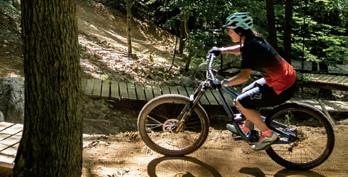
Mount Sunapee Resort
Newbury
From skiing and snowboarding to mountain biking and aerial obstacle courses, Mount Sunapee has something fun for everyone, all year round. mountsunapee.com
SIG SAUER Academy and Experience Center • Epping
Looking for a dose of challenge and adventure? This one-of-a-kind educational experience allows you to immerse yourself in the world of Sig Sauer from courses to seminars to a state-of-the-art public indoor shooting range. sigsaueracademy.com
If you’re looking for a fun afternoon of shopping, just head to downtown Hanover. Discover a variety of eclectic boutiques, local shops and inviting storefronts that offer unique finds to timeless classics. Stop by Bean’s Art Store, Still North Books & Bar, Main Street Kitchens, Lemon Tree Gifts, The Fourth Place and more for a mix of shopping experiences that cater to every taste and preference.
Spring Ledge Farm • New London

Check out this family-owned farm that offers fresh-cut flowers, vegetables and fruits. To complete your shopping experience, you will also find breads, dairy products, meats, pies, pasta, condiments and seasonings, coffee, tea, maple syrup and more. They are also a full-service farmer-florist, providing wedding and seasonal arrangements for events large and small. springledgefarm.com

Inn at Pleasant Lake • New London
Looking for a full-service weekend away by the lake? The Inn at Pleasant Lake offers a breathtaking waterfront retreat complete with award-winning upscale dining in a classic New England setting. innatpleasantlake.com
Hanover Inn at Dartmouth • Hanover
Overlooking the Dartmouth College Green, this hotel is the only full-service property in New Hampshire with a rich legacy of over two centuries. Pair New England charm with an abundance of things to do downtown, and you have the perfect year-round staycation escape. hanoverinn.com
Lebanon Opera House • Lebanon

Pleasant Lake Cheesecake Co. • New London
Looking to satisfy your sweet tooth? Sample from cheesecakes like apple pie, cherry limeade, New Hampshire mud and more. pleasantlakecheesecake.com
This classic, fan-favorite brew pub boasts more than 15 house-brewed ales and beers, homemade root beer and hard cider and traditional American fare, including pit-style BBQ. Enjoy menu highlights featuring locally raised meats and poultry, or burgers, steak and seafood in the dining room. flyinggoose.com
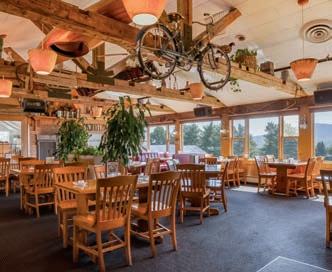
Lou’s Restaurant and Bakery • Hanover
A trip to the Dartmouth-Lake Sunapee area isn’t complete without a trip to Lou’s. Don’t forget to get a famous sticky bun to go. lousrestaurant.com
The Bend at Sugar River • Sunapee
A fine food delicatessen and country store offering handmade breakfast, lunch and dinner options created with locally sourced ingredients. thebenddeli.com
For over 100 years, this iconic spot has served as a vaudeville theater, movie house, city hall and performing arts center. It’s a vital hub and gathering place for people of all ages, and from concerts to comedy, they have something fun for everyone. lebanonoperahouse.com
Claremont Opera House • Claremont
Stop by this opera house whose goal is to build community through diverse art experiences. (We can all get behind this!) cohnh.org
New London Barn Playhouse • New London
As one of the oldest continuously operating summer theaters in the country, New London Barn Playhouse is the perfect spot to enjoy a night out seeing "Mary Poppins" or "Hairspray," and soak in some history with family and friends. nlbarn.org


As a catalyst for creativity, this gallery cultivates an openness of space and mind to inspire, nurture and showcase the artistic spirit that surrounds the Granite State. It offers events, exhibitions, artist studios and educational programs for artists of all ages and abilities. avagallery.org
Enfield
Step onto this 230-year-old property and learn firsthand about the Shakers who lived, worked and worshipped throughout this now-living museum. shakermuseum.org
The Ice Museum • New London
Come and explore Bill Kidder’s special collection of automobiles and Americana, from children’s ride-on toys to steam whistles and horse-drawn carriages. w fkicehouse.org

Tucked in the shadow of the famous Mount Monadnock, the region is a perfect blend of nature, history and New England charm (not to mention small-town tranquility). It’s a haven for outdoor enthusiasts, offering hiking, skiing and an abundance of opportunities for stargazing. With local spots like Kimball Farm, Peterborough Players Theater, a range of local breweries and more, this region is a hidden gem for explorers of any kind.
Toadstool Bookshops • Keene and Peterborough
This bookshop is one of the best independent bookstores in New England with its primary shop in Peterborough and a second spot in Keene. Not only do they have an enchanting selection of books, but they offer music and movies as well. toadbooks.com
Grove & Main Antiques • Peterborough
Shop for pieces for your home as well as jewelry, gifts for kids and skin care. Facebook
General Stores
Looking for a shopping snack break with a bonus of extra local goods? Then make sure to check out the Dublin General Store, Harrisville General Store or Sullivan Country Store.
Keene’s Main Street
We just want to generally direct you to Keene’s famous wide Main Street where walking and window-shopping are made an outdoor outing all its own, from shops like Hannah Grimes Marketplace and many more.

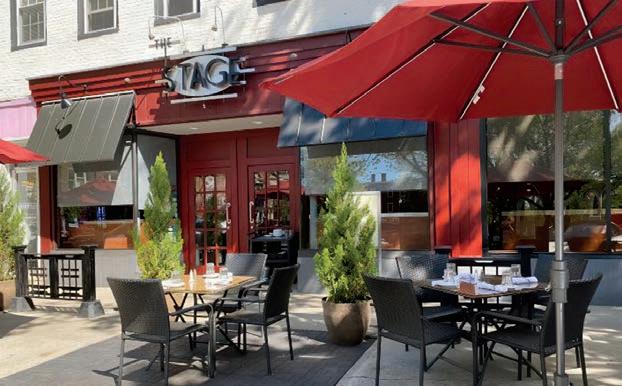
Keene
Located at the head of town square, this family-owned restaurant (for four decades as a matter of fact) offers contemporary American cuisine in an artistic atmosphere. Think classic comfort food staples, one-of-a-kind creations and fun cocktails that can all also be made alcohol-free. thestagerestaurant.com
Smoking Trout • Marlborough
Locals rave about the surf-and-turf fare available at this special spot. Don’t miss their crispy cheese! Facebook
Hungry Diner • Walpole
Known for their burgers, this farm-to-table, farmer-owned diner has a commitment to sustainable agriculture that’s reflected in their menu. Dogs allowed! hungrydinerwalpole.com
Kimball Farm • Jaffrey


You can’t go to the Monadnock Region and not stop by Kimball’s for some farmfresh ice cream. (We recommend buttercrunch or rum raisin.) kimballfarm.com

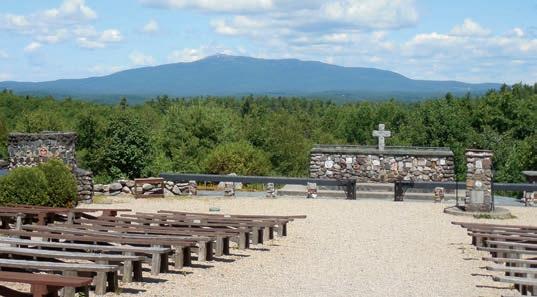
Cathedral of the Pines • Rindge
Woven throughout the 236 acres of Cathedral of the Pines are two trail systems (West and East) that offer a mix of hiking and exploring opportunities like their peace monument or cross-country skiing in the winter. Don’t forget to bring a picnic to enjoy by Grassy or Emerson ponds. cathedralofthepines.org
Harris Center for Conservation Education • Hancock
The team at this community science spot protects the land, connects others with nature and conserves wildlife through research. Check out their events and trails! harriscenter.org
Crotched Mountain • Francestown
From skiing (even night skiing) to accessible hiking trails in the summer, there is something for everyone at Crotched Mountain. crotchedmtn.com
*When all else fails , grab your bike and hit the Monadnock Region Rails Trails
Mariposa Museum and World Culture Center • Peterborough
For over 20 years, the center’s flagship space has explored the rich diversity of the world’s cultures, including dynamics of cultures in motion and multiculturalism in the country through exhibits and programs that engage your mind and senses. mariposamuseum.org
Harrisville Designs
Harrisville
Filled with history and textiles, the center offers classes on felting, knitting and weaving. (Stop by the retail shop, too.) harrisville.com

The Monadnock Center for History and Culture • Peterborough
This spot offers a variety of events, performances and exhibits that showcase the region’s historic and artistic culture. monadnockcenter.org
Theater • Peterborough
Based in a converted 18th-century barn just 3 miles from downtown, this professional theater company creates performances ranging from world premieres to classics. peterboroughplayers.org
Nova Arts • Keene
Nova Arts is a nonprofit collaborative arts initiative focused on emerging artists and underrepresented voices. novaarts.org
The Colonial Performing Arts Center • Keene
This 100-year-old theater always has something unforgettable going on. Whether it’s music, film, dance or comedy, a night out will leave you inspired and ready to experience the thrill of live performance again and again. thecolonial.org
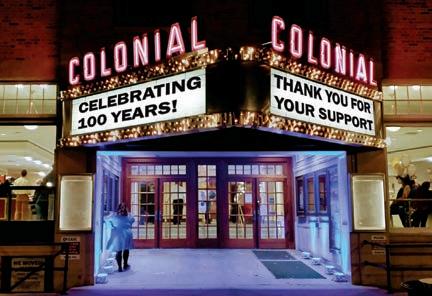
The Burrell House Inn • Keene
Historic charm. Modern amenities. Downtown Keene within reach? Sounds like the perfect combination for a weekend getaway. burrellhouse.com
Chesterfield Inn • Chesterfield
This New Hampshire bed and breakfast has all that you need for a relaxing staycation like locally sourced dining, country cozy rooms and an abundance of local activities to choose from. chesterfieldinn.com
Aldworth Manor • Harrisville
Picturesque New England meets historic elegance at this one-of-a-kind estate. With gorgeous grounds, miles of trails, a variety of lodging options and more, it’s the perfect place to get away from it all. aldworthmanor.com
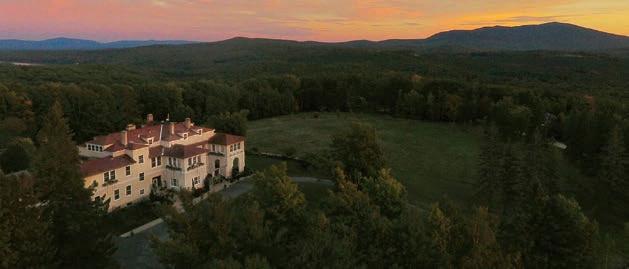

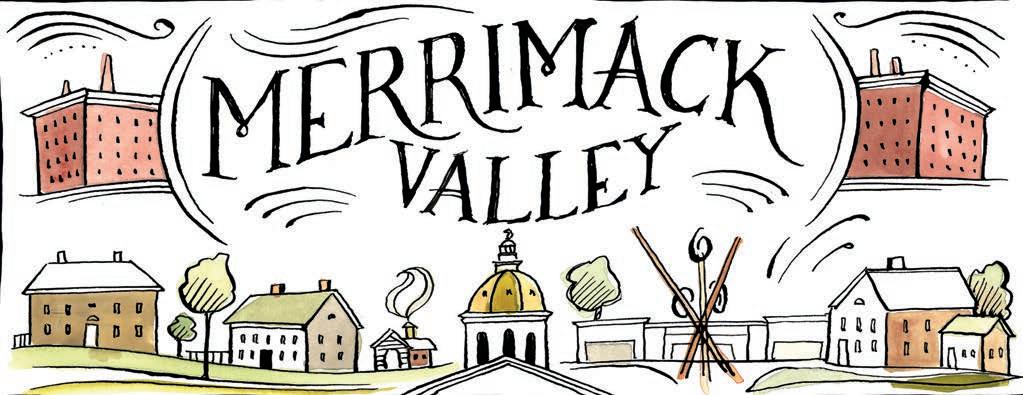
Merrimack Valley straddles the border of southern New Hampshire and northern Massachusetts, named for the river that was the primary transportation route for the textile industry in the 19th century. Of all the regions in New Hampshire, it offers the greatest contrast between urban and rural, with its once-gritty mill cities and their revived downtowns just miles away from forested hamlets where homes have ample acreage and produce is still sold by the roadside in the summer. It's also the most populated part of the state, so consider this a sampler from lots of possibilities.
The Bedford Village Inn • Bedford
Sorry, Manchester, but the BVI is the kind of place businesses book when they want a high-end experience for lodging and dining experiences. It offers several options, including the AAA Four Diamond-rated Bedford Village Inn Restaurant, the Italian-themed Trattoria Fondi, the casual fare Bedford Village Inn Tavern and Corks Wine Bar. bedfordvillageinn.com
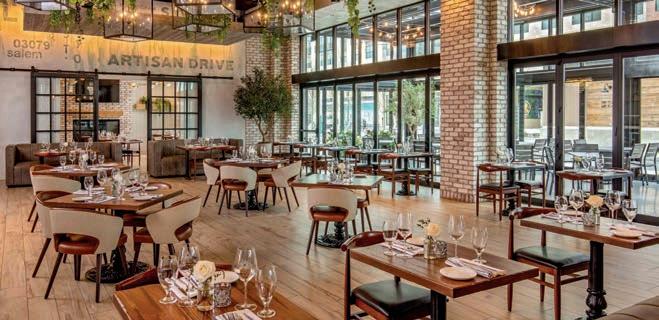
Kitchen • Salem
Joe Faro’s flagship restaurant, Salem’s Tuscan Kitchen, moved from its original downtown location to be the centerpiece of the Artisan Hotel in Tuscan Village, the 170-acre residential and business center Faro developed on the site of the former Rockingham Park Race Track. While Tuscan Kitchen and its casual sister restaurant and retail shop, Tuscan Market, generate a lot of fanfare, the village is home to more than a dozen other restaurants. tuscanbrands.com
The Puritan Backroom Restaurant • Manchester
For more than a century, the family-owned Puritan Backroom Restaurant has managed to stay hip with high-schoolers on prom dates and provide a source of comfort for older diners. If you hadn’t heard yet, they also invented fried chicken tenders! puritanbackroom.com

Margit Eder and Rob Wezwick took over ownership of the Ash Street Inn 10 years ago. Originally built in 1885, the inn is a converted Queen Anne Victorian home, perfect for travelers seeking quiet and calm. Its location offers great access to neighborhood amenities like the Currier Museum of Art, just a couple of blocks away. ashstreetinn.com
Hotel Concord • Concord
This independent boutique hotel tucked in the heart of downtown is just a short walk from shops and restaurants. The hotel occupies the fourth and sixth floors of the Capital Commons building and offers views of the State House. hotelconcordnh.com

Nashua Center for the Arts • Nashua
One of the state’s newest entertainment venues, the Nashua Center for the Arts opened downtown in 2023. The venue has a capacity of 750 for seated events and up to 1,000 with a standing room-only section. nashuacenterforthearts.com
SNHU Arena • Manchester
It’s been more than five years since SNHU Arena has been home to a minor league hockey team, but the nearly 12,000-capacity venue regularly hosts national comedians, rock and country bands, rodeos, monster trucks and other entertainment. snhuarena.com
Palace Theatres • Manchester
The Palace is a collection of theaters that includes its 834-seat namesake on Hanover Street and adjacent The Spotlight Room, plus the 300-seat Rex Theatre on Amherst Street and Forever Emma Studis youth theater on Pine Street. palacetheatres.org
Tupelo Music Hall • Derry
We liked it better when it was a tiny BYOB venue in Londonderry, but Tupelo Music Hall had to grow to keep up with the competition. Owner Scott Hayward’s bigger hall in Derry regularly books a wide variety of national musical acts spanning all genres. tupelomusichall.com
Just a few miles from the bustling city limits of Manchester, nature awaits along the trails around Lake Massabesic. NH Audubon’s Massabesic Center offers a great launching pad for bird watching and trail walking along Battery Point. The center is bordered by 130 acres of fields and features a mature deciduous forest with woodland wetlands, a pond, streams and marshes. nhaudubon.org

Looking for an extra dose of challenge and adventure? Jake and TerryAnn from Manchester Firing Range are here to help. Their gun range, courses and even women’s shooting club educates and brings awareness of firearms and the responsibility surrounding the ownership of them. gunsnh.com
Concord has the complete downtown experience, including a bookstore, a record store and a movie theater — all independently owned. In 2015, the city launched a twoyear, $14 million project to transform Main Street, reducing four lanes of traffic to two and expanding sidewalks. Shop for clothes or cookware, meet friends for dinner, and catch a show at the Capitol Center for the Arts.
This world-class museum, taken for granted by locals, is one of the Queen City’s crown jewels. Bragging rights: The Currier is the only art museum in the world with two Frank Lloyd Wright homes, which are both open for tours. currier.org

Take a crash course on the city of Manchester’s glory days as the center of the universe for textile manufacturing. It’s only fitting that the museum’s Millyard neighborhood is once again an epicenter for innovation. manchesterhistoric.org
This nonprofit science museum next door to the NHTI campus is dedicated to Christa McAuliffe, the Concord High School teacher and first civilian in space, and Alan Shepard, the Derry native and Navy test pilot who became the first American in space. The 45,000-square-foot center features interactive science and engineering exhibits, a planetarium, an observatory and educational programs. starhop.com


Founded in Manchester in 1986 by inventor and entrepreneur Dean Kamen, the nonprofit museum offers hands-on science learning opportunities for families and students. Exhibits include the LEGO Millyard, a representation of the museum’s neighborhood that includes more than 3 million pieces. see-sciencecenter.org


Here in the heart of New Hampshire, the White Mountains region is renowned for its fantastic views, endless outdoor opportunities, adventurous food and plenty of shopping. Check out what’s new and what’s classic here.
The Penguin • North Conway
The Penguin is one of those gift stores that “has everything,” in a really fun atmosphere. From fidgets to Funko, Archie McPhee, local brands and eclectic planting pots, every nook and cranny is filled with gawk-worthy gifts and practical items. penguingallery.com
Harman’s Cheese & Country Store • Sugar Hill
A must-visit shop and mail-order business that’s been around since 1955, Harman’s is renowned for its vintage cheddar, which some customers have dubbed the “World’s Greatest.” harmanscheese.com
The Red Barn • North Conway
Sea Dog Brew Pub and the Red Barn Furniture Outlet, with its wide range of curated vintage items, can fill up a good part of your day here. While you’re here, visit the area’s other outlets, just steps away. redbarnshopping.com
• Littleton
Just L Modern Antiques offers mid-century furniture and other vintage items. Remake your home from its large inventory then brag about your finds. Facebook
Still North Books & Bar • Hanover
Browse an extensive collection of curated books and audiobooks merchandise, then stop at its café for an egg Sammy, a healthy salad, or fancy cheese and crackers. stillnorthbooks.com

Besides the White Mountain Cider Company’s excellent restaurant is their gift shop, with its selection of freezer goods — good enough to take home and heat yourself. Their luncheonette here serves top-notch eats, too. The smashburger was an unforgettable flavor combination of mayo, thickly sliced pickles and bacon jam. If their cider doughnuts aren’t famous yet, they should be — super soft, their doughnuts deliver a punch of cider flavor and crunch. ciderconh.com
The team at Black Mountain Burger is serious about burgers — so serious that they offer adventurous seasonal “burgers of the month.” Depending on when you visit, taste the Elvis-inspired burger, or try your luck with a pizza burger. Their October burger remains a mystery. blackmtnburger.com
New to the valley is the Saco River Brewing Taphaus. Opening in the former Olympia Sports location, the taphaus features white oak floors in a timber-frame environment. Families looking for a full meal, as well as those seeking just a pint, are welcome here. Visit the 1,000-square-foot roof deck on warmer days for a bird’s-eye view of downtown and other sites. Facebook

Bethlehem
Supersecret Ice Cream is not so secret these days, but these inventive flavors are still worth a visit. Raspberry Yuzu and Honeycomb are just a couple delicious examples, but why not try them all?
supersecreticecream.com

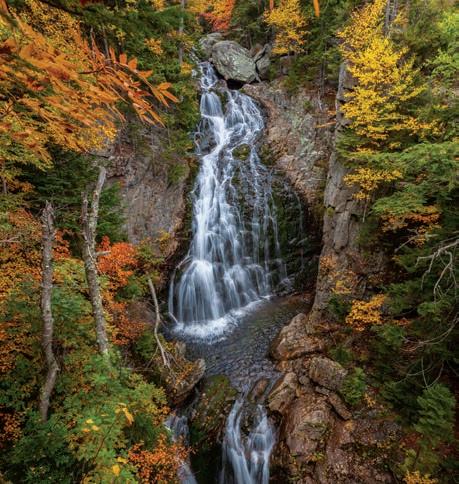
Take a waterfall tour
As long as the weather is not icy cold, waterfalls are abundant in the White Mountains. One classic New Hampshire outdoor trip is to pack a picnic, take a leisurely hike on a family-friendly trail, and enjoy lunch at one of the state’s many spectacular waterfalls. If the weather’s hot enough, dip your toes in the water to cool down. visitwhitemountains.com/blog/post/stunning-waterfall-walks
This new arcade on White Mountain Highway, in the old O Club Bar & Grillspot, is for everyone. MO’s has been reimagined and recreated into a mecca for games and interactive activities, including billiards, pinball and Skee-Ball; or try your luck with classic arcade games like Donkey Kong and Frogger. moshappyplace.com

This state park site in Madison contains the largest glacial erratic in North America, as well as Madison Boulder, a mammoth granite rock that weighs at least 5,000 tons. Bring a picnic, and then witness the magnitude of this majestic and historic site. nhstateparks.org/find-parkstrails/madison-boulder-natural-area
As long as we have New Hampshire, we have the Mount Washington Auto Road — a world-class adventure right in our backyard. If your car isn’t quite up to the task, then try the Cog Railway, a reliable and exciting way to reach the summit. mt-washington.com and thecog.com
Alpine Adventures is a daylong destination where you can try a zip line (from beginner to expert), take an off-road tour, test your balancing skills on an obstacle course in the air, and much more. alpinezipline.com

For a classic getaway and world-class comfort in the White Mountains, the Christmas Farm Inn & Spa is the perfect choice. This historic hotel on a farm offers carriage house suites, family barn studios and cottages. Special packages are geared toward couples and groups, and their restaurant and pub is top-notch. christmasfarminn.com
The Inn at Thorn Hill and Spa features cottages, suites and rooms in a relaxing and indulgent setting. Their spa options include aromatherapy, deep-tissue massage and even an anti-anxiety treatment. Enjoy a peaceful dinner at Forty at Thorn Hill to cap off a perfect day. innatthornhill.com
Just south of North Conway and the outlets is the Inn at Crystal Lake Bed and Breakfast. It’s a quaint full-service inn that also serves a dinner and pub menu. Wake up refreshed and ready to shop. innatcrystallake.com
Even though you’re just a short drive from the outlets, this unique, adventurethemed hotel in North Conway can feel like a destination getaway. Choose from “rustic cabin” to “NY penthouse,” to “victorian spa,” or “haunted castle.” Other themes to explore include “Wolf Den,” “Deserted Island,” “Cupid's Corner” and much more. There’s also a restaurant on-site and a spa — what else do you need? adventuresuites.com/about-us/our-backyard.php


The Lakes Region is beloved for a reason. As New Hampshire’s summer hot spot, there’s plenty of fun to be had by all. Whether you’re an outdoor adventurer, a night owl, a live music aficionado or an indoor person, this region is all about relaxation and letting the good times roll.
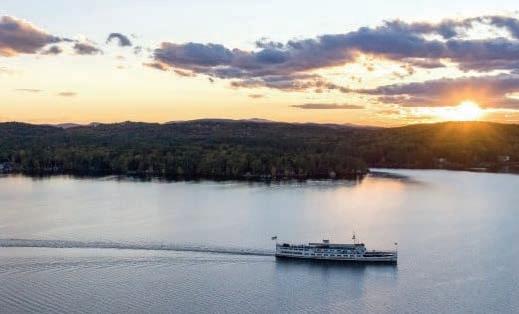
Mt. Washington Scenic Cruise • Weirs Beach, Laconia
Have a meal or take a relaxing scenic tour of Lake Winnipesaukee aboard the M/S Mount Washington. cruisenh.com
Cotton Valley Rail Trail • Wolfeboro
Enjoy the natural wonder of the Lakes Region by biking or walking this 12-mile rail trail. cottonvalleyrailtrail.org
SUP-NH Paddleboard • Alton Bay
Explore Alton Bay on a leisurely outing on the water. With New Hampshire’s most experienced paddleboard company, you can rent stand-up paddle boards for a build-your-own adventure, or you can book a lesson or tour and learn more about paddle boarding and the lakes with a professional. If you don’t want to leave your furry friend behind, they even offer a Paddle with Pups program! supnh.com
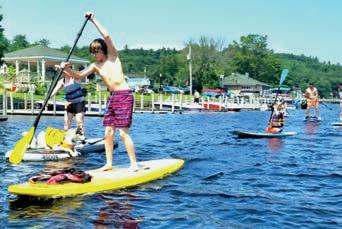
Full Circle Vinyl • Meredith
Music lovers of all ages flock to Full Circle Vinyl. With oldies and new releases, this record store has everything, includ ing the nostalgia of flipping through record boxes. They even have creative gifts, like vinyl coasters, earrings and bowls for the vinyl lover in your life. If you’re looking to offload some of your records, they buy collections. fullcirclevinyl.com


& Kindness • Laconia
This brand is all about promoting kindness, being yourself and lifting others up. chaosandkindess.store
Rise • Meredith
Shop sustainably at this curated, chic resale boutique. shopriseboutique.com
The Wicked Loon • Wolfeboro
At Wolfeboro’s newest fine dining establishment, you’ll enjoy a delicious meal in an environment that is upscale, yet approachable. With flavors that reflect the abundance of the region and creative cocktails that enhance your meal, you’ll want to try everything on the menu. thewickedloon.com
Beans and Greens Farm • Gilford
Farm-fresh café fares, along with a pizza wagon and taco truck. beansandgreensfarm.com
Water Street Café • Laconia
Explore the road less traveled at this off-the-beaten-path café for a hearty breakfast and refreshing lunch. waterstreetcafenh.com

The Big House • Weirs Beach

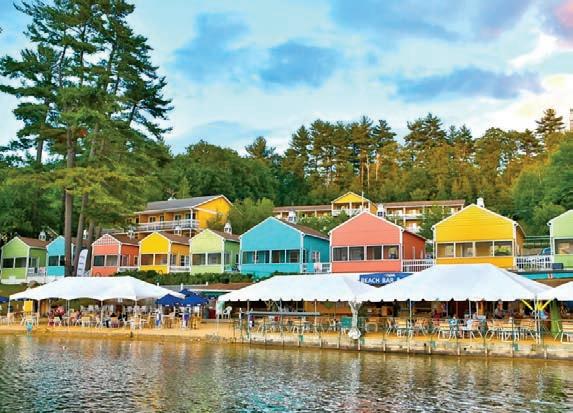
The NASWA Resort • Laconia
Bring the kids (and dog) for a fun weekend away on the lake. Enjoy s’mores on their private beach, paddleboard or swim your stresses away. naswa.com
House Bed & Breakfast • Center Harbor
Located in the middle of Center Harbor, this Victorian B&B is the perfect spot to get away and be taken care of as you stay in, or a home base as you explore the abundance the region has to offer. sutton-house.com
You can dance the night away at this storied nightclub. Enjoy beachfront views, great music and an even better vibe. Whether they’re hosting a live band, having a karaoke night, or have a DJ spinning your favorite songs, The Big House always offers a night you won’t forget. Plus, they’re open until 2 a.m. bighousenightclub.com
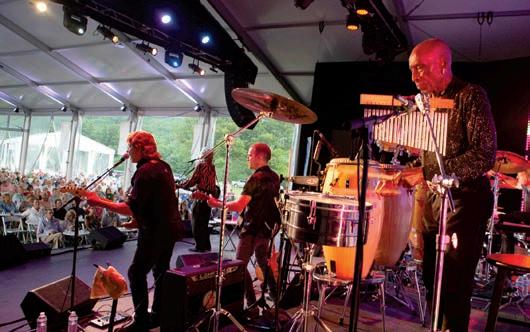
Great Waters • Wolfeboro Area
Live music at some of the region’s most scenic spots with a lineup that will keep you singing and dancing all summer long. greatwaters.org
Hermit Woods Winery • Meredith
If you’re looking for great music in an even better location, look no further than Hermit Woods Winery. hermitwoods.com
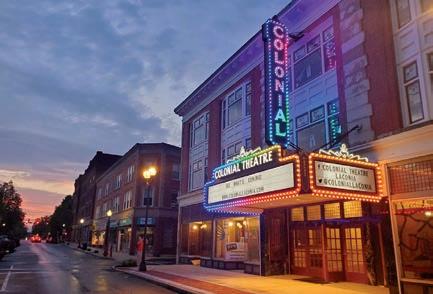
The Colonial Theatre • Laconia
See concerts, touring performances, speakers and more at this lovingly restored historic theater. coloniallaconia.com
Lakes Region Art Association Gallery • Tilton
At this centrally located artist’s hub, you can see the works of dozens of local artists. You can peruse the gallery, see the works of the current “Artists of the Month,” attend an art talk and take classes. The LRAA has been around since the 1940s, and they’ve been nurturing and inspiring local artists and visitors ever since. lakesregionartgallery.org
Makers Mill • Wolfeboro
From fiber arts to Cricut tutorials to metal shop and more, your creativity has no bounds at the Makers Mill. makersmill.org


When you think of the Great North Woods, aka the North Country, you think of the possibilities: endless fishing spots, white-water rafting, pristine hikes, tons of campgrounds and miles of fun. Even foodies can be wowed in this roomy and remote region. Experience the best that New Hampshire can offer by visiting these sites.
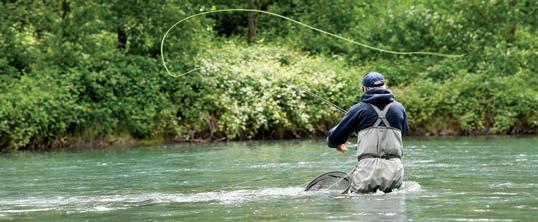
This fly-fishing shop provides much more than just flies and rods: Guide Chuck Degray offers fly-fishing tours, as well as drift and wade trips. Check their website for information on river flows and handy advice on fly fishing for northern pike in this area. northcountryflyshop.com
This campsite, which also has cabins for rent, offers numerous seasonal activities. Summer visitors can look forward to activities like fishing, horseback riding, whitewater rafting, swimming, ATV and kayak rentals. ramblewoodcabins.com
Beaver Brook Falls Wayside covers all the bases. In Colebrook, pick up Route 145, a picturesque and winding stretch of road, until you come to a quaint waterfall. Park here and have a picnic while watching the water flow by. Dogs are allowed here, too. nhstateparks.org/find-parks-trails/ beaver-brook-falls-wayside
New on the block, this fly fishing and supply shop offers guided outdoor adventures, including drift trips and casting lessons. Kayak, snowshoe and hiking tours abound. Upcoming “Outdoor Adventure Schools” will focus on fall foliage and compass and bow skills; a free outdoor adventure is offered for cancer survivors. pointsnorthnh.com
Coos County, in the northern tip of the state, is part of the Connecticut Lakes Region, which includes the First, Second, Third and Fourth Connecticut lakes. To hike the Fourth, park at the visitor parking section at the Canadian border and follow the signs. This scenic and remote hike that weaves through both countries brings opportunities for spotting pheasants and other wildlife, and you’ll be gifted with a beautiful view of the water toward the end. nature.org/en-us/get-involved/how-to-help/ places-we-protect/fourth-connecticut-lake
Gorham Moose Tours operates bus tours from the end of May through mid-September; their wildlife guides will help you safely spot this majestic animal. gorhammoosetours.org
Farther north, the stretch of Route 3 from Pittsburg north to the Canadian border, known locally as Moose Alley, is your best bet for spotting moose or deer that are crisscrossing the road in search of food and water. Dawn and dusk are the best times of day for moose-watching, though their numbers are dwindling. Watch for gawkers and bring your binoculars. wildlife.nh.gov/wildlife-and-habitat/ moose-new-hampshire/moose-spotting-new-hampshire

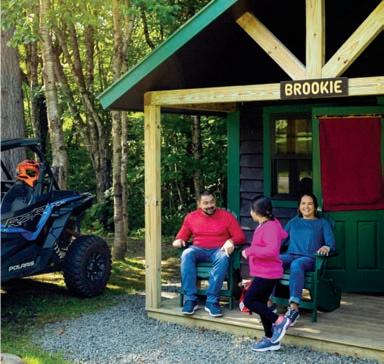
Coleman State Park • Stewartstown
People visit the North Country mainly for outdoor adventures, and there’s no better way to experience that than by camping out under the stars. Coleman State Park has camper cabins, lodges, campsites and lean-tos, and is pet-friendly. About 25 miles away is Lake Francis, a great family-friendly option for a day out. nhstateparks.org/hidden-gemslodges-great-north-woods
Shopping:

This restaurant on Back Lake Road offers wood-fired pizza, pasta, salads and seafood. Specialty cocktails, draft beer and beer flights fill out the menu, and they also make killer wings in seven styles. 1840nh.com
Go big or go home: This gem of a pastry shop serves homemade doughnuts and more with style. Just down the street from Colebrook Antiques and Uniques, Tori’s also serves other traditional fare: coffee and lattes, acai bowls and a fantastic “build your own breakfast.” Facebook
This spacious brewery and tasting room in an industrial setting serves craft beer, cans-to-go and tastings. Look for their patio on the river during warmer months. Recent eats include traditional nachos and wings, beef stew and taco salad. It offers live music some nights, and an open mic night is also hosted here. coos-brewing-company.square.site

This longtime sports bar and eatery on the main drag in Colebrook is a place for burgers, salads, wraps and even poutine. Other offerings include steak tips, maple glazed salmon and filet mignon, and there’s a selection of desserts like Mississippi mud cake and chocolate truffle bomb. Yum! blackbeartav.com
Shopping, the great American pastime, is not to be missed in the North Country, which has more shops than you might realize. There are artisans, craft goods, specialty stores and more.
The Fiddleheads gift shop sells whimsical items, handmade goods, jewelry and more. Some items are made by local and New England-based artisans. The shop has been around since 2007 and is still going strong. Fiddleheads also features art from CRAG: the Connecticut River Artisans Group. fiddleheadsusa.com
Young’s General Store •
The tagline for Young’s General Store, circa 1955, is “We sell generally everything,” and that is 100% true. Get your camping supplies, gas and propane tanks here, plus the deli meat for your picnic sandwiches and that crossword puzzle book you’ve been seeking. The walk-in beer cave is an added plus. Facebook
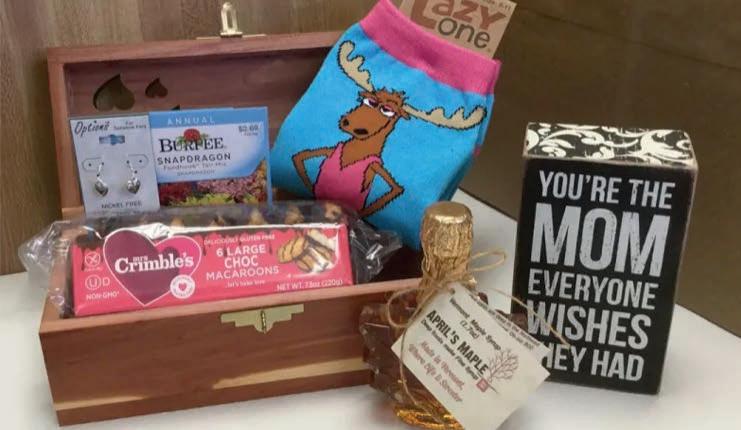
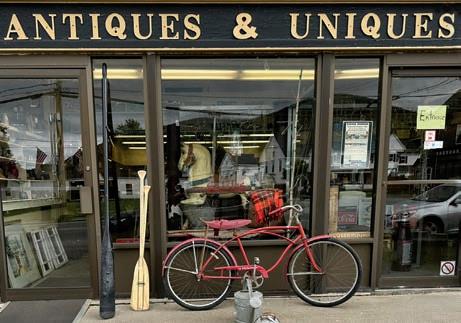
The deceptively small storefront on Main Street in Colebrook may lead to big discoveries inside. You’re likely to find your own personal style among the rare sundries from several antiques dealers. Find pop culture items, WWII memorabilia, old photographs, vinyl records and more. Note: The shop is closed Tuesdays, Wednesdays and Thursdays. Facebook
This country-style gift shop sells yarn, clothing, antiques and other quality secondhand home goods at reasonable prices. Facebook
This quaint shop sells lighthearted home décor, furniture and gifts. Their cinnamon rolls, cookies and pies should not be missed. Facebook NH



When Troy Farkas decided he wanted to launch a New Hampshire-centric podcast in 2023, part of the motivation was that he felt like there just wasn’t much about our corner of the world.
“There’s 6 million podcasts available to be listened to on Spotify,” says Farkas (who’s also a Spotify producer), but when it came to NH stories, he felt the industry was lacking.
Then, he launched his show. “I realized, ‘Oh wait. There’s actually a bunch of people in this area who do podcasts,’” Farkas says. It’s true: The Granite State is home to plenty of podcasts that span a wide range of genres, from nature and history to business advice and at least one Dungeons & Dragons actual-play series. Here, a few to add to your listening queue.
BY KARA M c GRATH


Genre: Nature
Average episode length: 5 minutes
Start here: “Exploring NH Audubon’s All Persons Trail and Pollinator Garden,” “Why Our Lakes Need Ice,” or “Atop Mt. Washington”
If you listen to “Morning Edition” on NHPR, you’re likely familiar with Chris Martin and Dave Anderson’s banter. The pair has been hosting “Something Wild,” a five-minute show that highlights all aspects of New Hampshire’s natural world, for about 17 years.
“Something Wild” is a partnership between three nonprofits — NHPR, the Society for the Protection of New Hampshire Forests, and NH Audubon — that each bring something to the equation.
“Chris is a scientist (with the Audubon Society), and he’s very careful with his language, and I tend to be a little more on the entertainment side of edutainment,” says Anderson, who does public relations and education for the Forest Society. “I’m trying to joke around and find chinks in his armor, and he’s trying to squelch that.”
Then, of course, there’s their producer, NHPR’s Jessica Hunt, who edits their sometimes hours-long conversations down to
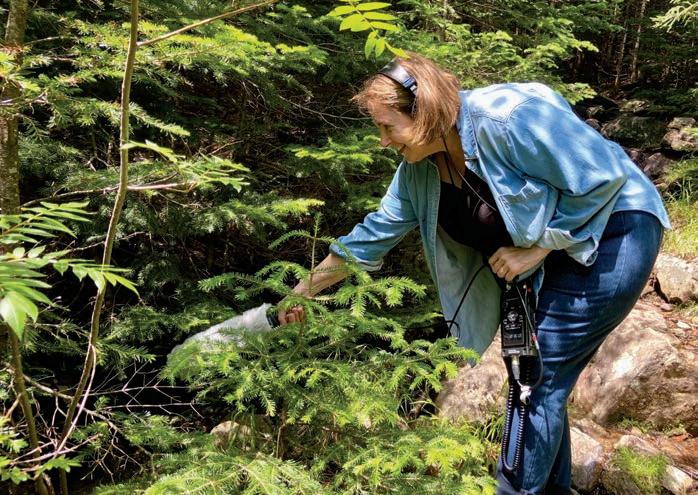
those mini stories that drop every two weeks. And they’ll bring in reinforcements when needed.
“Our ace in the hole here is that, if we feel like we’re not really up to speed on a particular topic, we can always find somebody who we know who’s willing to come on and talk with us,” Martin says. “It’s like phoning a friend in the Cash Cab.”
Though the show’s been on the air for decades (it started 10 years before Anderson
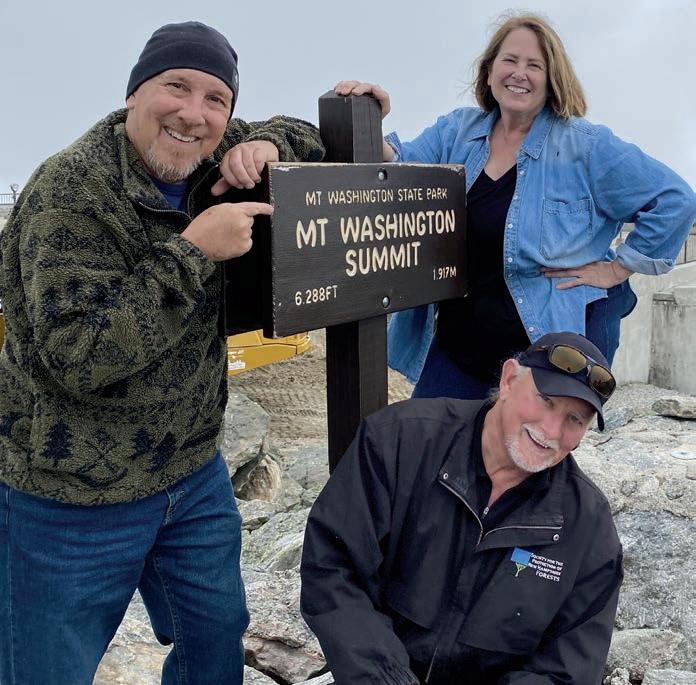
and Martin joined), they’re never stumped for new episode ideas.
“I will never run out of topics, because all you have to do is look out the window,” Anderson says.
The team tries to record a mix of seasonal and evergreen content, but all of it is local. “We talk about what’s happening in New Hampshire,” Martin says. While they don’t often get political, Hunt felt like, as a nature show, they couldn’t totally ignore climate change. An episode they did about how the phenomenon is affecting lakes in NH remains one of her favorites.
But mostly, they’re just trying to offer a bit of a reprieve.
“I think with the intensity of the news cycle, people are seeking some solace in natural history stories, because it provides something that is not influenced by what people are doing,” Anderson says.
On the radio, their show airs in the middle of the morning news. “It’s like, ‘OK, let’s stop and breathe for five minutes and get a little bit of Zen going.’”
Now that the show is also available in your favorite podcast app, it’s not limited to a New Hampshire audience.
“There are a lot of people who are displaced Granite Staters — in California or Florida or Texas or Iowa — who can get a little dose of New Hampshire even if they’re far away,” Martin says.
“It’s a postcard. It’s four minutes,” Anderson says. “Wouldn’t everybody like to have a naturalist friend who sends them a postcard every other Friday morning that says, ‘Hey, I saw something cool,’ and then tells a little story?”

Genre: Dungeons & Dragons Actual Play
Average episode length: 1.5 hours
Start with: “Episode 1: Intro to Knights of Roleplay”
For a certain corner of the podcast listening world, actual play shows — that is, shows in which the hosts record themselves playing a tabletop roleplaying game, most famously Dungeons & Dragons — are booming. “Knights of Roleplay” is New Hampshire’s entry into the genre.
“Knights of Roleplay” is the brainchild of Christopher Buckner, a stay-at-home dad and actor who’s been playing D&D since he was 13. He and the rest of the cast — Kate Worden-Buckner, Greg Holley, John McCollough and Sarah Pattee — had been playing D&D together for about five years when he pitched the idea of turning it into a podcast. Buckner says the crew was a little nervous about the idea, but ultimately willing to give it a shot.
“I said to them that if this in any way makes it so we’re not having fun playing Dungeons & Dragons, then we won’t have the podcast,” Buckner recalls. “It’s more important that we’re sitting around a table playing this amazing game.”
Those familiar with other actual play podcasts know there’s a wide range of forms these types of shows can take. On the one end are shows that feel more like a traditional scripted radio show with barely any hint that the dice are leading the plot; on the other end are shows that feel more like you’re listening to someone play a game of D&D, with plenty of dice clinking and table talk about rules. “Knights of Roleplay” is more the latter.
“I wanted people to learn how to play (D&D) by listening,” Buckner says. He’s even recorded shorter “Just the Tips” episodes for beginners. “Those are specifically there to try to give people advice on how to play.”
There are more than 150 episodes of “Knights of Roleplay,” but you don’t necessarily have to start at the beginning: Buckner recorded an intro to the podcast that outlines where specific campaigns start and end. “We have longer campaigns, shorter campaigns, and one-shots,” Buckner says. That intro episode gives listeners a guide for where to start based on how much time they have to listen. When I interviewed Buckner, the gang was in the middle of a
fun campaign called The Golden Vault, which follows an “Oceans 11”-esque format where their characters are trying to pull off heists.
So far, recording during their sessions has only had one major effect on the group’s gameplay. “Everybody has to stop eating,” Buckner says. (As a D&D player myself, I can confirm that snacks are typically a crucial part of the setup.) “Crunching and chewing on mic sounds awful.”

Genre: Interview
Average episode length: 1 hour
Start with: “Episode 710: Catching Up with Molly Seidel,” “Episode 781: Chris Heuisler, Family Feud Contestant,” or “Episode 677: Live with Ellie Kemper”
Ali Feller didn’t start running until she was in her 20s. Growing up in Hopkinton, New Hampshire, “I was not into sports. I was not athletic,” she says. “I was very into dance and academics.” But when she moved to New York City to work in magazines, she found herself living with a Craigslist roommate whose marathon medals intrigued her.
“She encouraged me to try going for a run,” Feller recalls, noting that the run “lasted about eight seconds before I was gasping for air and winded.” But she was hooked. She started running daily and launched a blog called "Ali on the Run" to write about her newfound hobby. The blog quickly gained an audience, which followed her when she started a podcast with the same name in 2017.
“My goal with the show was just to interview my friends,” she says. “It was an excuse for me to talk to my running buddies.” Eight

years later, that’s still the vibe. Most episodes are conversations between Feller and “anyone who enjoys a life on the run,” as she says in the intro. According to Feller, the show has more than 23 million downloads.
While her episodes with well-known runners like Molly Seidel, Keira D’Amato, and Des Linden are always “great for down-
loads,” she gets the most messages about episodes with everyday runners who have an exceptional life story, like a recent one with a woman who started running as a way to raise money for the Herren Project after her brother died from an accidental overdose. A couple of years ago, Feller interviewed both the winner and the last-place finisher from the New York City Marathon.
“Part of my goal is that this is a very inclusive space where people feel seen, they feel represented, and they know this is a place for them” regardless of where they’re at in their running journey, she says.
Feller currently lives in NH with her 6-year-old daughter and dog. She gives listeners glimpses into her life in the Granite State with her occasional solo episodes, where she answers listener questions. Feller is open about many aspects of her life beyond running, including her journeys with breast cancer and Crohn’s disease.
“I let (my listeners) in on my life as much as I feel comfortable. We call each other our best running friends,” Feller says. “I take that pretty seriously. The community to me is everything.”

BY
BY

Covered Bridges of New Hampshire
Genre: History
Average episode length: 45 minutes
Start here: “The Columbia Bridge” with Stacey Campbell and Sharon Ellingwood White
Of all the podcasts in this story, “Covered Bridges of New Hampshire” wins the superlative for clearest title. The show is exactly what it sounds like: a comprehensive history of the more than 50 covered bridges in the Granite State. It’s hosted by Kim Varney Chandler, a self-described “wicked podcast nerd” who published a book of the same name in 2022.
Varney Chandler has been a high school counselor for 29 years, but history has always been her side hobby. The book and podcast were “really just by accident,” she says. “I did not intend to do this.” In 2012, she and her husband moved to Hancock, home to the Hancock-Greenfield covered bridge, which sparked something in her.
“I got myself a list (of covered bridges) in the area,” Varney Chandler says. “I got very excited.”
She started photographing the bridges in her free time, which led her to the Historical Society of Cheshire County in

an attempt to research the bridges’ history.
Seeing her passion for the topic, the former executive director of the Historical Society, Alan Rumrill, suggested she write a book.
“I was like, ‘I can’t write a book,’” Varney Chandler recalls. “And he said, ‘Anybody can

write a book.’ Apparently, he was right.”
There are essentially two types of “Covered Bridges” podcast episodes: Varney Chandler and her guest(s) chat either about the history of one specific bridge (like “The Dalton Family with Rebecca Courser”) or the covered bridge-related history of an entire region (like “The Lost Bridges of Cheshire County with Alan Rumrill”). All are a delight for anyone who enjoys a nerdy deep dive into a fairly niche topic.
For a while, it looked like all covered bridges would become structures of the past, as towns replaced them with larger bridges that could hold cars. Some were destroyed by floods, though Varney Chandler says arson is still the No. 1 cause of lost covered bridges. When that happens, “it’s cheaper and faster for communities to put a concrete and steel bridge than it is to ... put in authentic covered bridges,” she says.
In larger cities, like Concord, which used to have several, covered bridges simply aren’t practical. “The traffic would be backed up everywhere,” Varney Chandler says.
But some communities see the value in preserving that piece of history. Varney Chandler says the town of Bradford recently did a giant bridge rehab project on their covered bridge.
“They raised (the funds) through their tax base,” she says. “They had a warrant article that just passed. There was no debate or arguing: It just passed.”

Genre: True Crime
Average episode length: 40 minutes
Start with: “Episode 1: Hide and Seek”
The "Bear Brook" podcast started “in the most boring way possible ... a press release from the attorney general’s office,” host Jason Moon says.
In 2015, since Moon was the lowest-ranking person at the New Hampshire Public Radio office, he was assigned to cover the press conference, which was about new evidence in a New Hampshire cold case.
What followed was three years of reporting on the case of the Bear Brook victims, an adult woman and three children whose remains were found — the first two in 1985 and the second pair in 2000 — in barrels in Bear Brook State Park in Allenstown. The victims remained identified for decades, and one is still unknown. According to Moon, the show has been downloaded “tens of millions of times.”
Moon’s reporting focuses on two methods of investigation that uncovered clues about the victims’ identities — radioisotope testing and forensic genetic genealogy (a newer forensic technique that also played a part in uncovering the Golden State Killer’s identity) — and the amateur sleuths who were scouring the internet for clues.

“I had two very different angles on the story,” Moon says of why they ultimately decided this needed to be a whole series, rather than a 6-minute spot on the radio. “I had a story about science and isotopes and atoms, and then I had a very human-centered profile story of a woman who was so obsessed with this case that she was going to the local library and reading the phone book until she got motion sickness looking for names of these people.”
Season 2 of the podcast focuses on Jason Carroll, a man who was convicted of a murder in 1992 based solely on a confession
he gave when he was 19. Now, Carroll is working with the New England Innocence Project in hopes that his conviction will be overturned.
When asked how he picks stories to focus on, Moon says, “I do want my stories to be entertaining, but that’s not the main reason I’m doing this. I’m doing them to hopefully reveal something that’s in the public interest for people to know about ... It’s not enough to have a good story. It has to be a good story that speaks to something larger than the sum of the events of the story itself.”
Genre: Business…ish
Average episode length: 1 hour
Start with: “How Flamingos Coffee Bar Became ‘Disgustingly Pro Woman’” or “F*ck the Bluprint! Ankati Day’s Journey from Costa Rican Jungles to Hosting Portsmouth’s Best (and Most Bizarre) Saturday Night Out”
Troy Farkas, the host of “Seacoast Stories,” is a native of upstate New York who moved to New Hampshire in 2023 after traveling for years. “I was checking a lot of things off the bucket list, and then I got tired of the constant uprooting of my life,” he says.
At first, living in NH was not great. Farkas landed in the hospital with a Type 1 Diabetes diagnosis, then got dumped “on top of a parking garage in Portsmouth.” He felt the universe was telling him it was time to move on, until he had another diabetes-related health scare during a yoga class. The instructor comforted him during class, then sent a follow-up email asking if he was OK. The same thing happened a few days later with a local gym owner. Feeling supported by the community convinced him to stay, and soon after, he launched “Seacoast Stories.”
It’s technically a business podcast because

that’s the box Farkas checks on the back end of the podcast players, but calling it such doesn’t encompass the wide range of conversations he has with his guests. Yes, Farkas often books people who could be considered micro-celebrities in the world of Seacoast businesses. The most downloaded episode is
with the owners of Vernon Family Farm in Newfields, which has a strong fanbase but has also made headlines for disputes with neighbors who aren’t thrilled about the live events the family throws on the farm.
“It’s a story that people feel very strongly about either way,” Farkas says.
But he’s also speaking with people who fall more into the artist side of things, like Ankati Day, a yoga teacher who hosts ecstatic dance classes on Saturday nights, and Jezmina Von Thiele, an author and Sinti Romani fortune teller.
“When I describe this to people, I say it’s local stories and personal journeys of people on the Seacoast who are doing big things,” Farkas says.
The podcast launched less than a year ago, but Farkas said his inbox is already flooded with pitches from other people who want to come on the show. He’s willing to talk to just about anyone, as long as he’s interested in what they do. “There’s a desire to hear from local people,” Farkas says of why he suspects the show is so successful. “And the stories of these people aren’t being as widely told as they should be.” NH

BY

When “Serial” became a phenomenon, one day in the car, I turned to my wife, Rebecca Lavoie, and said, “We should make our own podcast talking about episodes of ‘Serial.’”
We’d written five true crime books together and worked in radio. It just might work …
We fashioned a studio in a cedar closet and produced “Crime Writers On.” Since 2014, our panel — which includes local authors Lara Bricker and Toby Ball — has been doing thumbs up/thumbs down reviews of true crime podcasts. Our takes on good storytelling, quality production and ethical reporting have made us tastemakers in the space — influencing both listeners and podcast creators.
Ashley Flowers was an early fan before creating the juggernaut “Crime Junkie.” Actress Alison Sweeney went from CWO listener to creating the “Chronicle Mysteries” series on Hallmark Channel, playing a crime-solving podcast host. And imagine our shock to hear directly from THE Steve Martin that he’s a listener. That scene in episode 1 of “Only Murders in the Building” in which he, Martin Short and Selena Gomez bond by drinking wine and discussing “All is Not OK in Oklahoma” is an homage to us. (“I’m all for a good peeling of the onion, but let’s pace it up, people! Please!”)
Our reach extends far beyond New Hampshire. Our live show in Concord drew a crowd of only about 30, but in Dallas we played to a room of more than 150. One quarter of our audience is international. We’ve done meet-and-greets in Denver, Dallas and Nashville, but also London, Toronto and Dublin. (Stay tuned, Melbourne. Someday ...)
Since 2020, running our company “Partners In Crime Media” has been my full-time job. I also host a podcast called “These Are Their Stories,” with funny takes on “Law & Order” ripped-from-theheadlines cases. It once was a lightning-round question on ABC’s game show “The Chase.”
I spend each month, six-plus days a week, creating up t o 21 episodes for the seven different podcasts. That includes research, script writing, recording, editing and social media promotion. I find a growing amount of my time going into creating video clips of our audio podcast for YouTube, IG and TikTok.
Our biggest project is a co-production with Netflix. “You Can’t Make This Up” features conversations with filmmakers about their upcoming documentaries. The show won a 2025 iHeartPodcast award at a red carpet event at SXSW. For us, “Netflix and chill” is a workplace assignment, not a romantic evening on the couch.
The question I hear most often is “how do you make money doing that?” Aside from network deals, we are on Patreon.com. People pay between $5 and $50 a month to receive exclusive content or other perks. It’s like OnlyFans, but no one takes their clothes off.
We also make money the old-fashioned way: We sell ads. In podcasting, however, the most effective ads are personal endorsements from hosts. So when we say we love Bombas socks, it’s because they gave us a whole bunch of socks. The same for Third Love bras, Warby Parker glasses, and Brooklinen sheets. Our kitchens have been filled with food-through-the-mail services like Blue Apron, Hello Fresh, Butcherbox, plus a wine club or two. Did I mention the free Sleep Number adjustable bed? Who’d believe Casper mattresses would put three kids through college. (Use promo code “crime.”)
Ten years, 75 million downloads, and 1,500 hours of audio later, that car ride changed our lives. All produced — not in New York or L.A. — but in a basement cedar closet in the Granite State. As the tagline goes: listen wherever you get your podcasts! NH
Kevin Flynn is an award-winning broadcaster, author and podcast producer from Hopkinton.

Before
you hit the trails, consider these tips
to stay safe and healthy
BY KRYSTEN GODFREY MADDOCKS / PHOTOGRAPHY BY MICHAEL MAHONEY
Dr. Doug Dreffer, a family practice physician with DMC Primary Care in Concord, understands what facing an emergency in the White Mountains feels like. The avid hiker has reached the peaks of each of the state’s 48 4,000 footers in the White Mountains and considers himself to be fit —
and well aware of the dangers unprepared hikers face at high altitudes. But weather and terrain can pose unexpected challenges, even for the most experienced hiker.
“I got trapped in the White Mountains this past summer on the Presidential Traverse, and I almost ran out of daylight and water
at the same time,” he says. “I was hot and sweaty, and I was luckily on the trail to the AMC huts and got water there.”
He explains that he had poorly assessed the weather, never expecting the September day to reach 80 degrees. He says he only took enough water for an average New Hampshire fall day, not a hot one.
Years ago, Dreffer experienced a more serious emergency hiking Mount Isolation. He ruptured a disc in his back while crossing a stream. He was able to power through and finish his hike, but some hikers aren’t so lucky.
In 2023, the New Hampshire Fish and Game Department responded to 183 searchand-rescue missions, not unusual for the department. It received another 132 calls for

help that didn’t require a rescue response. Two-thirds of these missions, or 121 rescues, were related to hiking.
“You always need to be prepared,” Dreffer says. “You could twist your ankle and be up there for several hours, and you need to think of all the things you might need to be safe — sunscreen, adequate water, and other things that protect you from the wind and other elements.”
Your age shouldn’t keep you from engaging in outdoor activities, nor should asthma, allergies or old injuries. It’s all about knowing your limits and having an action plan. For example, it’s not wise to hike on highpollen days if you’re allergic to pollen, which
triggers your asthma. On other days, you can take your inhaler and have an asthma action plan. You should also bring an EpiPen and any allergy medications you might need.
For patients with diabetes, Dreffer urges caution if patients typically experience low blood sugar with extensive exercise.
“If your diabetes is not well controlled, and your blood sugar is high, your fluid intake needs to be higher,” he says.
“You always need to be prepared. You could twist your ankle and be up there for several hours.”
— DR. DOUG DREFFER
If you have underlying orthopedic or muscular problems, it’s critical to understand your limits and resist tackling an activity that is beyond your capacity. As we age, we also need to be aware of how our bodies respond to obstacles we might encounter in the outdoors.
“Older adults recovering from injury have an increased risk of falls. Their proprioception, or how they perceive their body in space, can also be altered by arthritis or neuropathy,” Dreffer says. “They shouldn’t be trying a new activity like rock climbing or ice climbing, and should stay in their comfort zone initially until they are fully recovered and have built up the stamina to take on harder and higher hikes.”
Dreffer reminds his patients to be physically prepared and well equipped before they tackle challenging hikes or engage in other strenuous spring outdoor exercise. Walking on an incline on the treadmill is a lot different than hitting the open trail, he says.
Running out of water — or drinking unsafe water — can quickly turn a fun outing into a call for help. If you’re no longer producing urine and feel your energy waning, it’s time to drink up.
“The rule of thumb is that you should drink a liter of water every two hours,” Dref-
fer says. “That goes up if it’s hotter, humid or you’re hiking in higher elevations. That comes out to drinking about two cups of water every hour, but most people don’t do a good job with that.”
Dreffer recommends bringing several water bottles. You can also wear a pack on your back that carries up to 3 liters of water and take sips along your hike.
“You shouldn’t rely on the water sources you come across,” he says.
While most people understand that sunscreen plays a key role in keeping exposed skin from burning, it offers limited protection. It can wash off if you get sweaty, and it’s easy to forget to reapply it if you’re in the middle of a long bike ride, run or hike. Because of this, Dreffer suggests covering up as much as possible.
“Exposed skin is more susceptible to sun and insects,” he says. “It’s smarter to wear long sleeves, long pants and wide-brimmed hats. It’s more effective topical-blocker.”
You may not feel hungry, but your body needs calories to keep going. Your caloric output depends on several factors, Dreffer says. If you’re hiking a very long trail with elevation gains in the winter, you’ll be burning a lot more calories. You’ll need fewer calories if you’re taking a leisurely walk on a flat surface.
“It’s like feeding a furnace,” he says. “You should try to eat something every 30 to 45 minutes,” he says. “When your blood sugar is low, you respond with an adrenaline rush. You might feel sweaty or nauseous — the same response signals dehydration.”
Small, packable, calorie-dense snacks such as trail mix — which includes nuts for protein, raisins and M&Ms for carbohydrates and energy — work well. Beef jerky and dried fruit are also good options. Runners often prefer sports gels, gummies or goo.
Whether the trail you seek to conquer originates in the White Mountains or your neighborhood, Dr. Alexia Strzalka, a family medicine doctor with DMC Primary Care in Bedford, says there are things you can do to prepare your body for outdoor activities.
Strzalka, who regularly hikes with her two
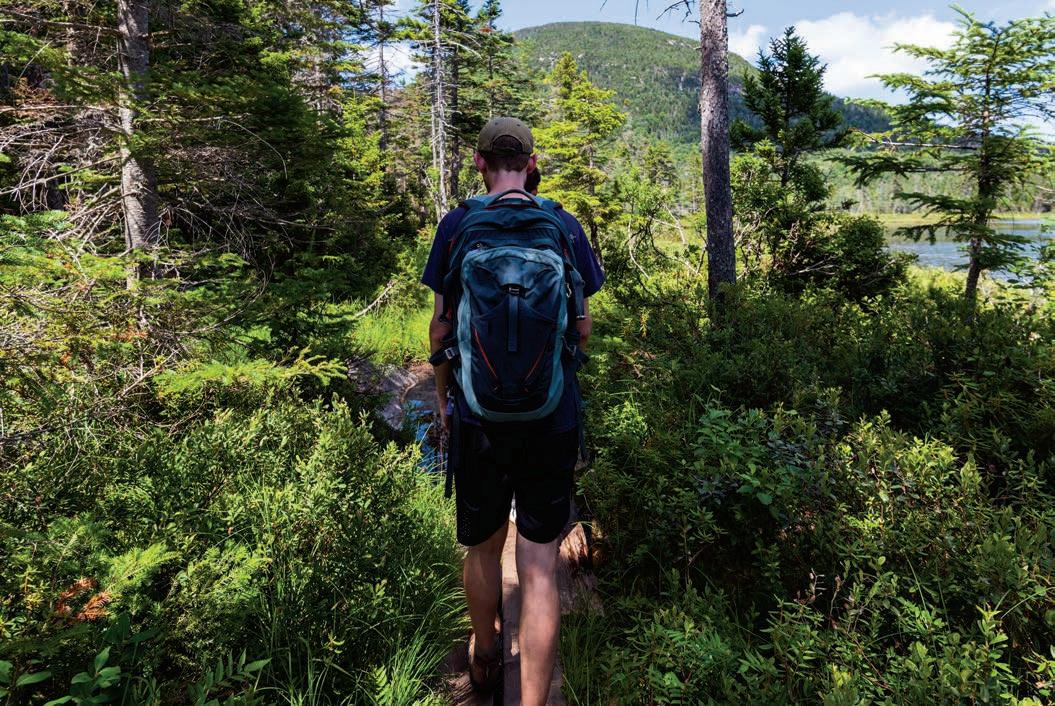
“Gauge where you’re starting from. You can increase frequency, duration, intensity and tempo.”
— DR. ALEXIA STRZALKA
children, ages 6 and 10, encourages people with pre-existing health conditions to talk to their providers to see if they need to adapt their exercise of choice.
“For somebody who has been totally sedentary, I’d first recommend doing lowintensity activities like walking, Pilates, swimming or dancing, and gradually increasing activity,” she says. “If you’re not totally sedentary, say you’ve been walking on a treadmill, gauge where you’re starting from. You can increase frequency, duration, intensity and tempo.”
While most people are focused on getting right to their activity, it’s important to stay strong and flexible to prevent injury. That includes taking part in dynamic stretching
and active movements like lunges, squats, leg swings, arm circles and pushups before you begin moving to replicate the activity you plan on doing, Strzalka says.
“You also want to start with some light cardio to slowly elevate your heart rate,” she says. “This could include jumping jacks, a light jog or walking.”
Your cooldown is just as important, and most people skip it, Strzalka says.
It is important to stretch out your hamstrings, quads and calves after you’re finished exercising. Depending on the intensity of your exercise, you should also slowly decrease your heart rate.
“After we’ve done a hiking trip, we’re anxious to get back to the car, but we really need to spend an extra couple of minutes cooling down,” she says.
If friends and family aren’t sure exactly where you’re running, biking or hiking, you’ll have a tougher time getting help if you encounter a problem, Strzalka says. In addition to carrying your cellphone, hiking or biking with a buddy or investing in a GPS-tracking device is probably wise and worth the investment.
If you plan on hiking this spring, Dreffer recommends purchasing a Hike Safe Card. According to New Hampshire Fish and Game, Hike Safe Cards cost $25 per person or $35 per family. The card is valuable for anyone hiking, paddling, cross-country skiing or engaging in other outdoor recreation.
“People who obtain the cards are not liable to repay rescue costs if they need to be rescued,” according to Fish and Game. “An individual may still be liable for response expenses if the actions that created the need for the emergency response meet criteria set forth by legislation.” NH
Dr. Doug Dreffer and Dr. Alexia Strzalka of DMC Primary Care are both accepting new patients. DMC Primary Care is the largest group of independent family medicine providers in the state and includes primary care locations in Concord, Derry, Goffstown, Raymond, Londonderry and Windham. In May 2025, DMC Primary Care opened a new office in Dover. All locations can be reached by calling 603-537-1300.

Each of our pieces is thoughtfully designed and artisan-made to elevate your everyday experiences while ensuring durability and style.
Osgoode Marley was founded in North Hampton, New Hampshire with the belief that fine leather goods should be crafted with quality materials and integrity. In 1998, we introduced our first line of wallets on this tenet. We remain dedicated to creating classic yet contemporary pieces that stand the test of time.
We practice a philosophy of “mindful style, minimal waste,” by expertly sourcing genuine leather from Buenos Aires, Argentina

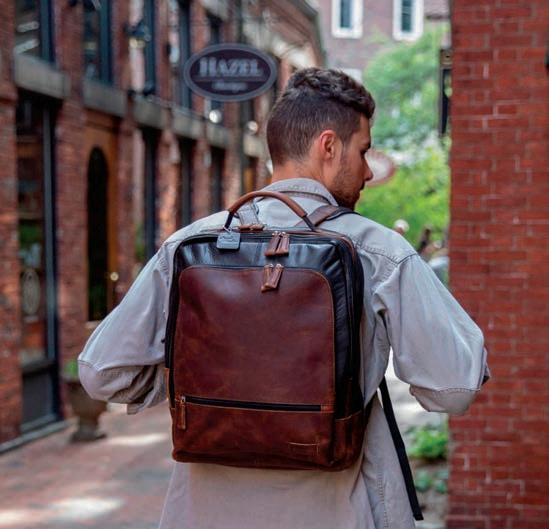
and working diligently to create the most yield from a single hide. Our artisans craft each item in a small production setting with vigilant inspections at all production stages.
Though our products are sold all over the world, North Hampton is our home. Our team remains small and close-knit, which allows us to provide a flawless shopping experience by personally handling orders and customer requests.



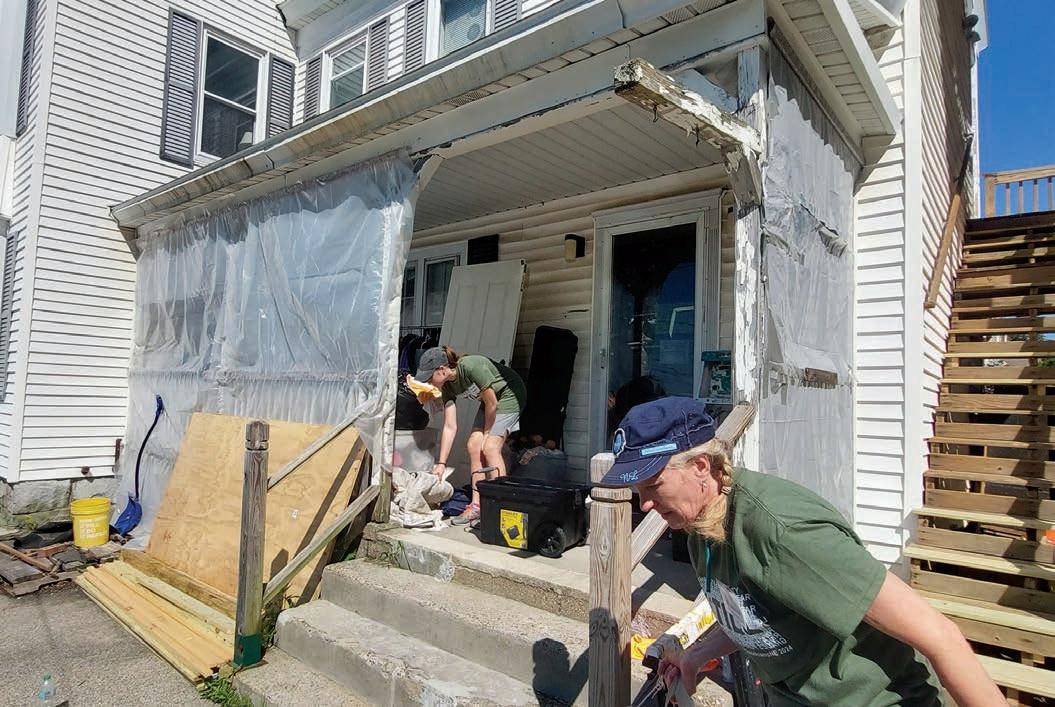
BY LYNNE SNIERSON
Is this not the fast that I choose: To loose the bonds of wickedness, to undo the thongs of the yoke, to let the oppressed go free, and to break every yoke? Is it not to share your bread with the hungry and bring the homeless poor into your house.”
– Isaiah 58:6-7
Housing, arguably, is the biggest crisis confronting New Hampshire. This Bible verse inspired David Yasenka to do something about it.
Yasenka served as the pastor of Triumphant Lutheran Church in Salem for 32 years and every year would use this passage as part of the readings for Ash Wednesday services.
But in 2014, it resonated with him more deeply and, as he says, defined his mission.
“The issue of homelessness became a major part of my daily routine while I was serving as pastor. People were seeking me for counseling and advice. It got to where I was spending a lot of my time working on situations where I had to get this person or this family housed before that night,” he says.
He and the church then decided to make homelessness the focus, and soon the outreach ministry was spun off into a nonprofit, private organization to help individuals and families in western Rockingham County who were facing homelessness, food insecurity and the associated struggles.
When it came to naming the fledgling effort, there was but one choice: Isaiah 58.
Yasenka retired from the pulpit and took on the role of executive director. “I was able to get some funding, and then we were able to help some people who were homeless and down on their luck,” he says. “Our original mission was to provide one affordable unit per year to someone in need.”
Mission accomplished. Over the ensuing years and with generous support from individuals and the community, Isaiah 58 has expanded to where it now owns or manages 10 mobile homes and apartments.
Clients all pay rent, though far below market price and based on income, and the rent collected covers all utilities and lot fees for them. Isaiah also provides food, clothing, household furnishings, personal hygiene items and budget assistance to those in need.
“I can safely say the number of people we’ve helped just in the last four years is in the thousands,” says Maggie Martin, who on-boarded as executive director after Yasenka retired in 2023. “I’m including what I call the one-and-dones. They’re the ones who just
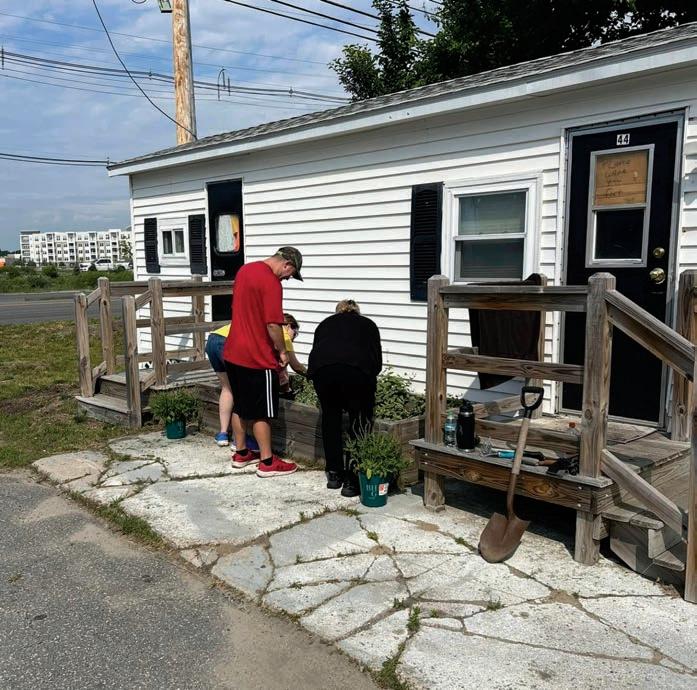
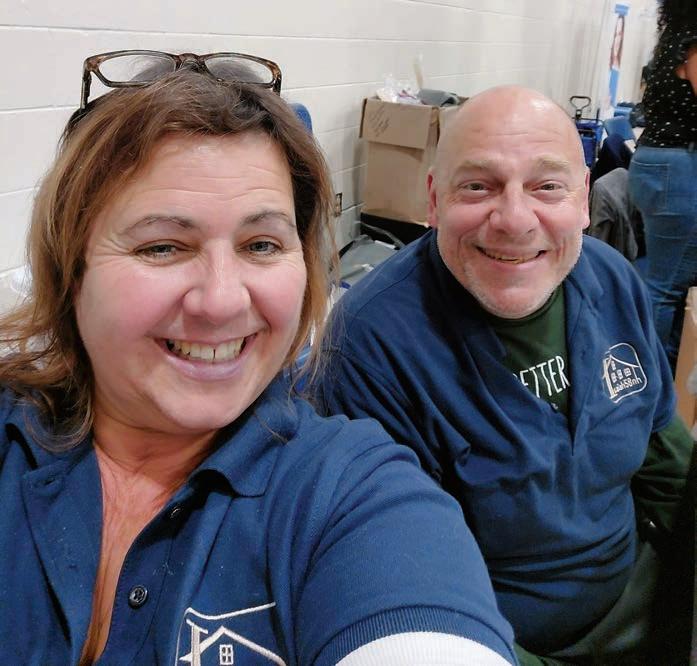
need a little bit of assistance, maybe that’s food or gas cards, and a check-in every now and then, and then they go on and are OK. Many others need much more, including being moved into housing.”
Isaiah 58, which is headquartered in Hampstead and owns a multipurpose building with a donation center at 28 North Broadway in Salem, was actively working with 30 folks and families at press time. The organization is also helping the 30 to 35 people living in their vehicles in the I-93 rest area near Exit 1.
“The issue of homelessness became a major part of my daily routine while I was serving as pastor.”
— DAVID YASENKA
“The number one issue in this state is housing. A recent study by the University of New Hampshire found that 55% of our population is unable to afford to be housed. It’s because of the exorbitant price of housing and the lack of inventory,” Martin says. “There is nowhere for people on fixed incomes or anyone existing on Social Security to live.
“For a rental, landlords want three times the amount of rent up front, and they want a credit score of 700 or higher. They also want a lengthy rental history. I understand why, but they’re not looking at the person’s whole situation,” she says. “We used to be able to call the landlord and say this applicant went through a rough time and doesn’t have the best history for the past year, but does have a great history before that and will have a great history going forward. The landlords don’t want to hear it anymore.”
So where do the unhoused go?
“They end up on our doorstep,” Martin says. “Unfortunately, we don’t have enough units available for everyone, so the others are living in their vehicle, or on somebody’s couch. Some are living in tents in the woods or at a campground. There is nowhere else to go.”
In Martin’s experience, the problem gets
David Yasenka, a counselor and life coach and retired Lutheran pastor, founded Isaiah 58 in 2014. Its mission is to help the homeless and the housing insecure.

“I can safely say the number of people we’ve helped just in the last four years is in the thousands.”
— MAGGIE MARTIN
worse every year, and the demands placed upon the organization grow greater. Her job is not easy. “You just do it. You do all you can. Every day. If you don’t, who will?” she asks.
Isaiah 58 has one other full-time employee, case manager Michael Traficante. He is one of the success stories.
“I had gotten custody of my three young children, including the baby, and I had some money saved. I thought it would last longer than it did. I was working but for short money, and I needed more to meet my bills and take care of my kids as a single dad,” he recalls.
In 2014, he was introduced to Yasenka.
“I wasn’t a client, but I certainly fit the bill as a client. I wasn’t homeless, but it was a
real rough time. Isaiah was able to help me get through it and then employ me. I never thought of myself to be a social worker. But because of David’s kindness and the organization’s help, I learned to love doing this work. I went through a lot of the same situations our clients are in,” Traficante says.
Martin considers Traficante the finest case manager she has encountered in her 38 years in this business.
“He does it without any formal schooling. He can go into a board meeting or meet with people living under a bridge and be
the same person and be just as relatable and just as effective. He is the epitome of what happens when you give somebody a chance. Absolutely,” she says.
This work comes with a lot of heartbreak for Martin and Traficante, but there are the rewards and the renewal through hope.
“We celebrate every client success. Each one is huge,” Martin says. “It’s the moments when we see their real joy, their real happiness, that look in their eyes. That’s what keeps us going. Even if it’s a small little victory, it’s a celebration.” NH
Isaiah 58’s location at 68 North Broadway in Salem provides household items, furnishings, food and clothing to those in need. Anyone may choose whatever they like, and even better, everything is free.
“The downstairs is our donation center and a small food pantry that also has personal hygiene items,” says Maggie Martin, with a nod to Carrie Wieland, who runs the center. “We have a washer and dryer there for use. The second floor has a makeshift apartment, with a young client living there. The second-floor bathroom has a shower that we open up for people who are living in their vehicles or a tent or just don’t have hot water. We provide towels and personal hygiene supplies. The third floor has an apartment for a mom who’s had a lot of struggles but now has been able to reconnect with her 10-year-old son and they’re rebuilding their relationship.”
There’s more. A microwave and shelf-stable foods are on the side porch so people can pull up in their vehicles and warm up things to eat at any hour. There’s even a blessing box with personal hygiene items to “grab and go.”
For more information: isaiah58nh.com. All gifts are tax-deductible.



















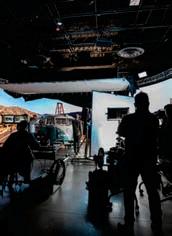










MAY 2-3
NH Farm, Forest and Garden Expo
Discover the best of New Hampshire’s agricultural and forestry industries at this family-friendly event. Enjoy exciting activities, including horse-drawn wagon rides, the Dark Horse Lumberjack Show, live music, maple cotton candy, farm animals and live demonstrations for all ages. From gardeners and hobby farmers to industry professionals and curious homeowners, there’s something for everyone. $10-$12, Friday, 9 a.m.-5 p.m. and Saturday, 9 a.m.-4 p.m., Deerfield Fairgrounds, 25 Stage Road, Deerfield; nhfarmandforestexpo.org
MAY 3
Aladdin
Safe Haven Ballet, New England’s premier ballet company, brings you and your family into a world of movement and magic with “Aladdin.” Gather the family to be reintroduced to all your old friends, Aladdin, Jasmine, the Genie and so many more. If you are new to ballet or a ballet enthusiast, Safe Haven’s team of talented dancers, combined with dynamic choreography and straightforward storytelling makes this a fun and exciting show for everyone. Ticket prices vary. 4:30 p.m., Nashua Center for the Arts, 201 Main St., Nashua; safehavenballet.org

MAY 8
Taco Tour Manchester
The world’s largest taco tour returns to Manchester to take Elm Street by the taco. With over 60 restaurants serving tacos for $3 each, a concert in Veteran’s Park and Elm Street completely closed down to traffic, the taco will reign supreme once again in the Queen City. Attendees can vote for their favorite taco, and the winning restaurant will receive the Golden Taco Trophy and $1,000 to donate to the charity of their choice.
4-8 p.m. in downtown Manchester. tacotourmanchester.com

Join the Colonial Garden Club of Hollis for their annual May Garden Sale. More than 2,000 plants, trees, shrubs and Mother’s Day Baskets will be for sale. The sale proceeds provide the club’s operating budget and fund many worthwhile projects in the town of Hollis. The Garden Club is proud to contribute to local scholarships, the Beaver Brook Association, the Hollis Social Library, civic-improvement projects and seasonal town plantings. Free. 9 a.m. to noon, in the field next to the Lawrence Barn, 28 Depot Road, Hollis; hollisgardenclub.org
Head over to Stratham Hill Park for a wonderful day where local flavors meet great company. The lineup of food trucks has something for everyone. So come hungry, bring your friends and family, and enjoy the simple pleasure of good food in the great outdoors. $10-15, noon to 4 p.m., Stratham Hill Park, 270 Portsmouth Ave., Stratham; greatbayfoodtruckfestival.com








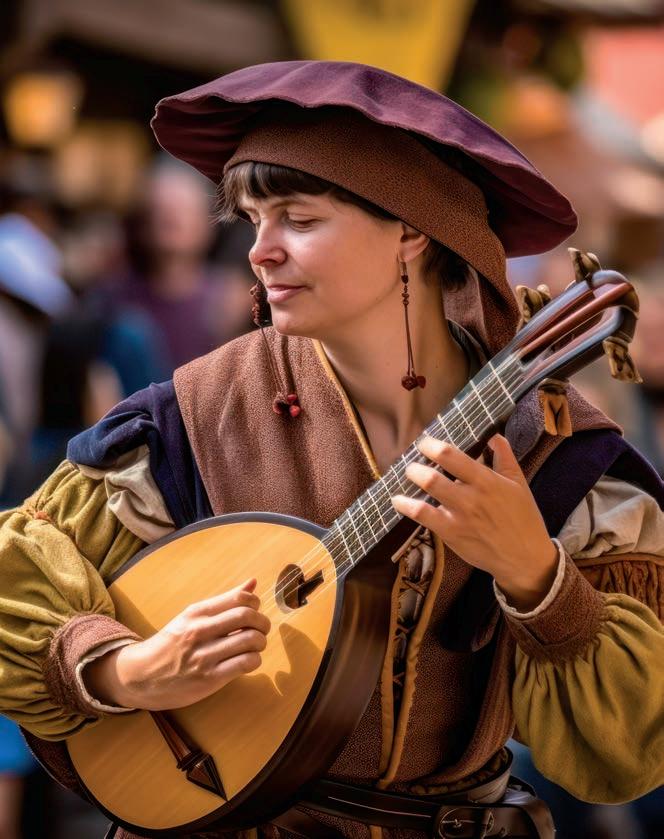
MAY 10, 11, 17 & 18
New Hampshire Renaissance Faire
The NH Renaissance Faire is a family-friendly, educational, visual, theatrical and fantastical event held in gorgeous (and central) Fremont. Noble knights and fair maidens alike will find something to enjoy in this longstanding Granite State fête. Spread across two weekends and a massive fairground venue, this Best of NH award-winning event includes everything from an archery range and knight, pirate and gypsy encampments to a zoo animal area said to contain real dragons. From historical knights to fantastical fairies, the event brings together education and fun for the whole family. Merchants are mainly local artisans with an emphasis on handmade items including costumes, jewelry, pottery, herbals, weaponry and more. Some will even demonstrate their craft live for your enjoyment. $15- 20, 80 Martin Road, Fremont; nhrenfaire.com
MAY 10-11
With events full of awesome trucks, amazing stunts, action-packed excitement and big air, you’ll become a fan for life once you experience Monster Jam live. Watch as 12,000-pound trucks stand on two wheels and fly through the air. As a spectator on hand, you’ll be in the middle of all the intense action and get to score drivers in real time based on skills, stunts and saves. See the world’s most popular trucks like Grave Digger, El Toro Loco, Sparkle Smash and more at Monster Jam. Ticket and times prices vary, SNHU Arena, 555 Elm St., Manchester; snhuarena.com
MAY 10- 11
Now in its 47th year, the NH Sheep and Wool Festival features programming both for producers of sheep and wool and for those of us who are just fans. Don’t miss the long list of workshops and demos on woolen clothes-making, or for a good laugh, the human-and-sheep-partnered costume contest. Ticket prices vary, Saturday 9 a.m.-5 p.m., Sunday 9 a.m.-4 p.m., Deerfield Fair Grounds, 34 Stage Road, Deerfield; nhswga.org

MAY 16-18
The Thing in the Spring
Founded in 2008, The Thing in the Spring is a legendary annual New Hampshire music and arts festival that works to bring the outside world in and connect myriad undergrounds in accessible ways. Originally in Peterborough, The Thing now calls Keene’s Nova Arts home. novaarts.org. Ticket prices vary, 8 Emerald St., Keene; novaarts.com
There’s no shortage of Seacoast-area festivals on the calendar this summer, but you can get a head start on the season with this fest from Town.Exeter. Arts.Music. There’s plenty of family programming, but this party is especially impressive with attractions like a rock-climbing wall, an ecovillage and sets from hip local musicians to supplement the standard arts festival fare at Swasey Parkway. Downtown Exeter, teamexeter.com
Celebrate spring at this festival in downtown Warner. Enjoy local vendors, running in a color run 5K and so much more! 9 a.m.-4 p.m., Downtown Warner, Warner; warnerfarmersmarket.org & Facebook.

Tell Me Lies - The Fleetwood Mac Experience performs the iconic music of Fleetwood Mac while paying tribute to legendary band members Stevie Nicks, Christine McVie, Lindsey Buckingham, Mick Fleetwood and John McVie. Heralded as the most authentic Fleetwood Mac Experience, Tell Me Lies performs all the band’s hits spanning six decades, as well as Stevie Nicks’ best known solo work. $35-$40, Claremont Opera House, 58 Opera House Square, Claremont; cohnh.org
Bring a blanket and the whole family to kick off summer with this incredible fireworks display. 9:30 p.m., Hampton Beach, 115 Ocean Blvd., Hampton Beach. (603) 926-8717; hamptonbeach.org
Find additional events at nhmagazine.com/ calendar. Submit events eight weeks in advance to Elisa Gonzales Verdi (events@nhmagazine.com) or enter your own at nhmagazine.com/calendar. Not all events are guaranteed to be published either online or in the print calendar. Event submissions will be reviewed and, if deemed appropriate, approved by a New Hampshire Magazine editor.
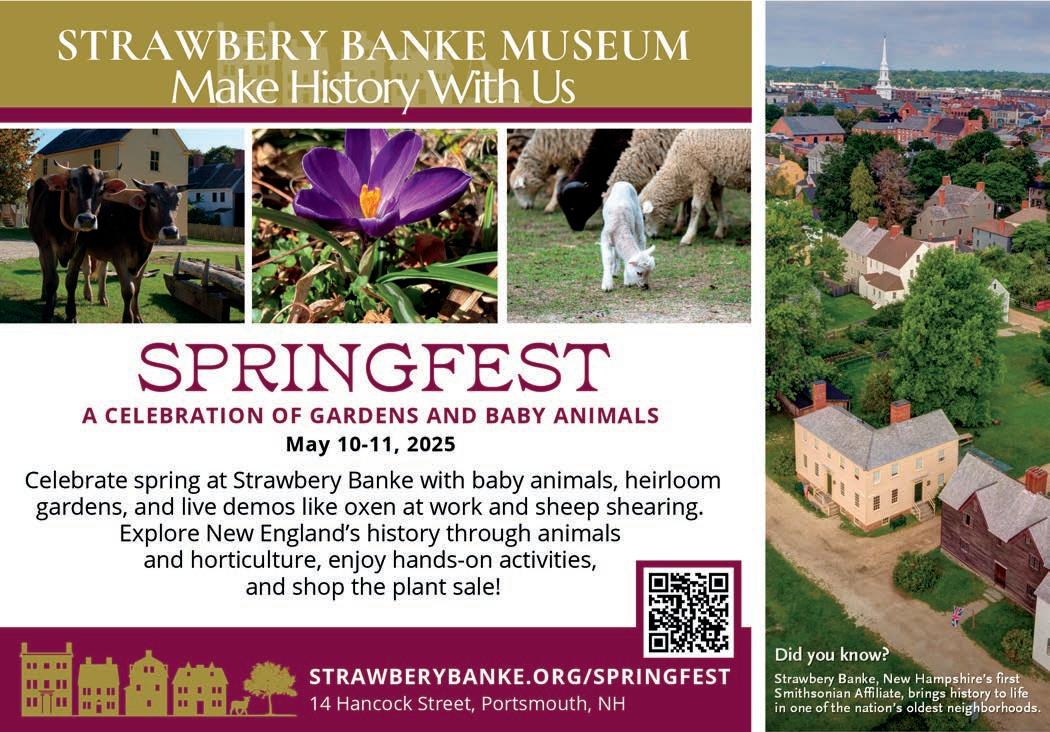

Presenting Sponsor:
Academic Nurse Educator/Researcher
Advanced Practice Nursing
Ambulatory Care Nursing
Emergency and Critical Care Nursing
Front Line/Administrative Nursing
Gerontology Nursing
Hospice-Palliative Care
Maternal-Child Nursing
Medical Surgical Nursing
Professional Nurse Educator
Nursing Informatics
Nurse Innovator/Entrepreneur and Quality Improvement
Pediatric & School Nursing
Psychiatric & Mental Health Nursing
Community/Public Health Nursing
Senior Nurse Leader EXCELLENCE
“Pain is temporary; pride lasts forever.”
— Dan Gable, U.S. wrestling legend

BY BRION O’CONNOR / PHOTO BY JAY PHILBRICK
With a mile to go to the summit of Mount Washington, I found my rabbit. I had been struggling, mightily, on the eastern flank of the Northeast’s tallest peak, climbing nonstop for some 6-plus miles and more than 90 minutes atop my trusty two-wheeler, and desperately needed extra motivation.
The year was 2006. Although it was the third Saturday of August, a chilling fog blanketed Mount Washington above tree line. After more than an hour of pedaling — grinding would be more accurate — up the mountain’s relentless Auto Road, my legs felt like spent shotgun shells. My lungs and lower back were in open revolt. Worse, my gray matter began wandering into dangerous territory. Delirium was my ever-present co-pilot.
This is what the Mt. Washington Auto Road Bicycle Hillclimb can do to people. It can take healthy men and women and reduce
them to a shaking, simpering bag of bones over the course of a few miles. Billed as “America’s First and Oldest Manmade Attraction,” the 164-year-old Auto Road twists and turns like a wet noodle across the 6,288-foot granite knob benevolently known as “the Rockpile.”
But the most daunting aspect of the road is its relentless pitch. It is, as one rider warned me, “a wall.” Each time I turned around one of the road’s 70 corners, it tilted upward. Again and again. Bottom to top, the road rises 4,270 feet from Pinkham Notch to the summit in a mere 7.6 miles. The average grade is 12%, with sustained sections of more than 18%. Some stretches are so steep I resorted to zigzagging across the road, like a sailboat tacking against the wind. There’s no place to coast. At the summit’s legendary “Corkscrew,” the pitch hits an ungodly 22% over the final 100 yards.
I knew what was coming, having done
the ride two years earlier. That day lives on in family lore, as my wife and two young daughters waited patiently for me to arrive (all racers are required to have supporters at the summit to bring them back down). It took me so long to finish that my youngest, Brynne, was convinced that I’d gotten blown off the mountain. It was an understandable fear — the Auto Road can feel as claustrophobic as a mining shaft below tree line, barely two cars wide. Above 4,000 feet, the road doesn’t widen, but the sense of space does, with spectacular vistas and precipitous drop-offs. There’s no protection.
That’s when I spied my rabbit. Clad in a bright yellow helmet and jersey, he was a wiry cyclist, roughly 300 yards ahead of me. In the distance, I spied the Mount Washington Weather Observatory, looking like Dorothy’s Emerald City of Oz. I put my head down, took a deep breath, and muttered: “You can catch him.”
Ignoring the burning in my thighs, I pushed harder, turning over the pedals. I snared my rabbit just at the base of the Corkscrew, gritted my teeth and prayed my muscles wouldn’t go into full spasm. Serendipitously, an event photographer caught an image of me as I crested the summit, wincing, my rabbit just behind me.
I couldn’t resist telling my young daughters, when they saw the photo, that I had just passed a yellow-clad Lance Armstrong — during the height of his Tour de France dominance — at the finish line. It was a classic “white lie” that dads will tell their kids, just for giggles. What I didn’t tell them is that I finished a full hour behind the winner, Ned Overend of Colorado (New England’s own Tyler Hamilton won the race, two minutes ahead of Overend, but has since been stricken from the event’s record books due to admitted drug use). My average speed? Barely 3½ miles an hour.
Of course, where I placed didn’t matter. It likely doesn’t matter for 90% of these “racers.” Finishing is what matters. The roof racks on my Subaru still sport a pair of stickers that proclaim: “This Bike Climbed Mt. Washington.” The pride those words capture hasn’t dimmed in the past two decades. Not one bit. NH
This year’s Mt. Washington Auto Road Bicycle Hillclimb is scheduled for Aug. 16 (mwarbg.org). It’s one of only two days cyclists are allowed on the Auto Road. The other is the Early Bird in July.
